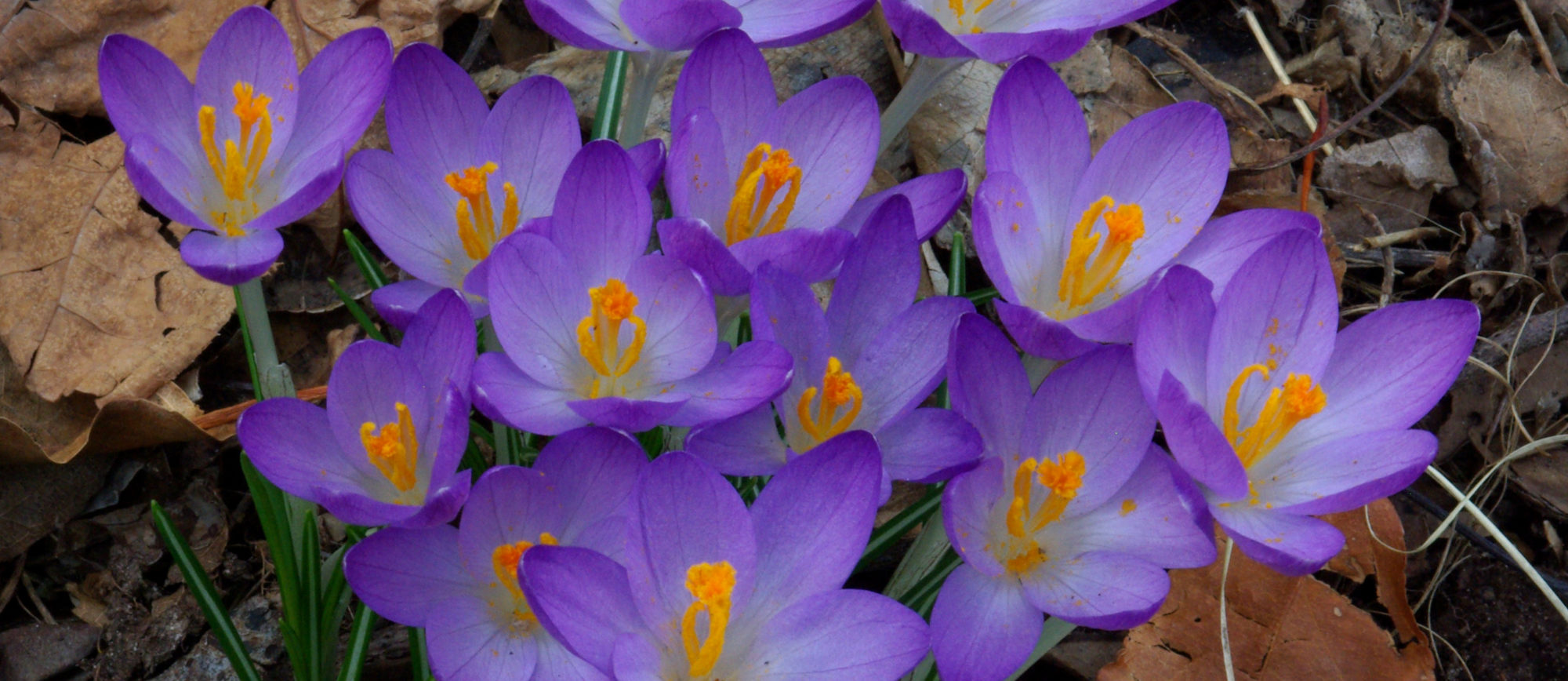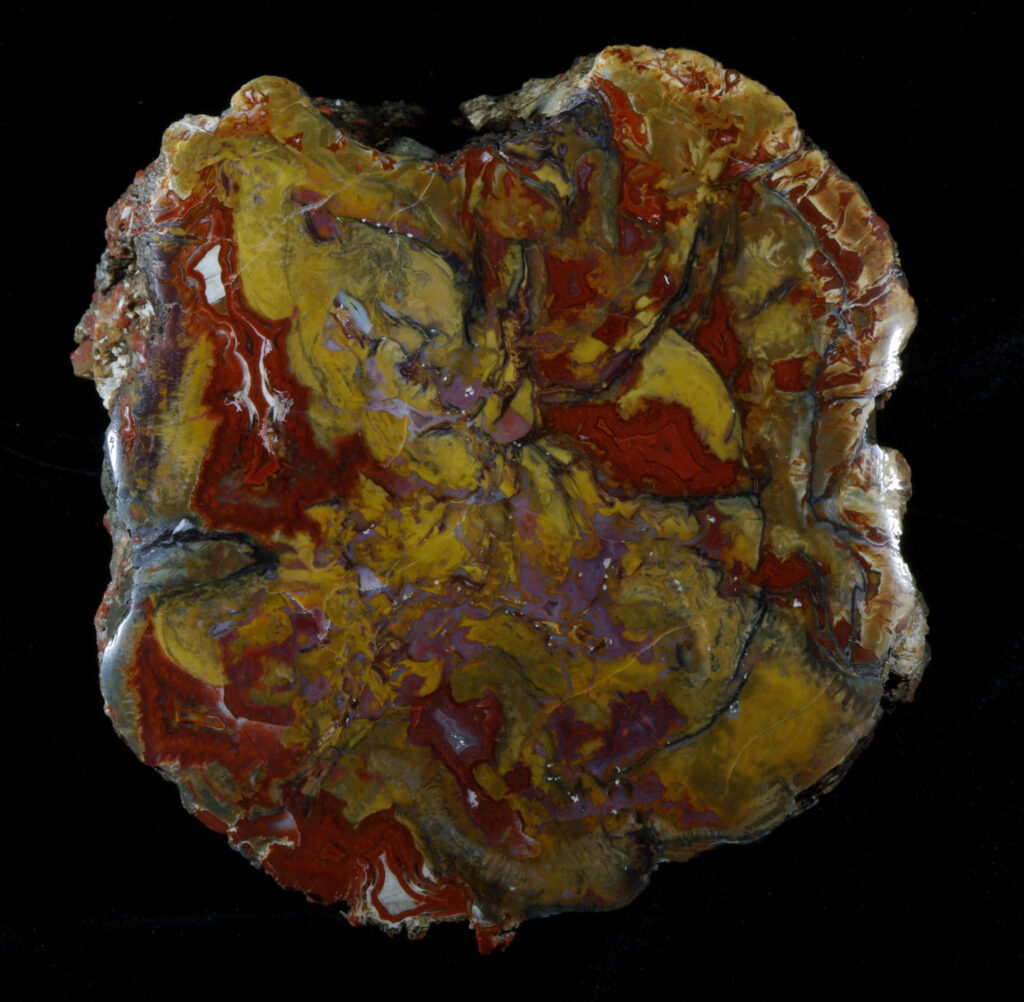
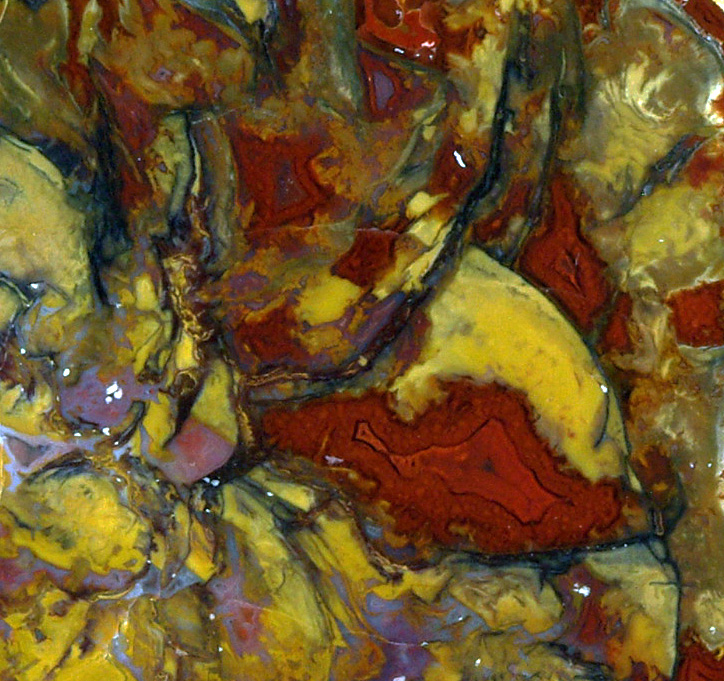

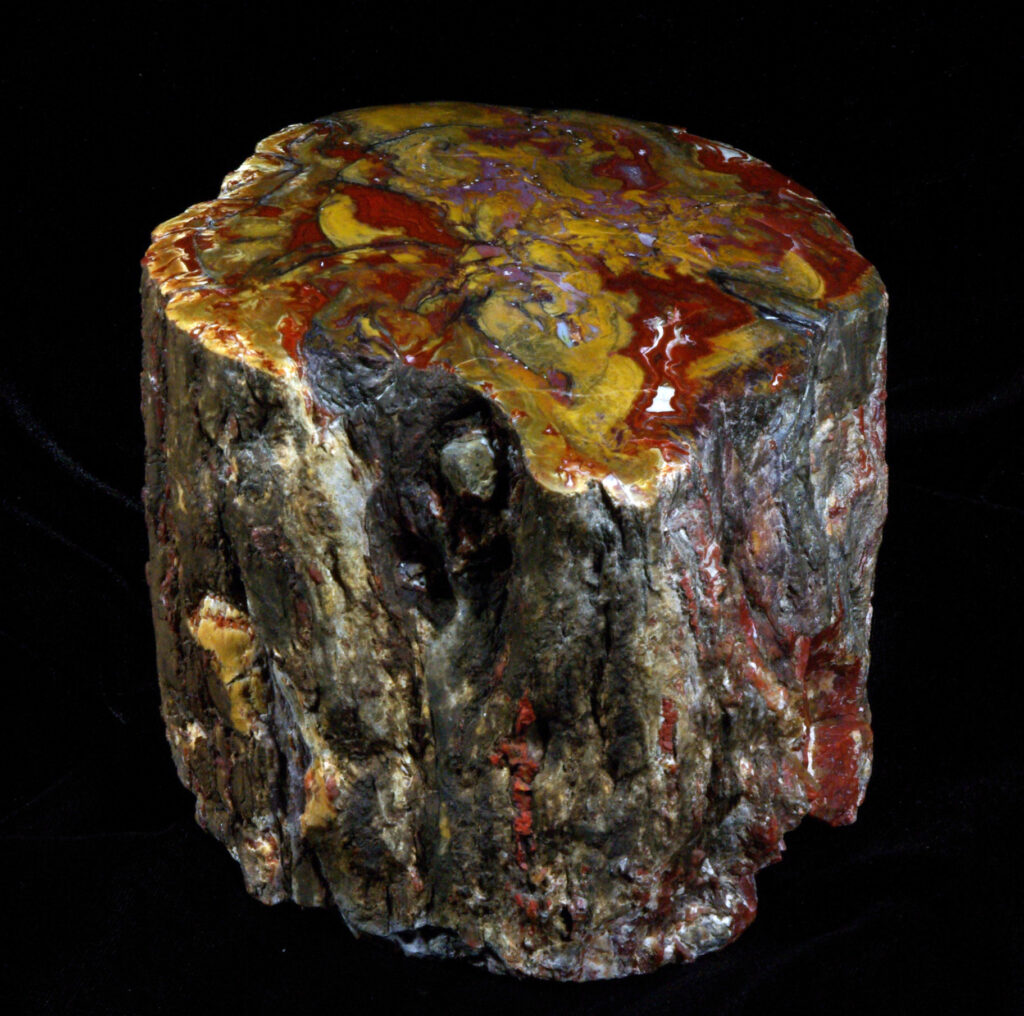
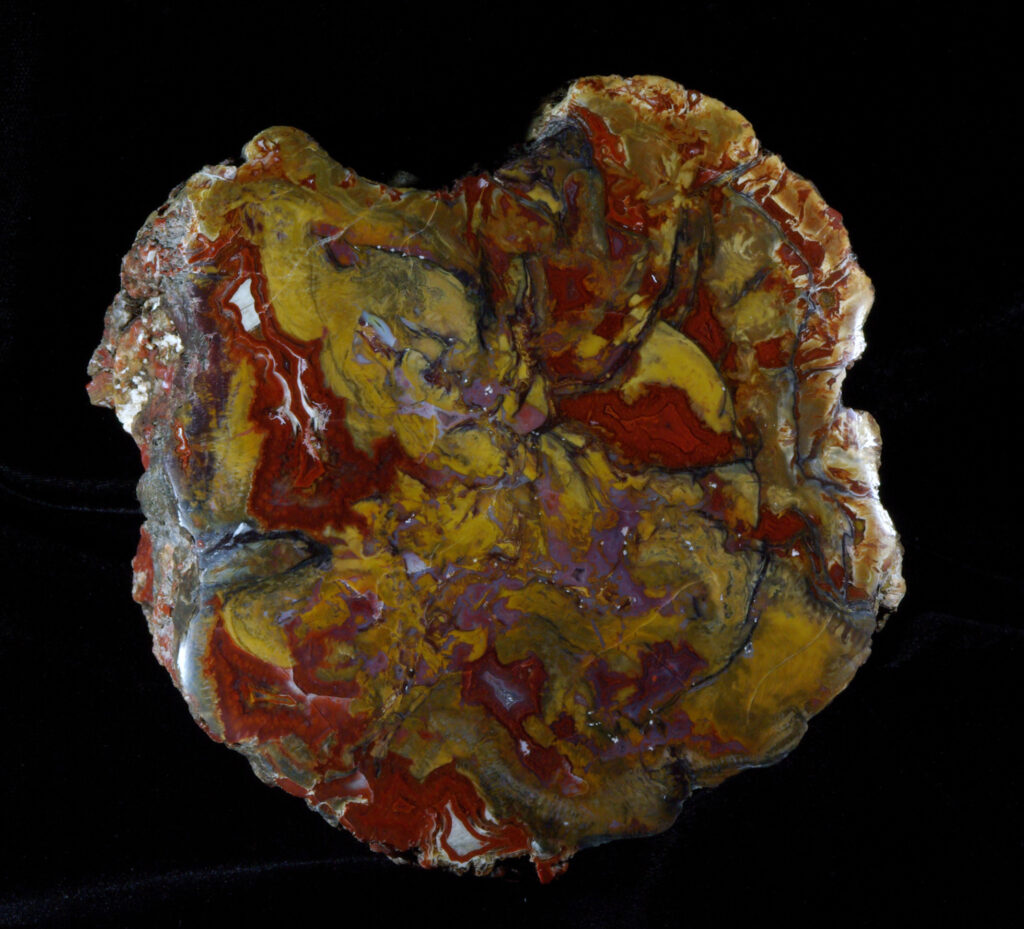
The Talk of The Show. Eastern Utah. Jurassic; Morrison Formation. Full round solid limb section with elegant colors. Perfect exterior with an exquisite knot. All natural but for the polished end. Two page centerfold in Ancient Forests, pages 202 and 203. Definitely a candidate for the most amazing fossil log ever found. When I look into the face of this piece, it looks back. 12 by 11 cm polished face; ten cm tall; five pounds and two ounces. (see footnote)
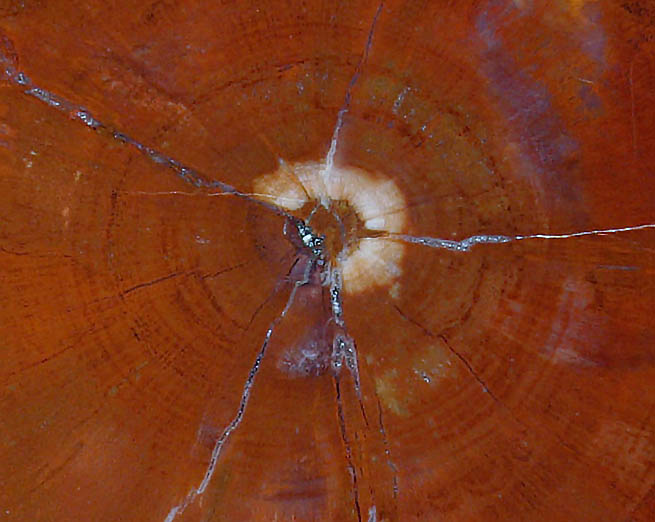
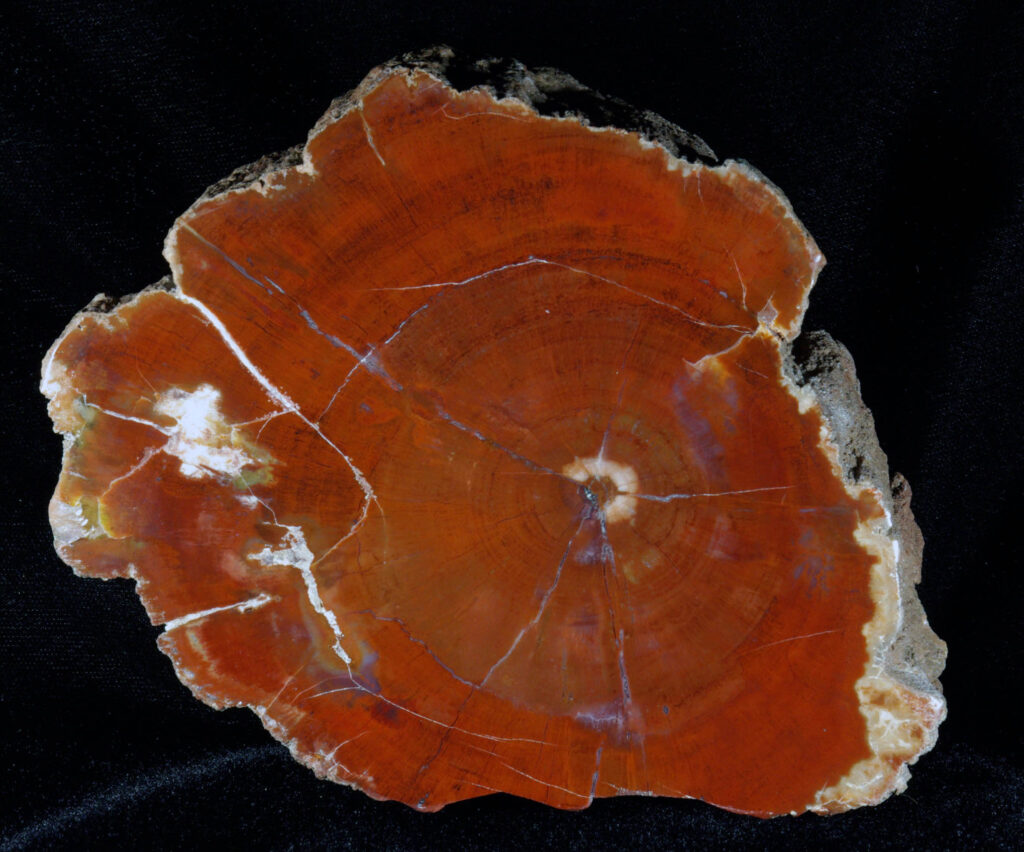
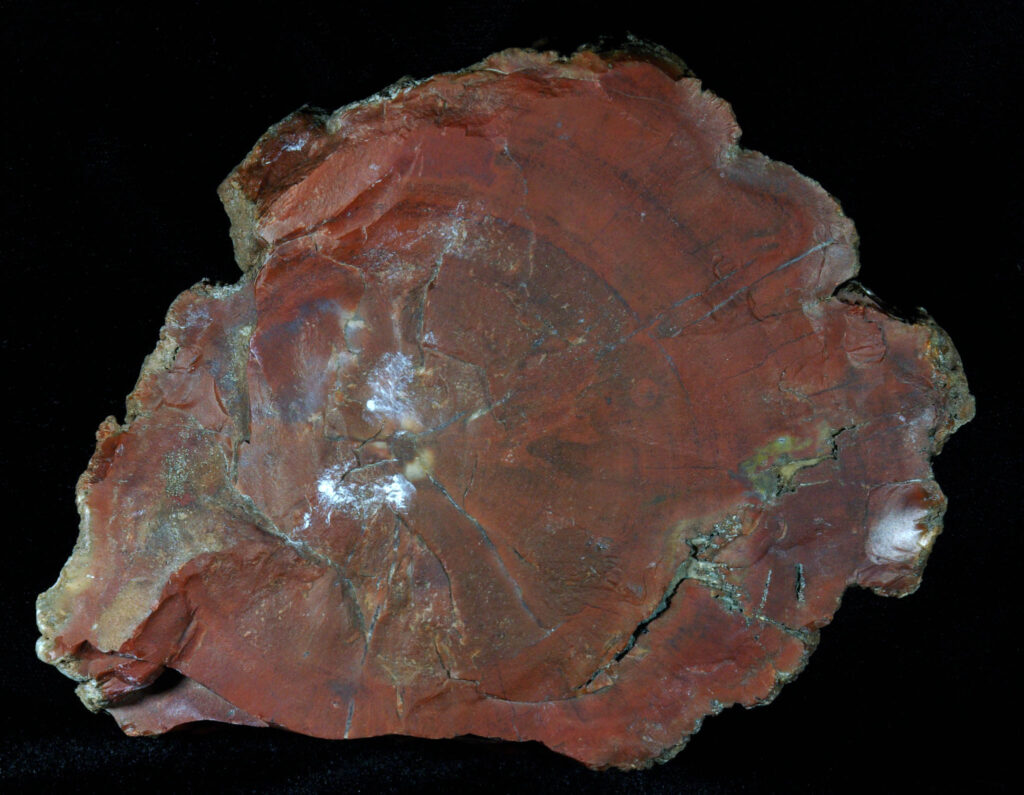
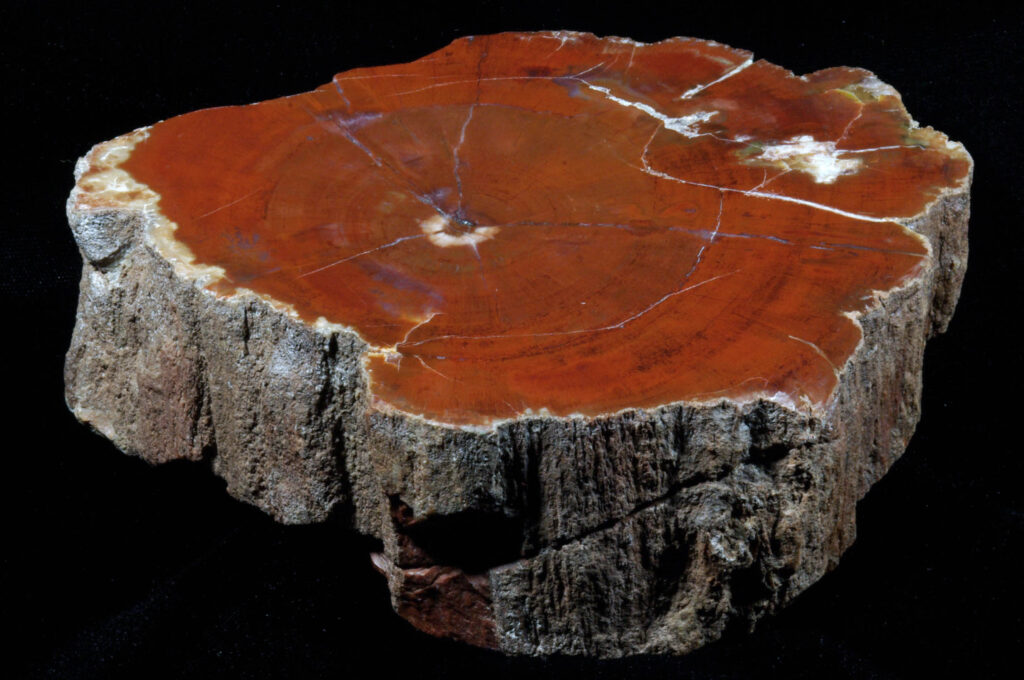
2. Henry Mountain area. Trachyte Canyon. Found before the days of Lake Powell. I’ve hiked up Trachyte Canyon from Lake Powell several miles and saw no evidence of petrified wood, so I expect this came from lower in the lake before the lake was there. Triassic; Chinle formation. Full round remarkably perfect probable Araucaria log end with bounteous sublime reds blending to yellow/green. Fine, glassy, mineralization. No glues or fillers. 15 by 11 cm polished face; up to 5 cm; two pounds and eleven ounces.
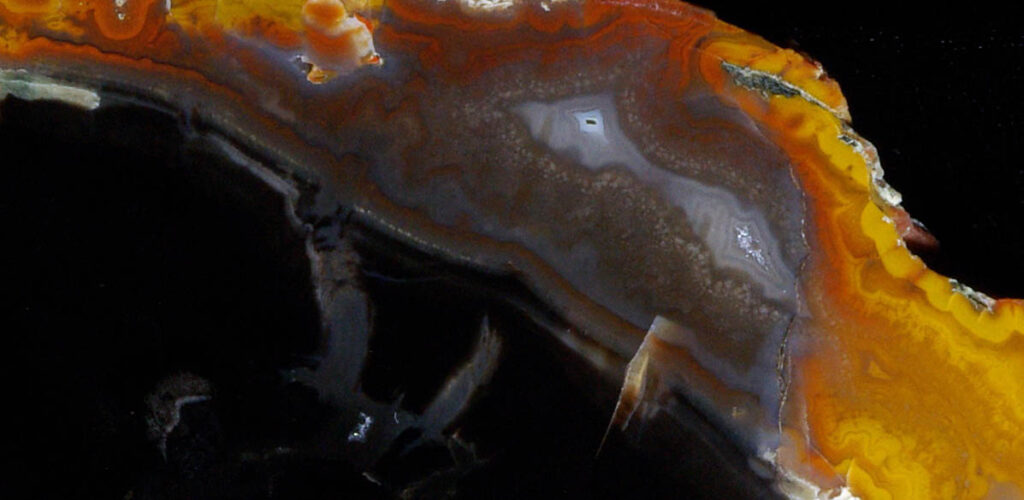
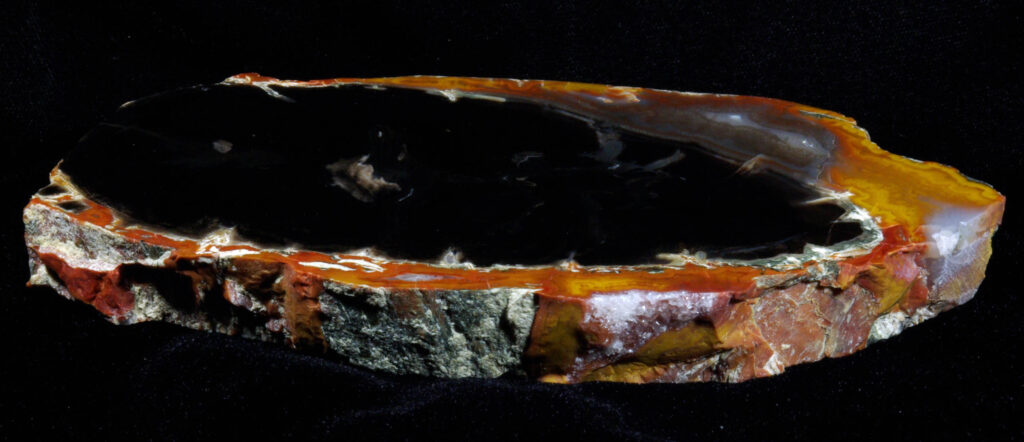
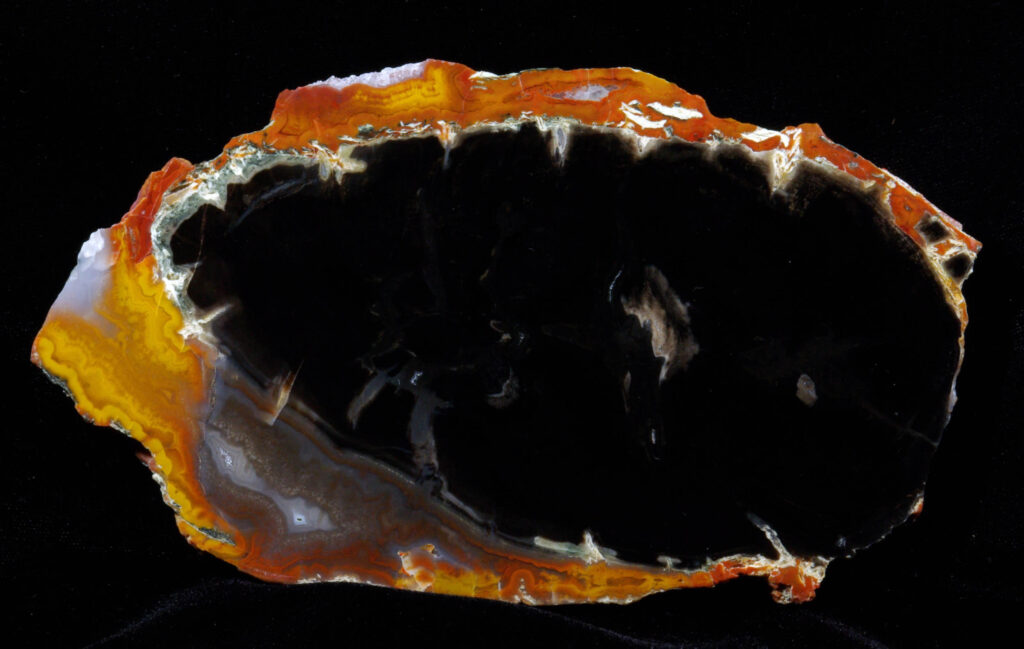
3. Yellow Cat. The famous, original site. Jurassic; Morrison formation. Full round remarkably perfect probable Araucaria thick slice with a large, egg-shaped, center of black glassy agaty silica, mostly framed by awe in the form of unworldly mineralization. No glues or fillers. 16 by 9.5 cm polished face; 19 mm thick (cut by FJD); one pound and two ounces.
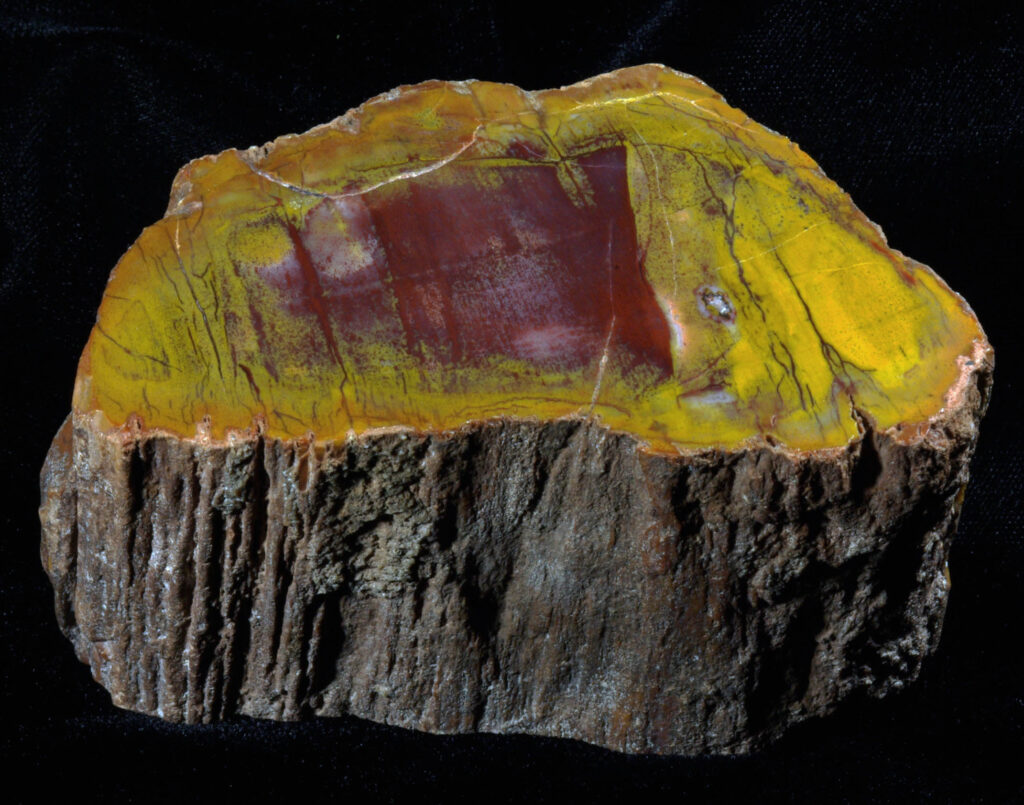
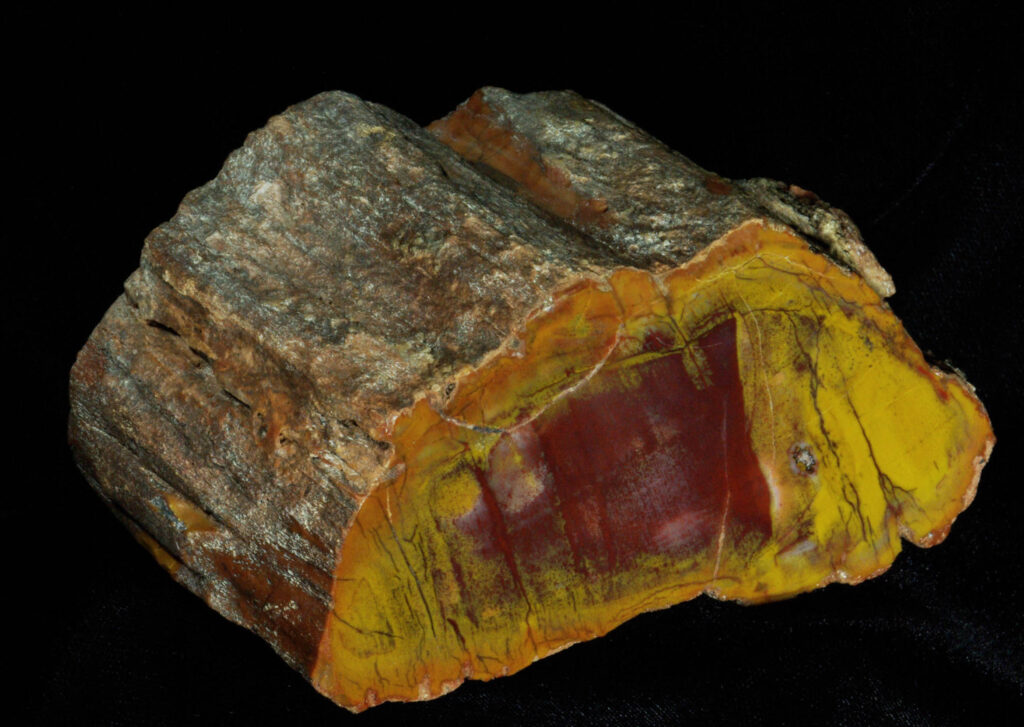
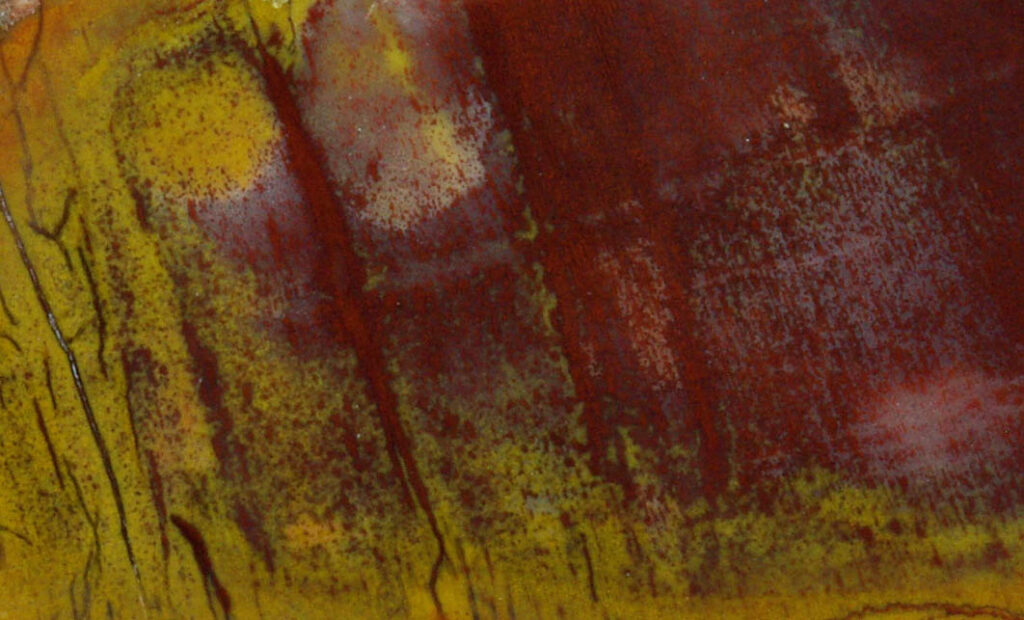
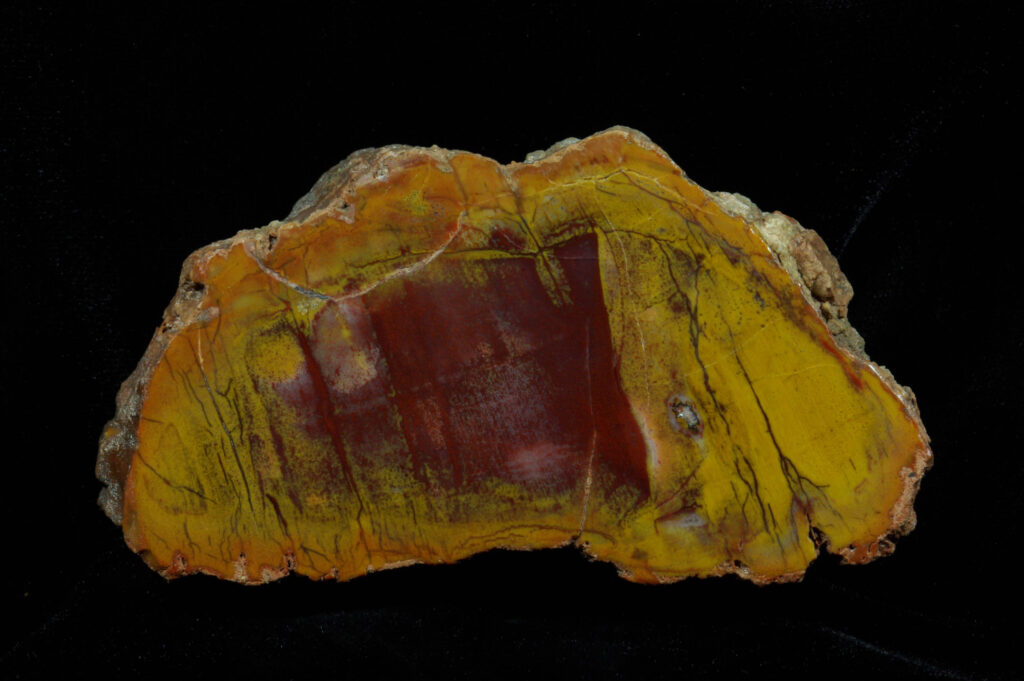
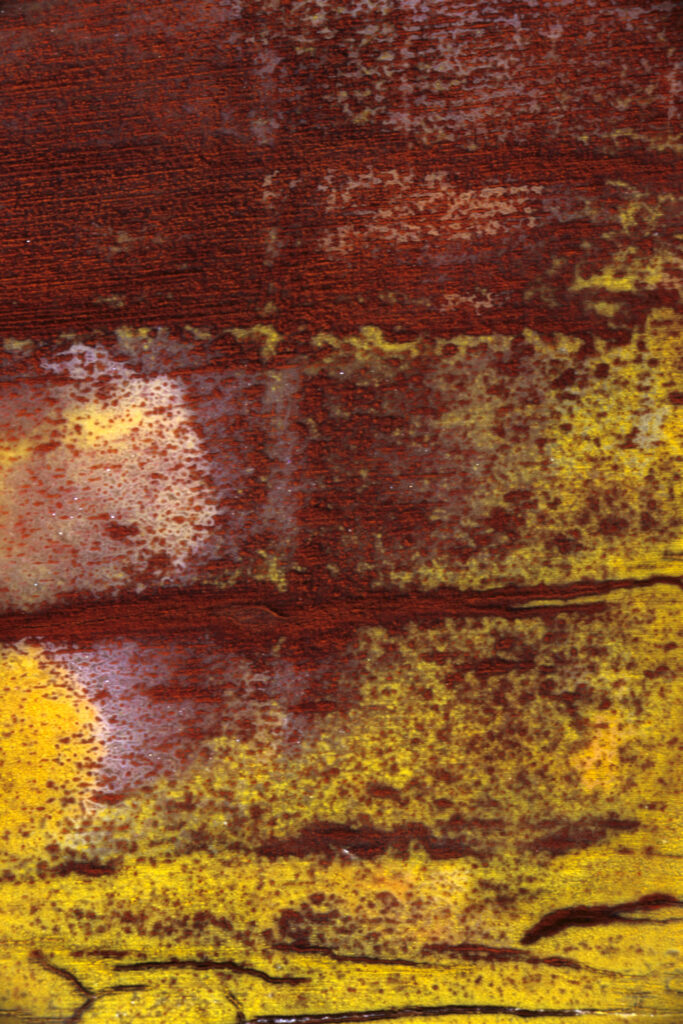
4. Henry Mountains, southern drainage. Jurassic, Morrison formation. Specimen round. Extra nice exterior. Stunning, unusual colors especially featuring yellow to purple-red interplay, as if one becomes the other. Picture in Ancient Forests on pages 276 and 282. No glues or fillers. 53 by 105 mm polished face; 63 mm tall; one pound and nine ounces.
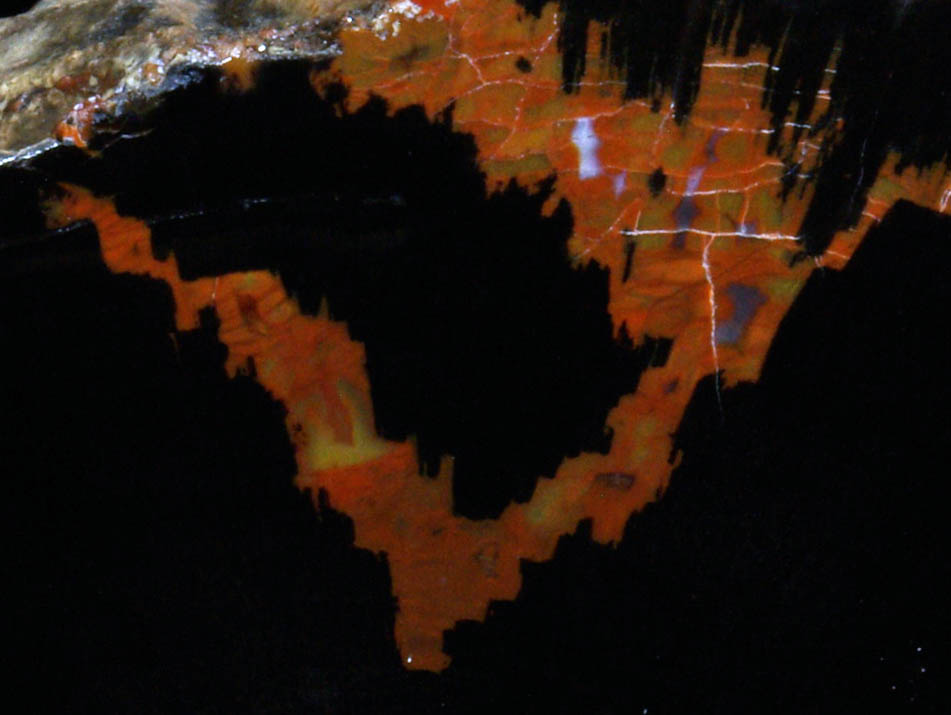
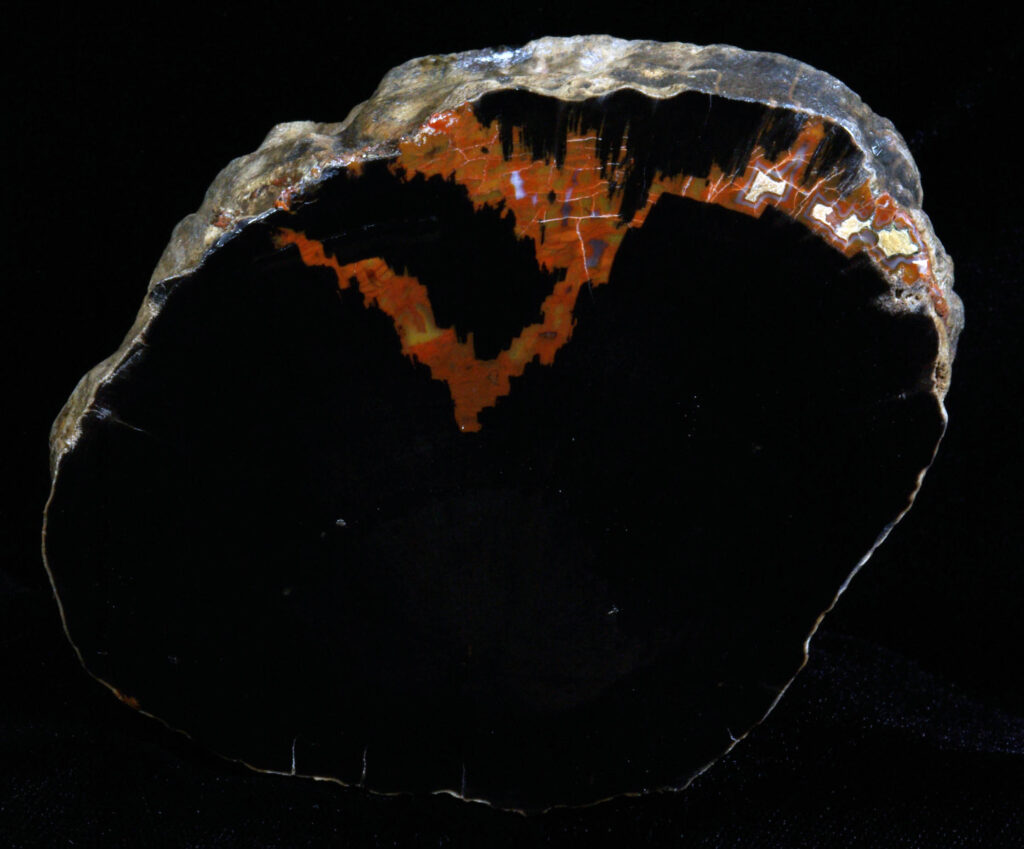
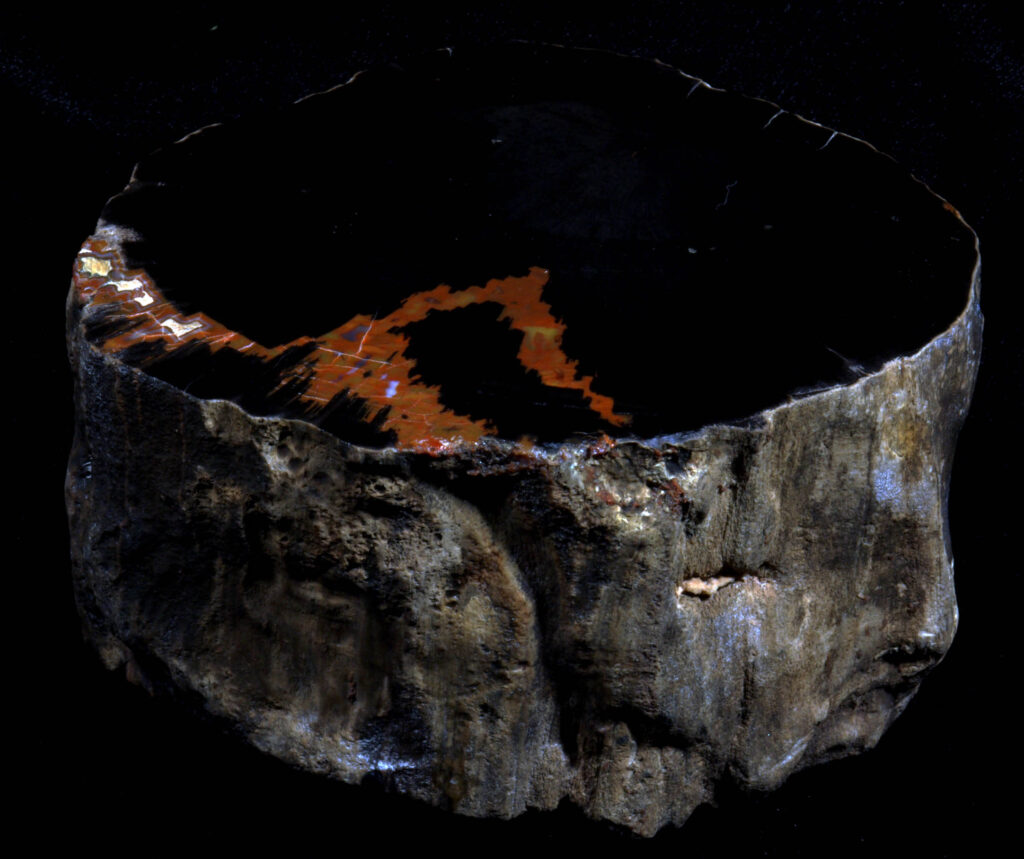
5. Circle Cliffs. Triassic; Chinle formation. Full round remarkably perfect probable Araucaria log section. One natural end. Glassy black with red/orange pattern. No glues or fillers. 9 by 7 cm polished face; 5 cm tall; one pound and four ounces.
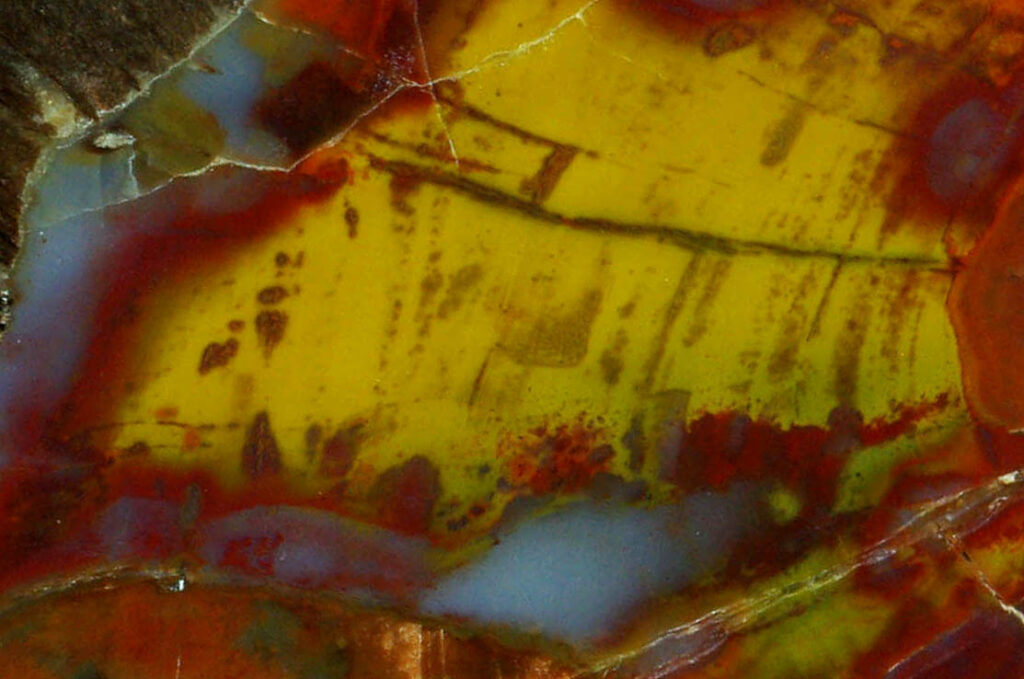
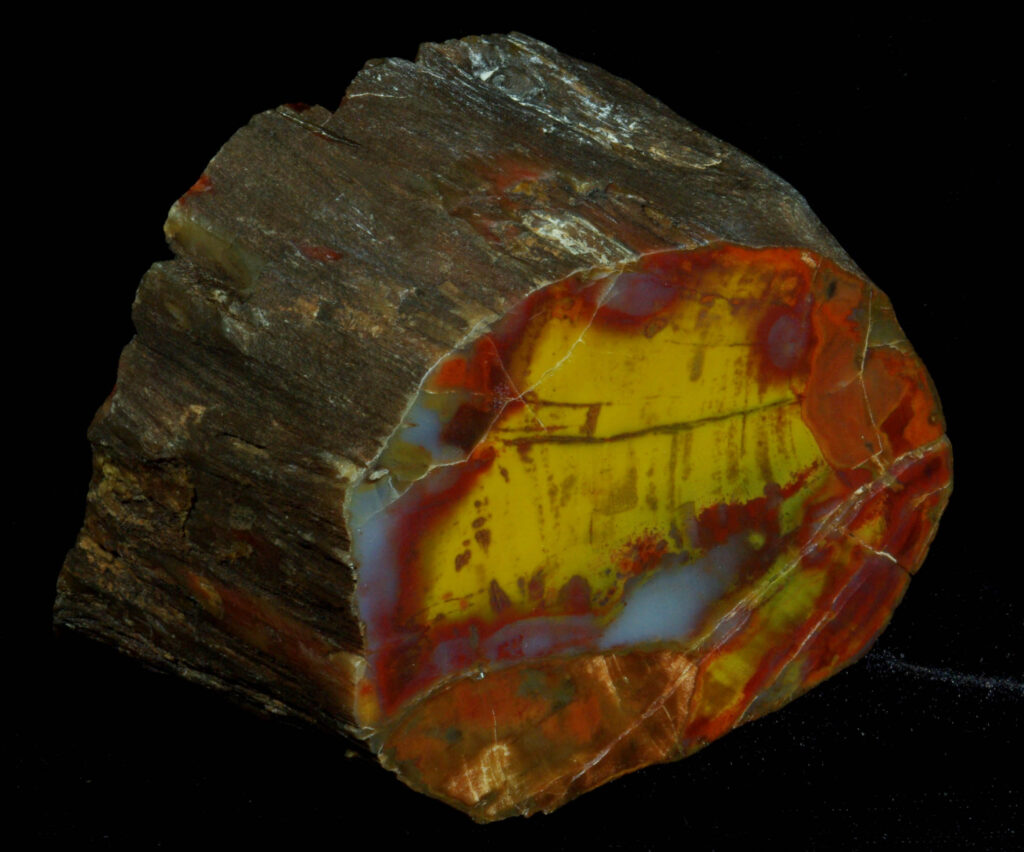
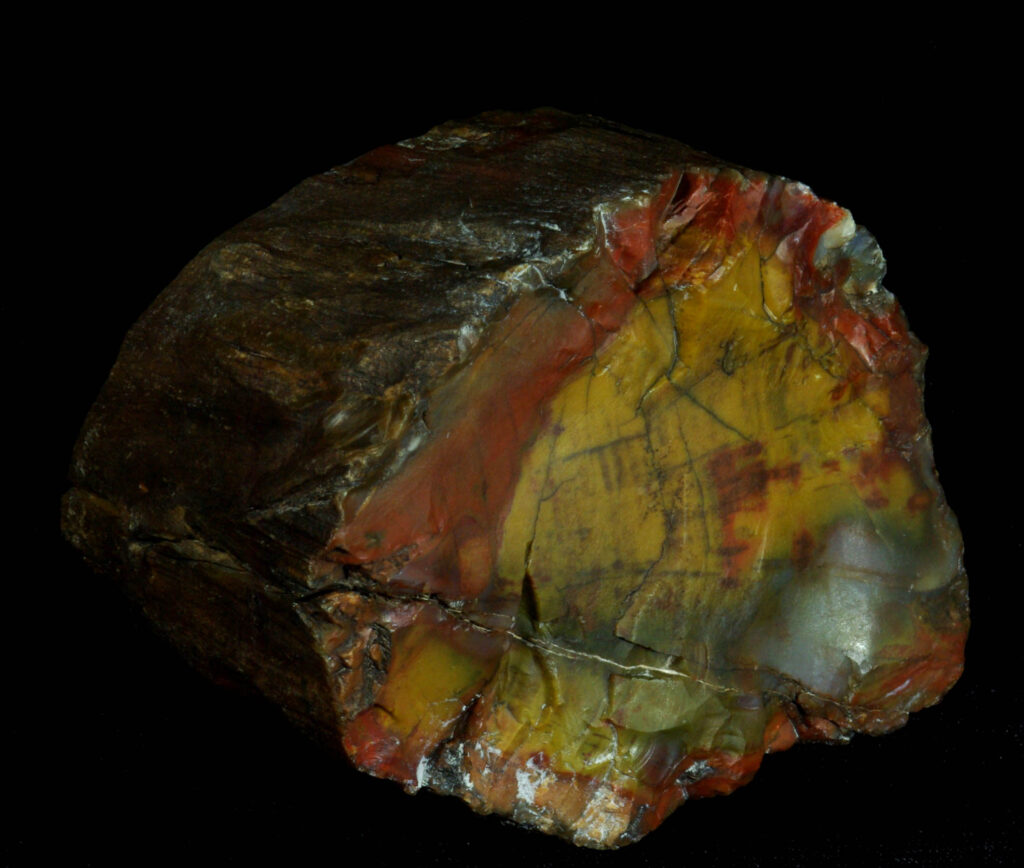

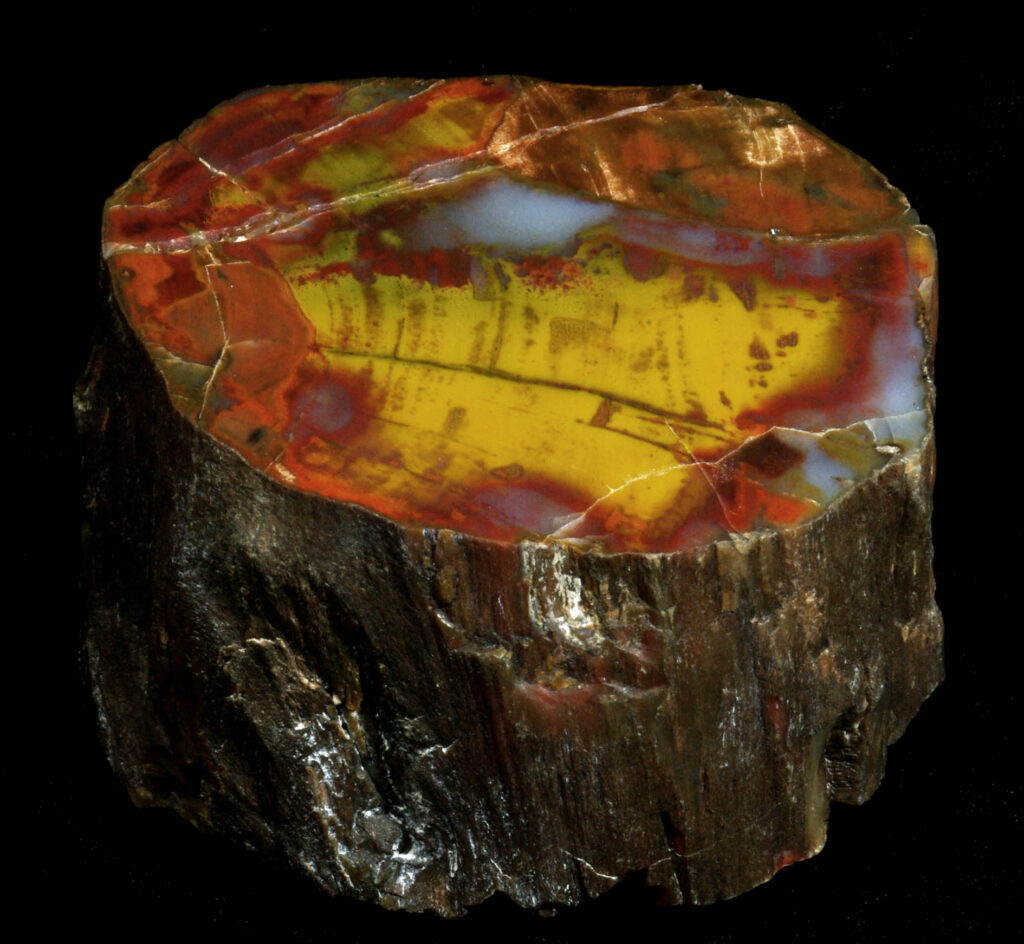
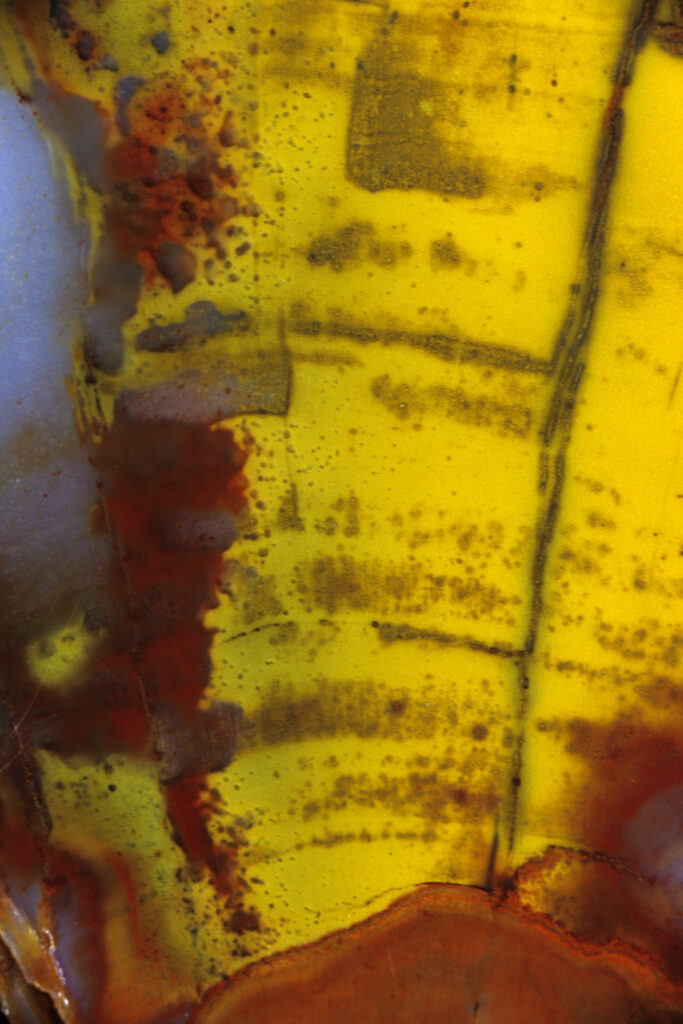
6. Henry Mountains, southern drainage. Jurassic, Morrison formation. Something of a perfect Henry Mountain specimen with all one could want: specimen-as-good-as-full round, remarkably perfect, probable Araucaria, log section with killer mineralization in all the right colors, a gnarly exterior with a nice knot, and a beautiful natural end as well. Pictured in Ancient Forests on page 283. No glues or fillers. 55 by 73 mm polished face; 5.5 cm tall; one pound.
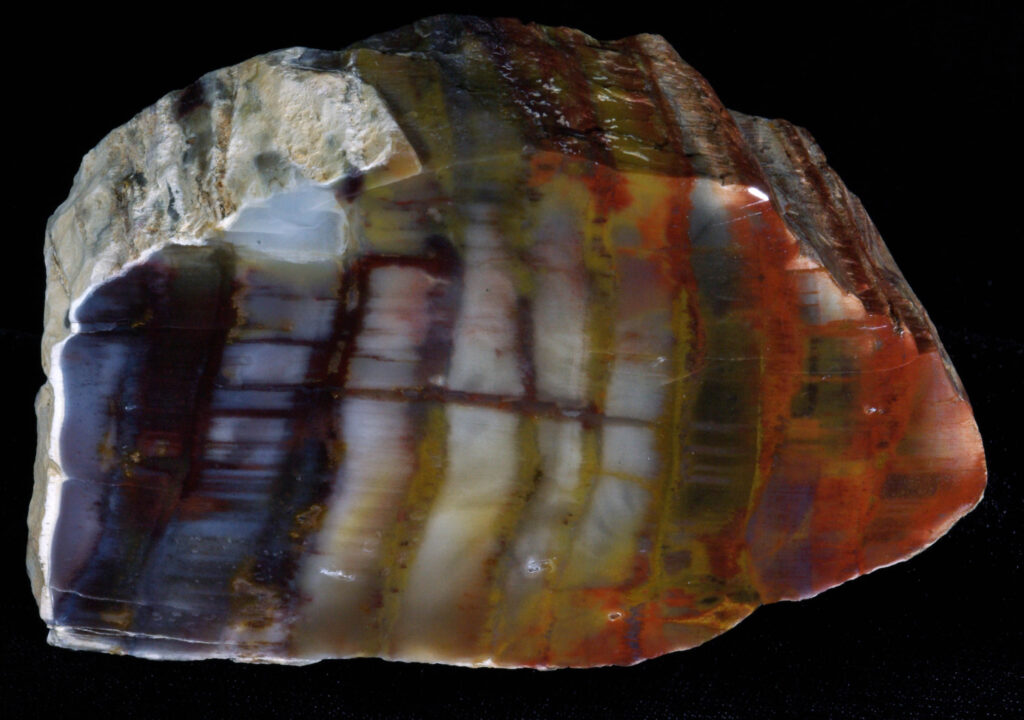
7. Henry Mountains, southern drainage. Jurassic, Morrison formation. Gemmy specimen round of a much larger tree as evidenced by the growth rings. Very different. Very beautiful. No glues or fillers. 8.5 by 5 cm polished face; up to 45 mm thick; eleven ounces.
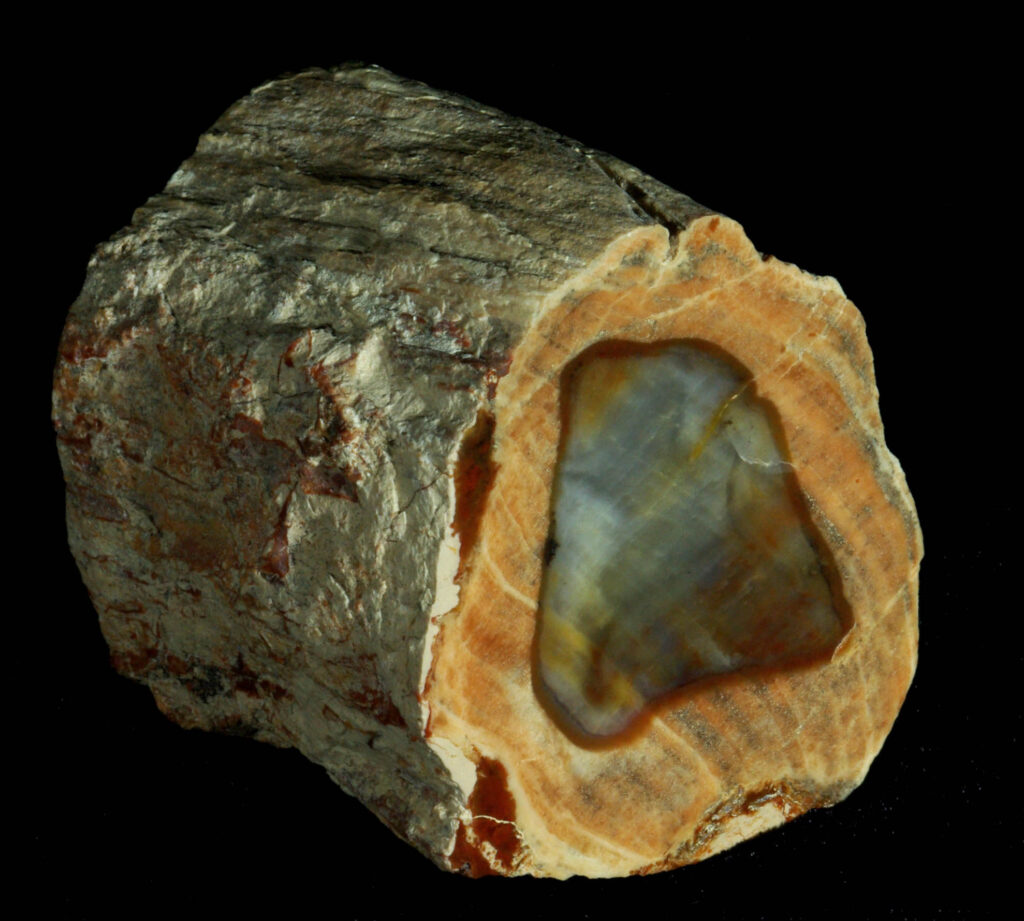
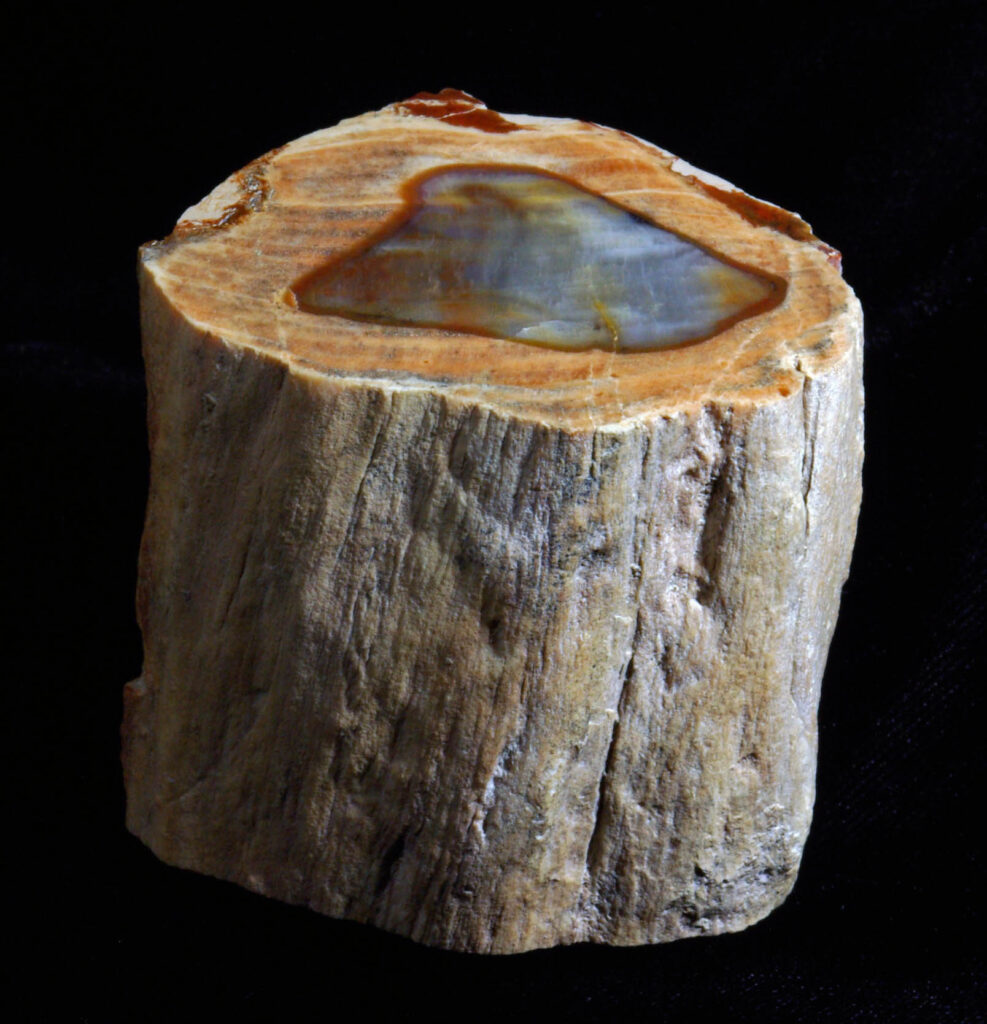
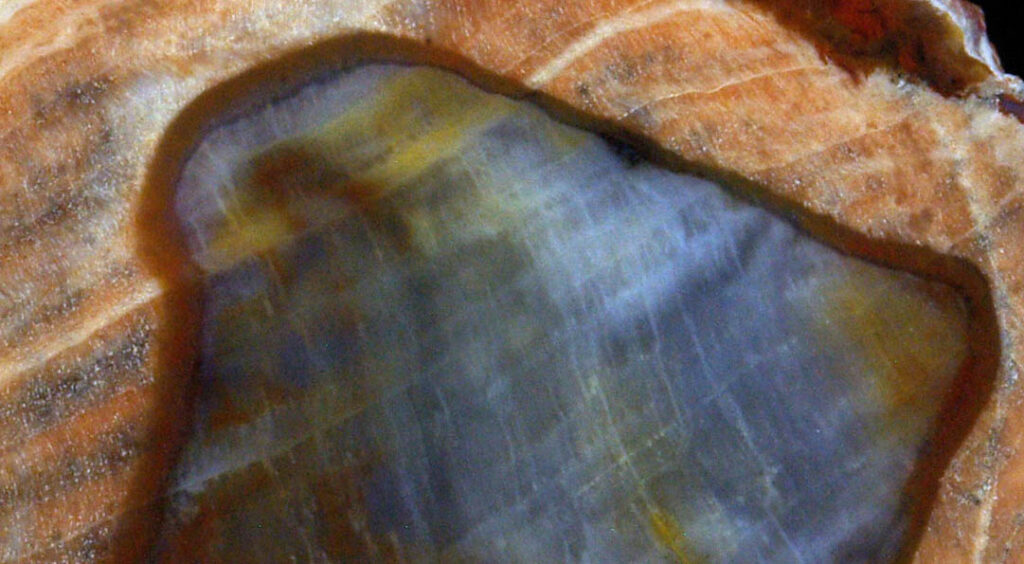
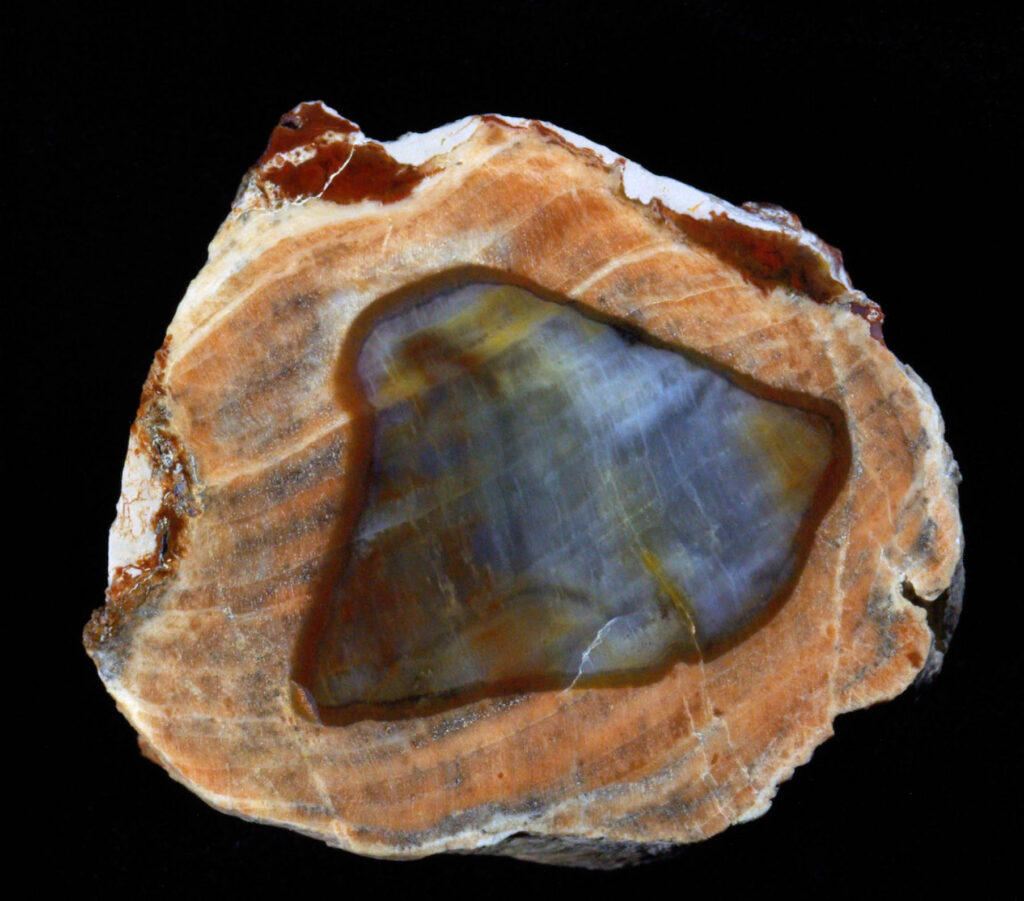
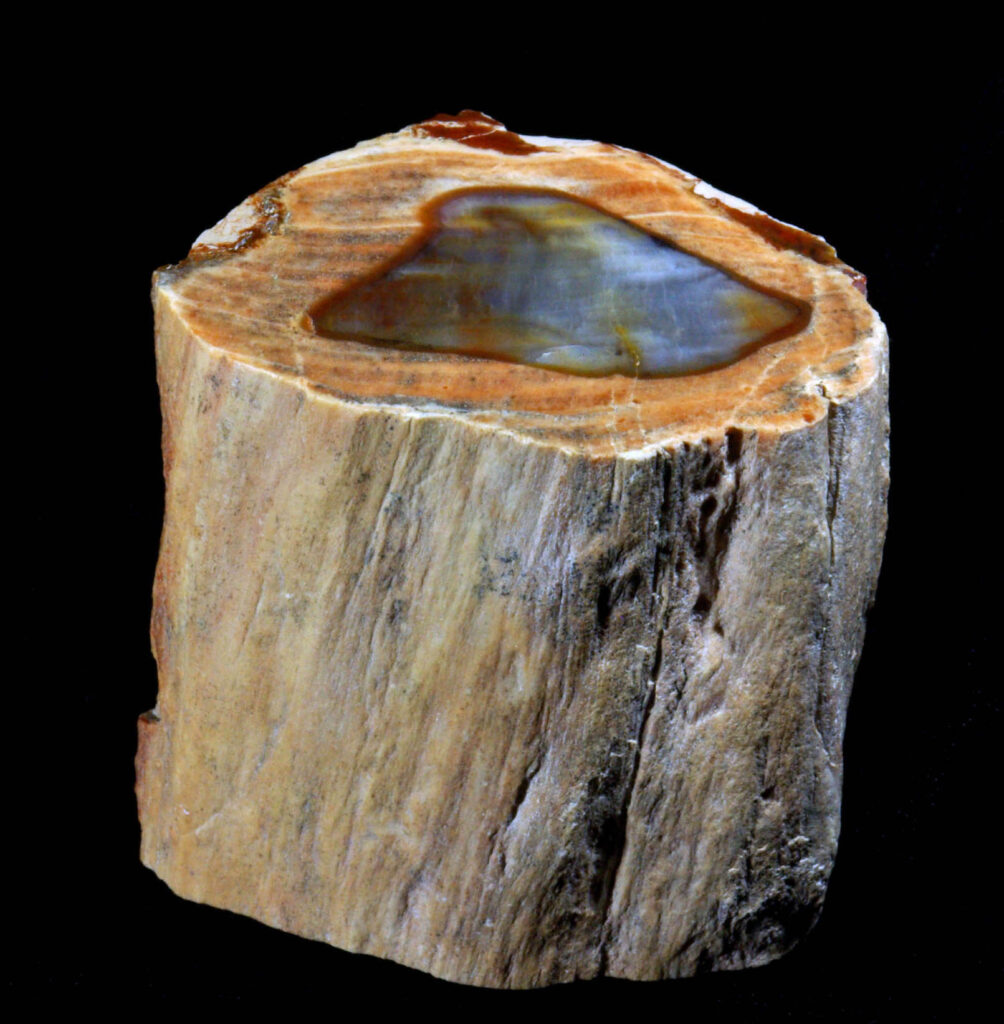
8. Escalante. Jurassic, Morrison formation. Specimen round. No glues or fillers. 4 by 5 cm polished face; 48 mm tall; 7.5 ounces. (see footnote)
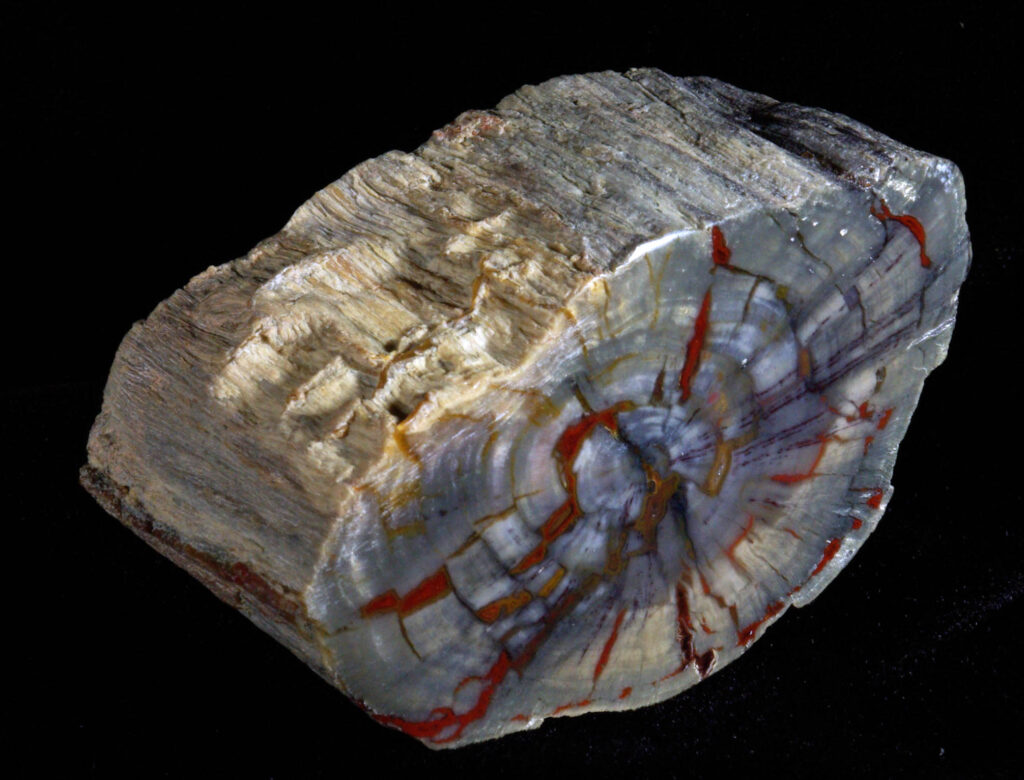
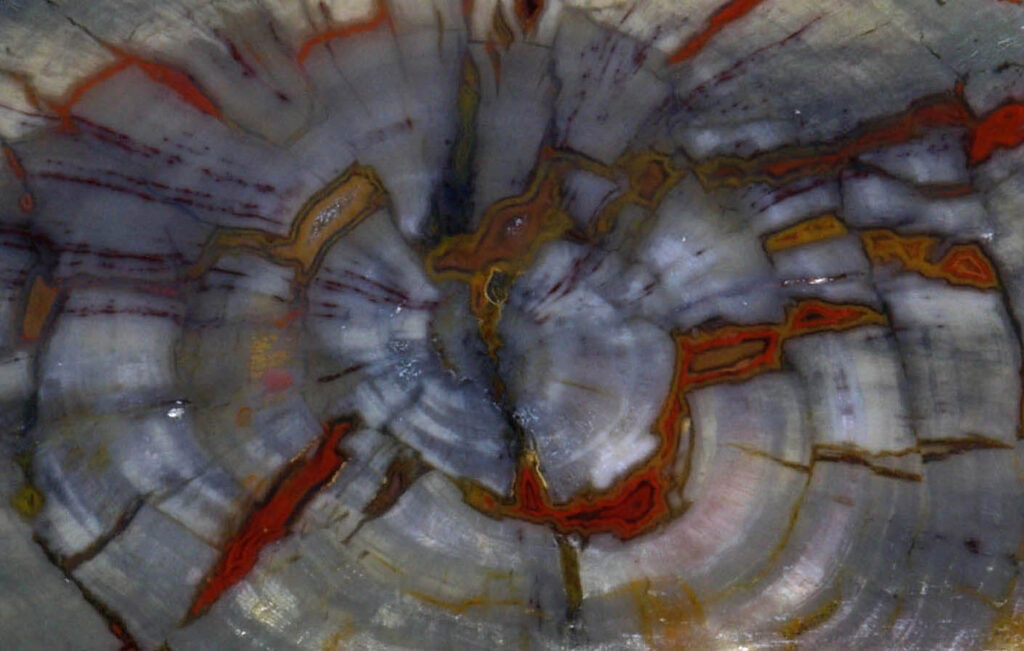
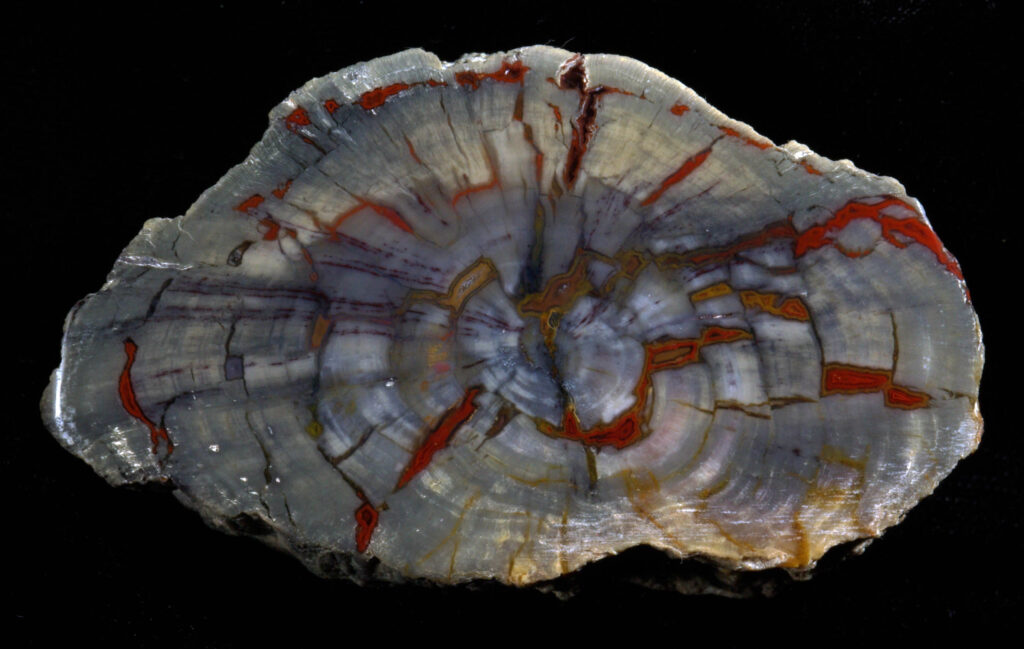
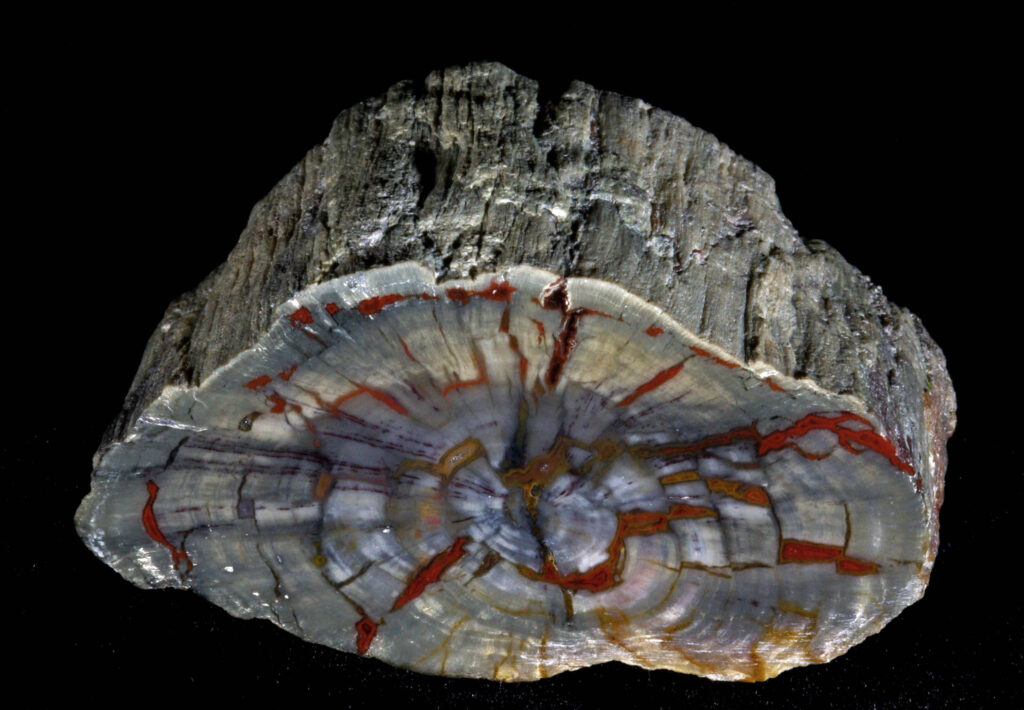

9. Henry Mountains, North Wash Knob. Jurassic, Morrison formation. Full round limb section cut and polished on both ends, revealing a lovely array of red and yellow agate. A unique type from an area no larger than a few acres. Picture in Ancient Forests on page 278. No glues or fillers. 38 by 67 mm polished face; up to 38 mm thick; five ounces.
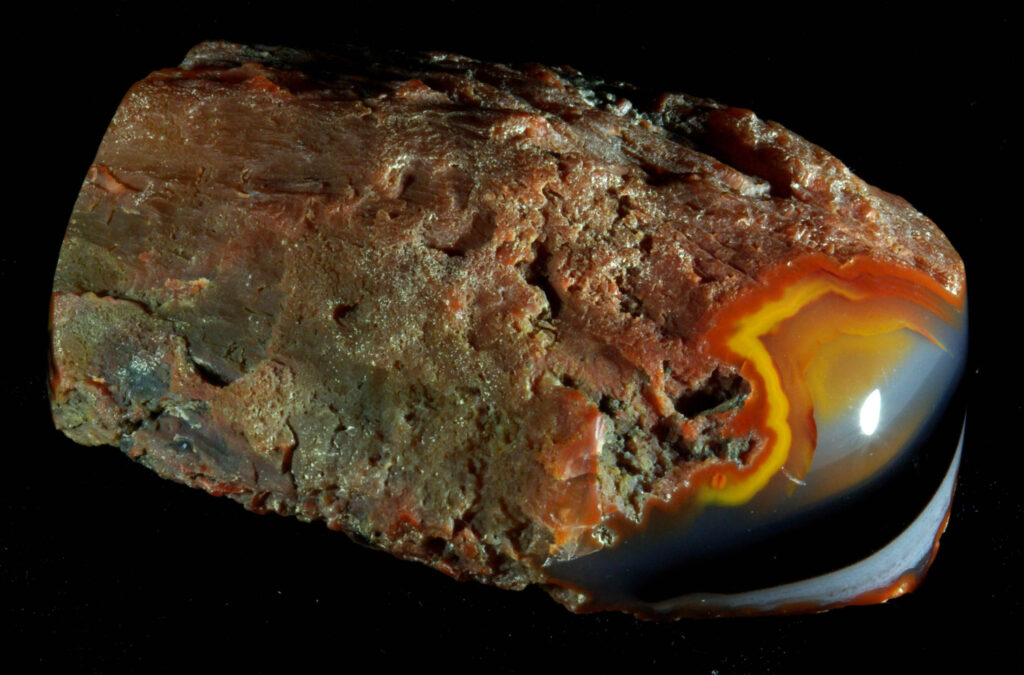
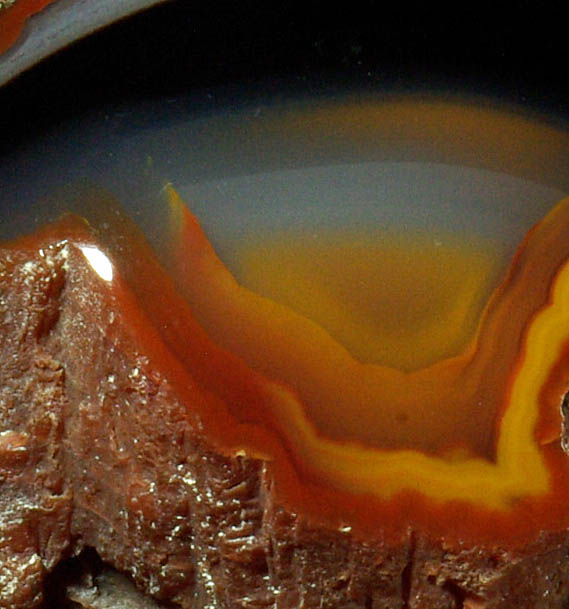
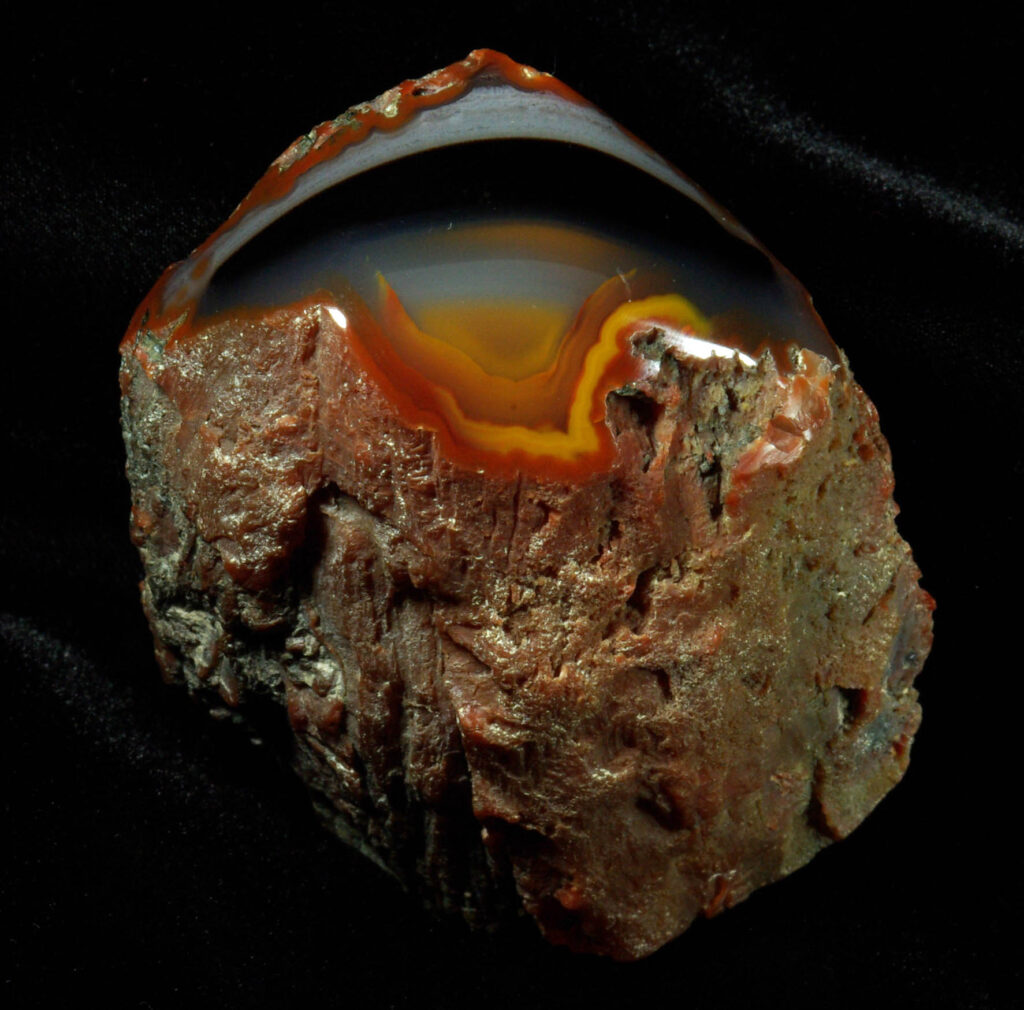
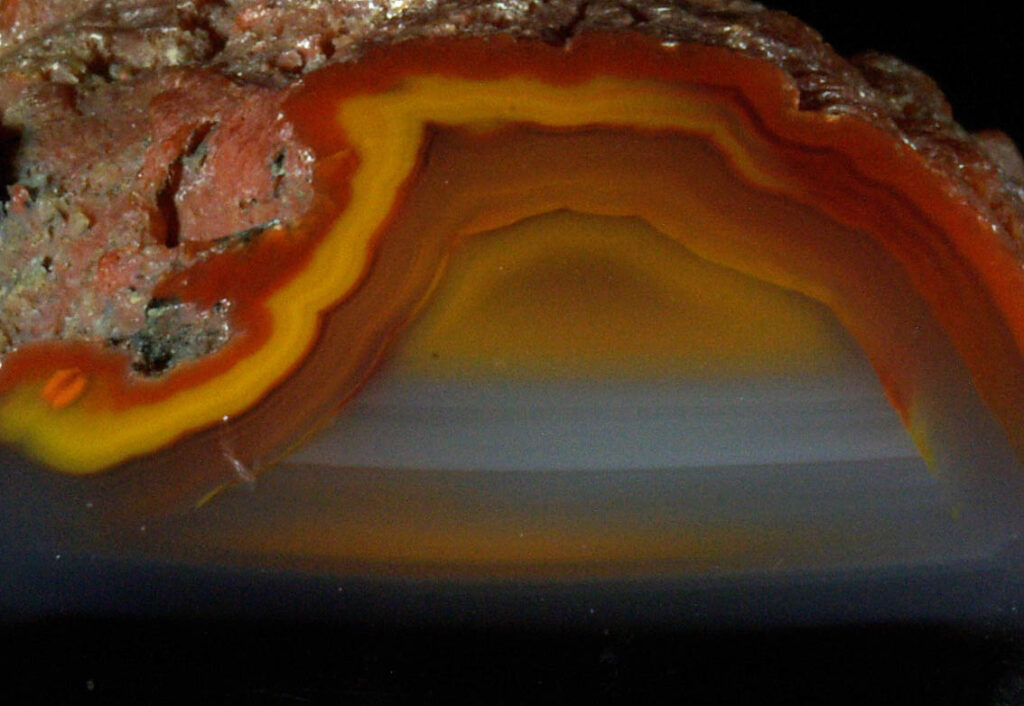
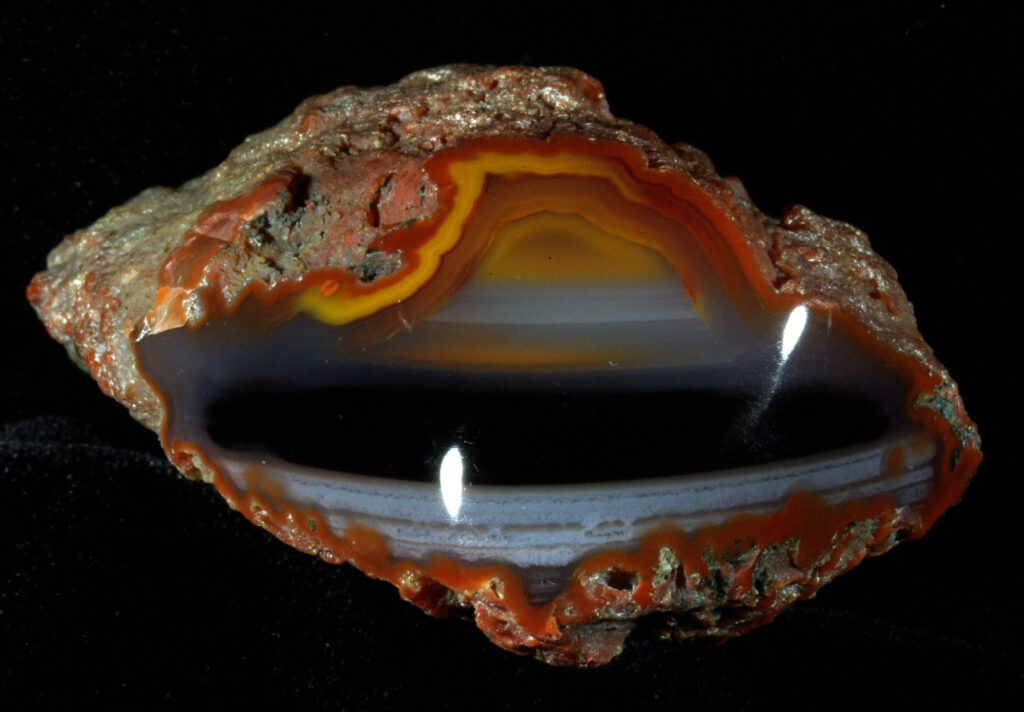
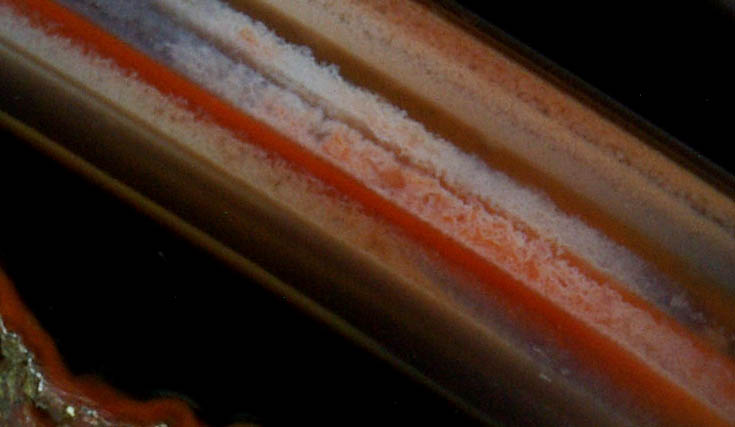
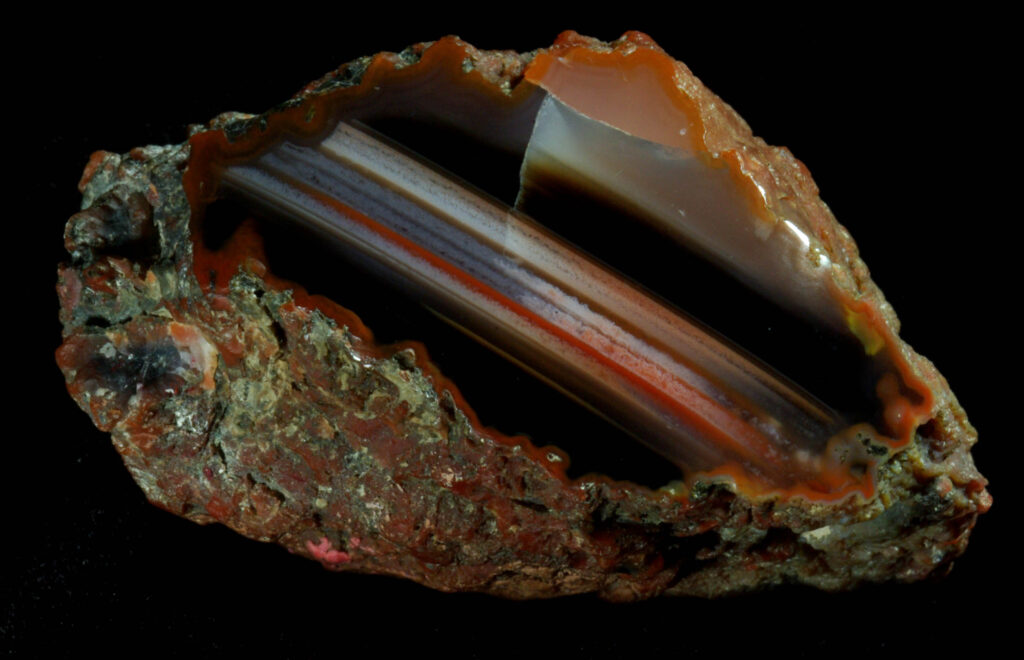
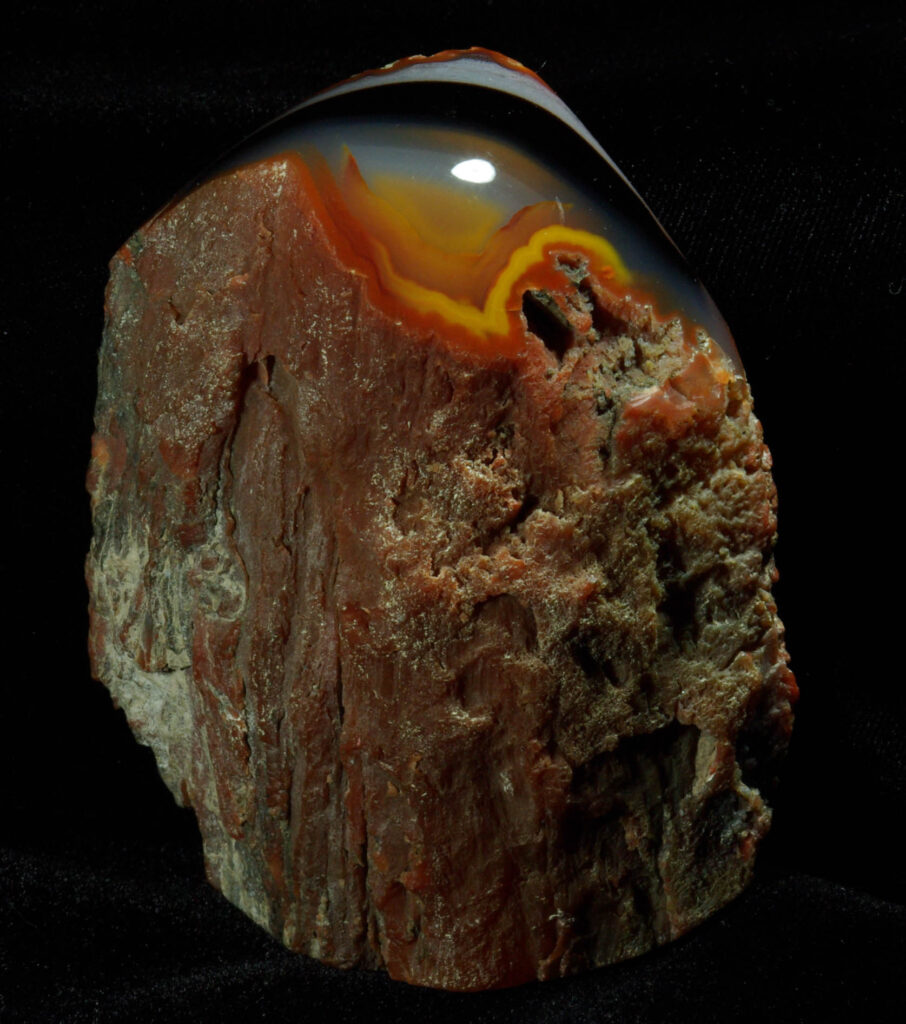
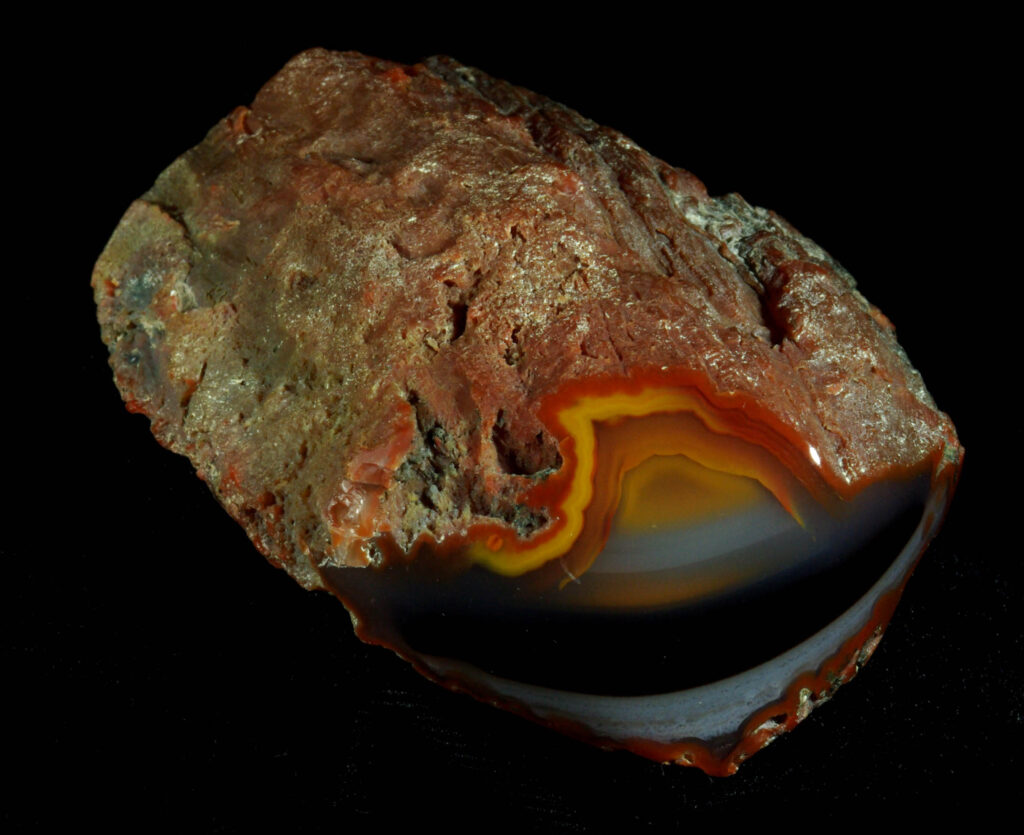
10. Yellow Cat. Jurassic; Morrison formation. Full round remarkably perfect limb cast with excellent wood impression and amazing onyx mineralization. No glues or fillers. 3.5 by 6 cm larger dome-polished face; 2.5 by 5 cm smaller dome-polished face 83 mm long; ten ounces.
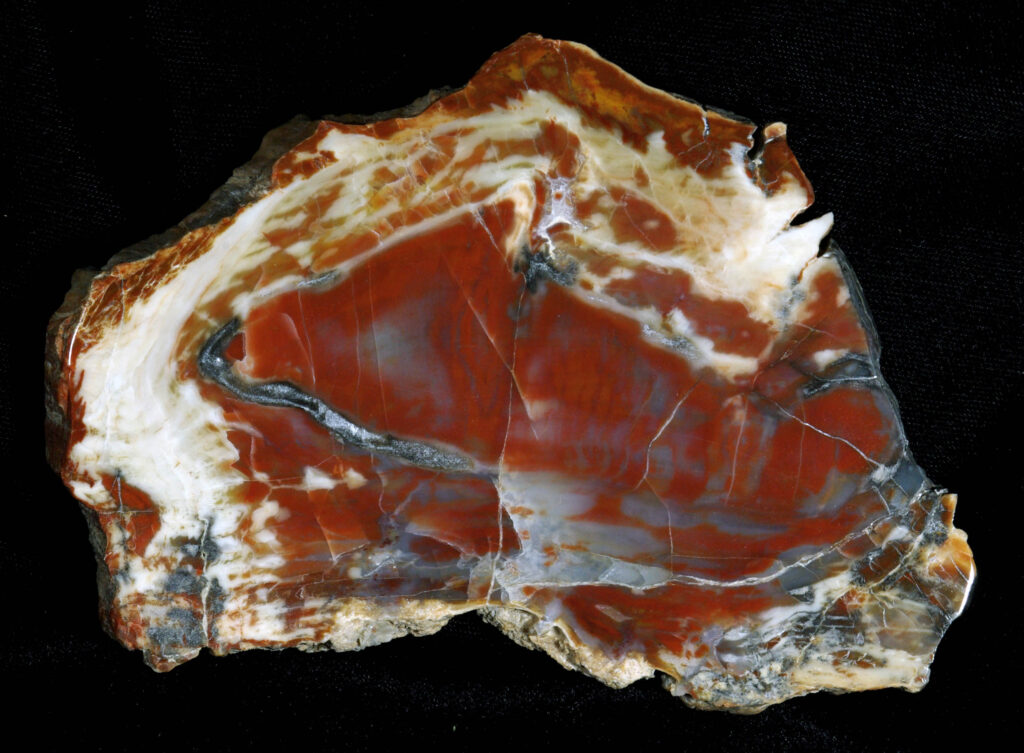
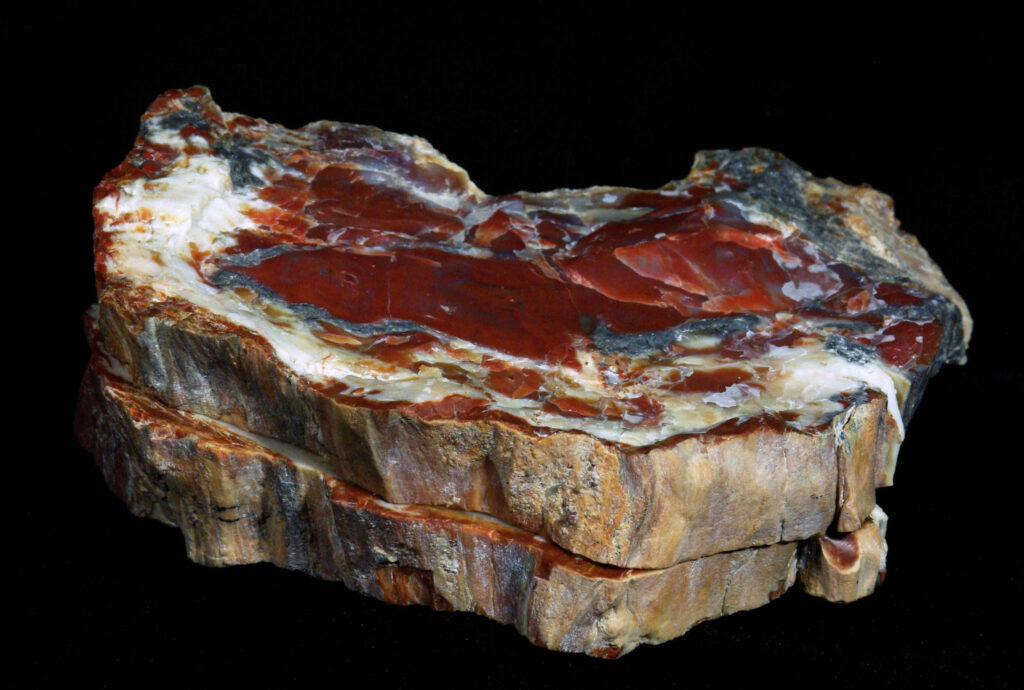
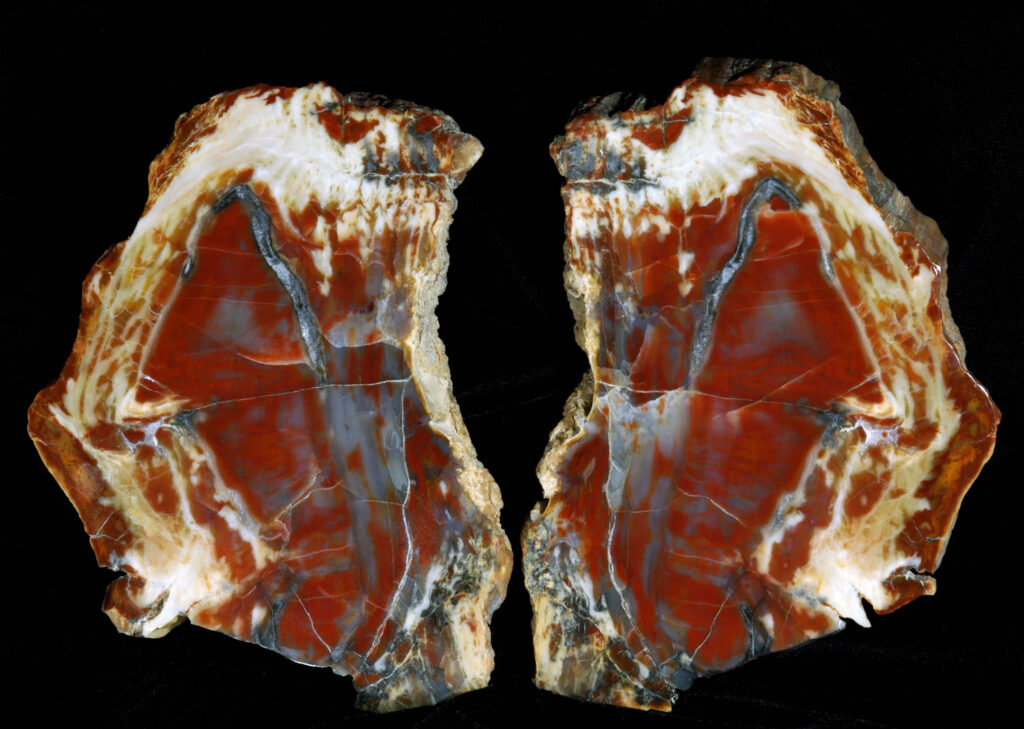
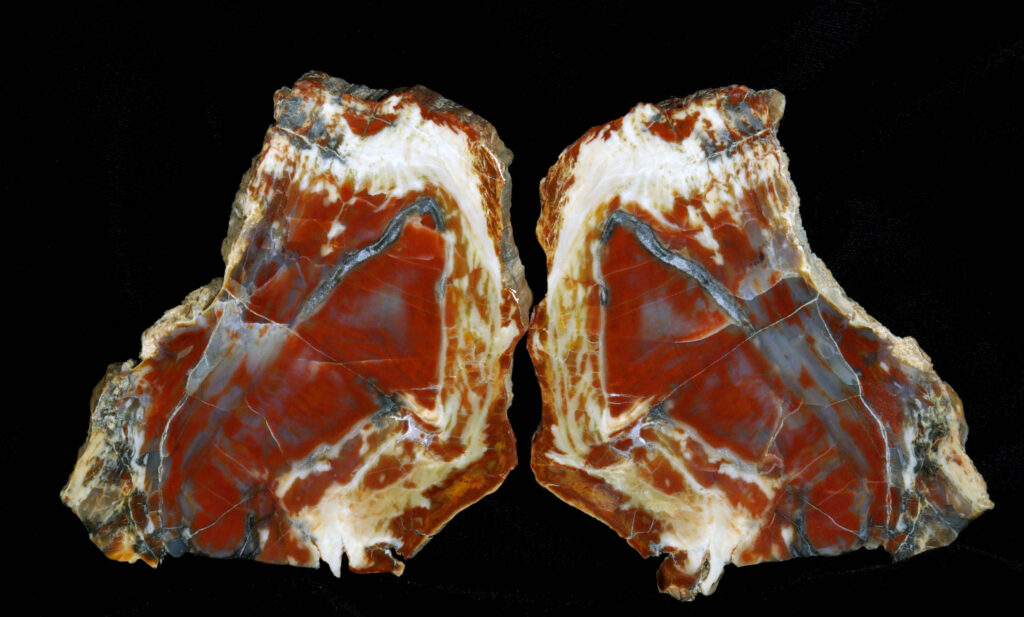
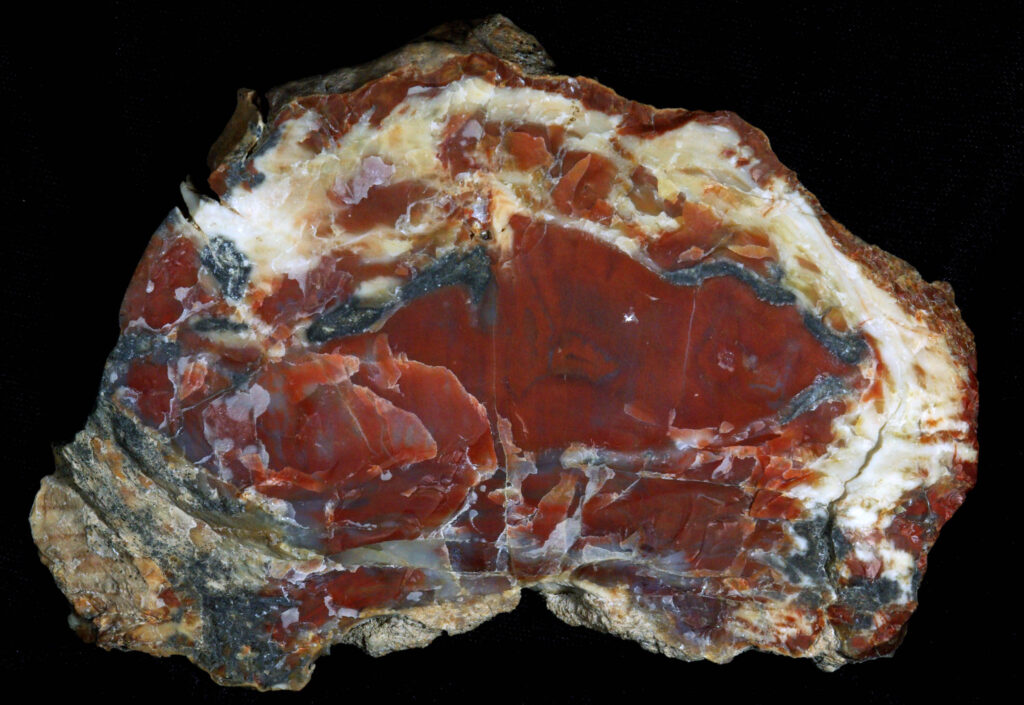
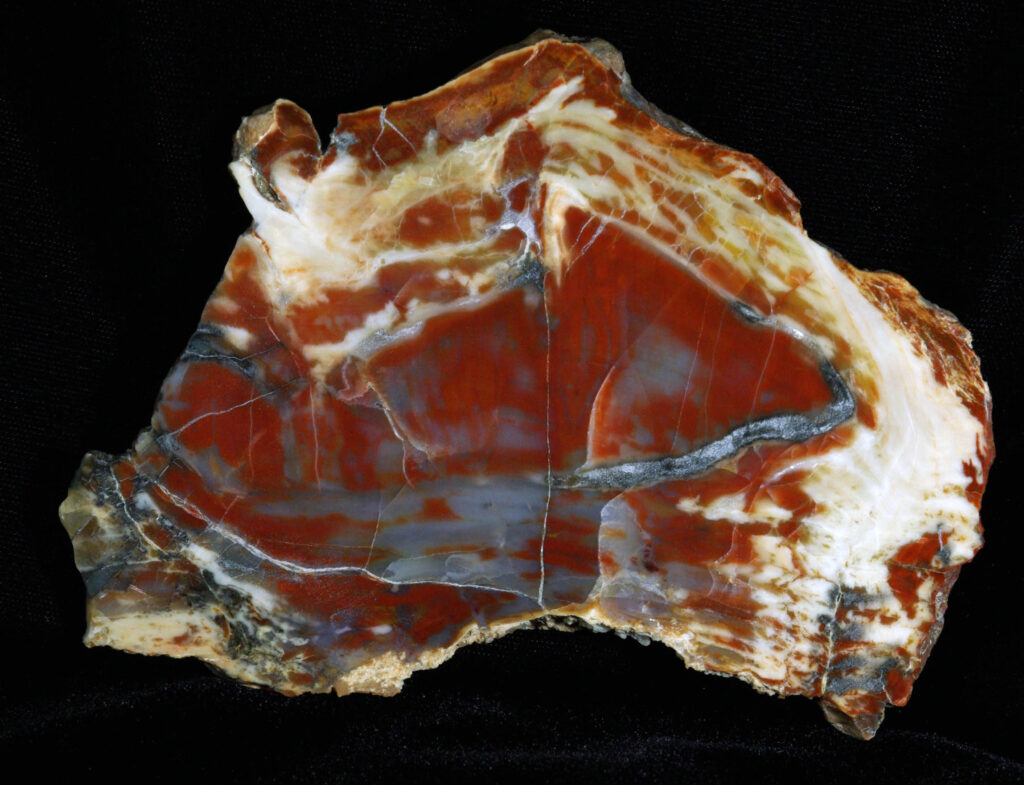
11 and 12. Henry Mountains, southern drainage. Jurassic, Morrison formation. Red ivory. Banks collection. It was uncut when I saw it on an outside patio shelf. I recognized it immediately and knew where it came from as I’d been there many times. Once back to my shop, I studied it for a while, trying to decide if I should cut it. There was not much leeway, so it was risky and could break. I secured it in the vise of my old 24-inch Highland Park saw and gave it a shot. The blade removed about a quarter of an inch of rock, taking about twenty minutes to complete the cut. It was one of the trickiest cuts I’ve made. And it turned out great. Specimen round, cut and polished on both faces. No glue or filler. 9 by 13 polished faces; 29 to 48 mm thick; one pound and eight ounces.
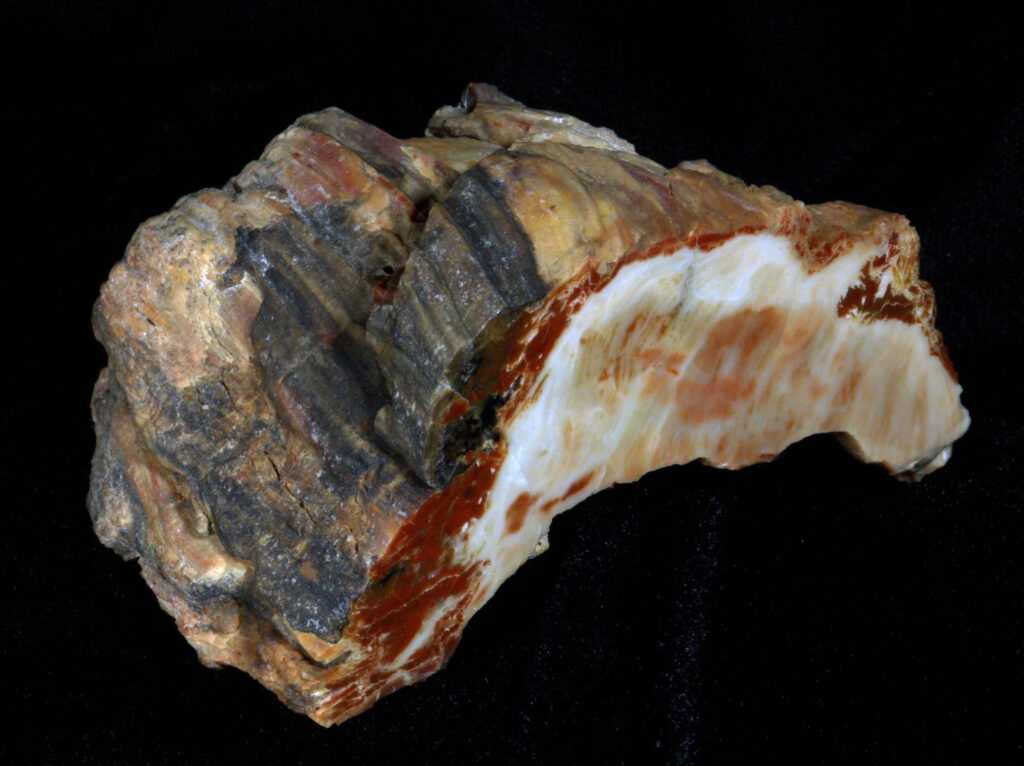
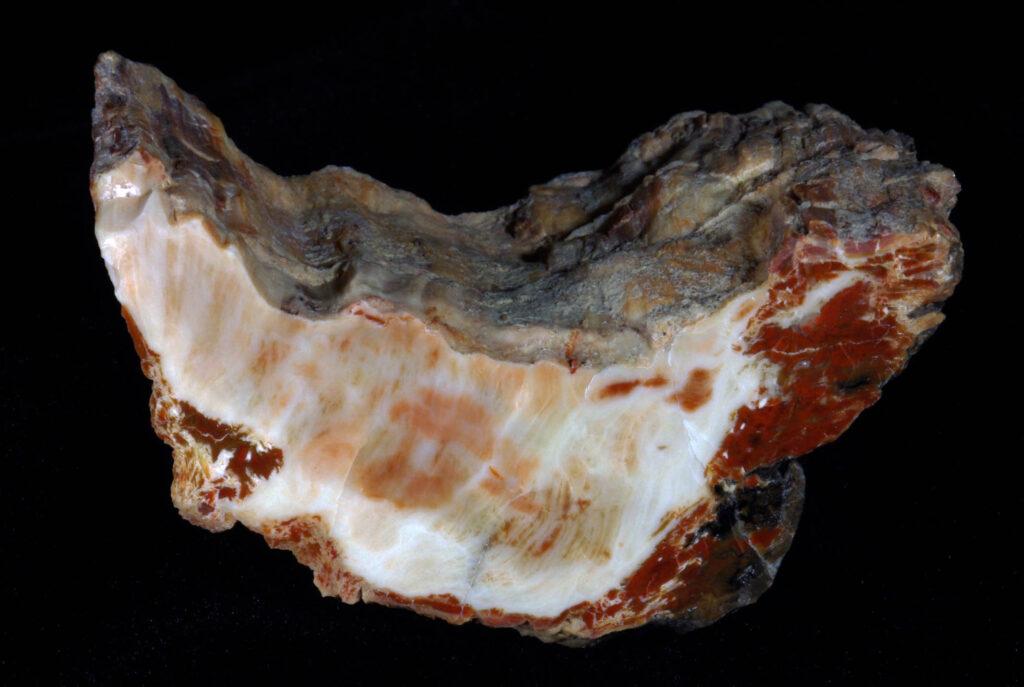
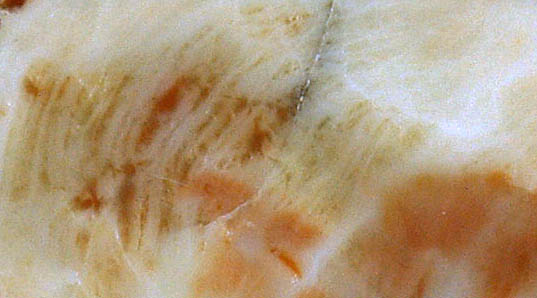
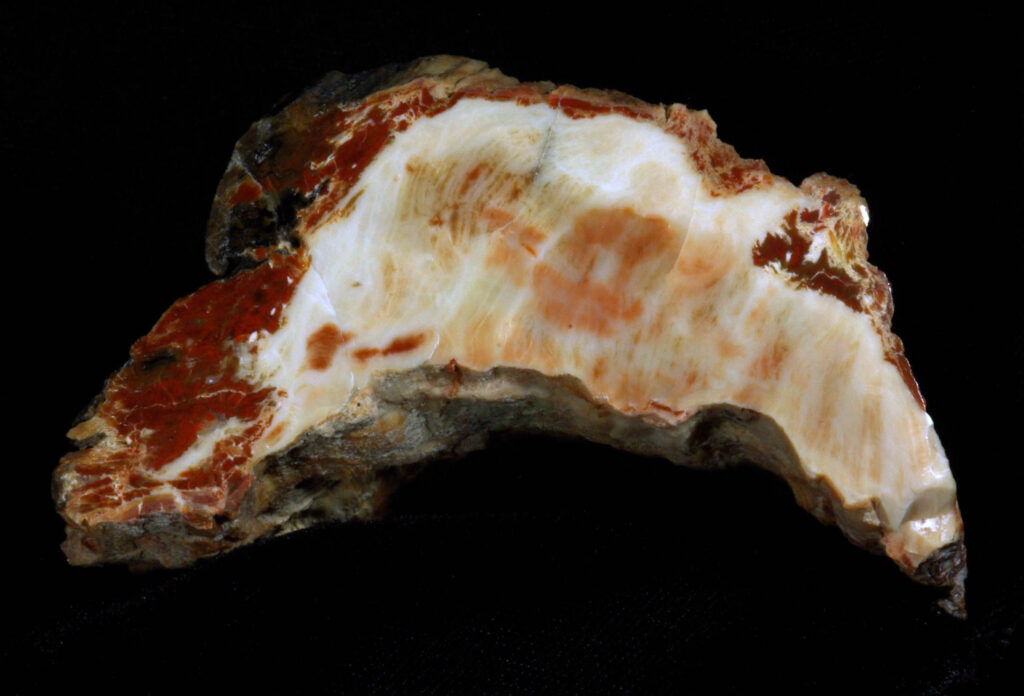
13. Henry Mountains, southern drainage. Jurassic, Morrison formation. Red ivory. Attractive and interesting. All natural crescent moon shape. Specimen round cut and polished on one end. No glue or filler. 8 by 4 cm polished face; 6 cm long; nine ounces.
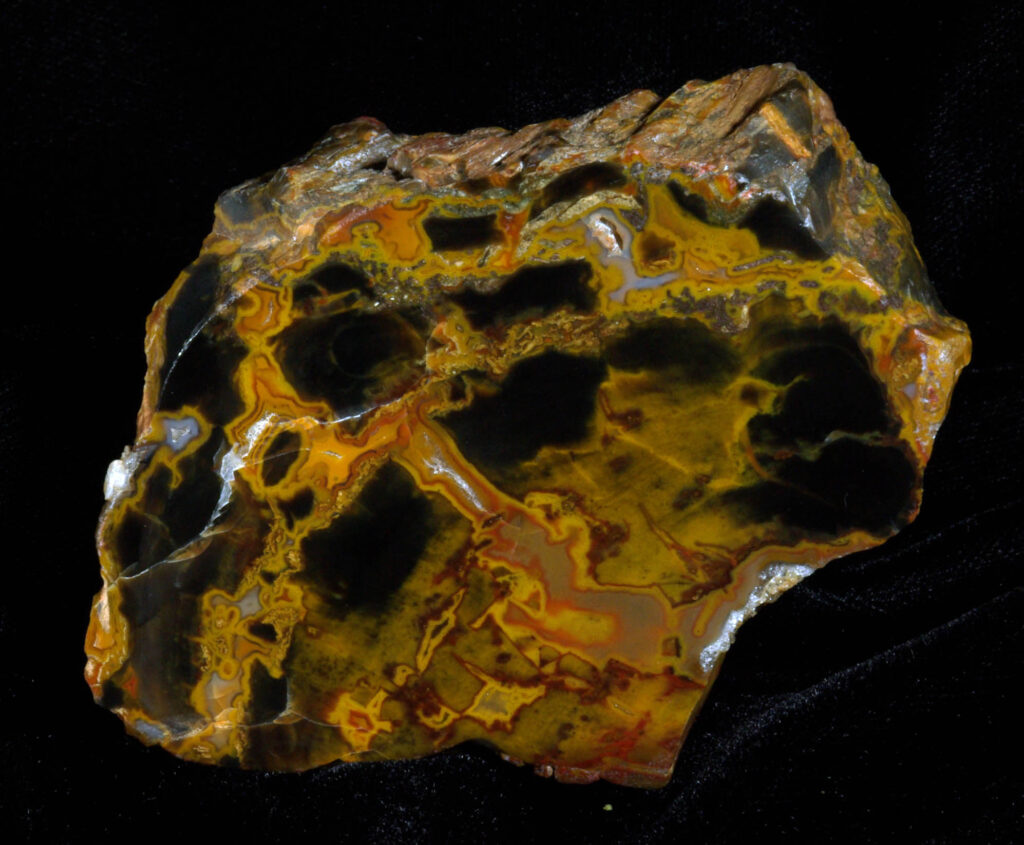
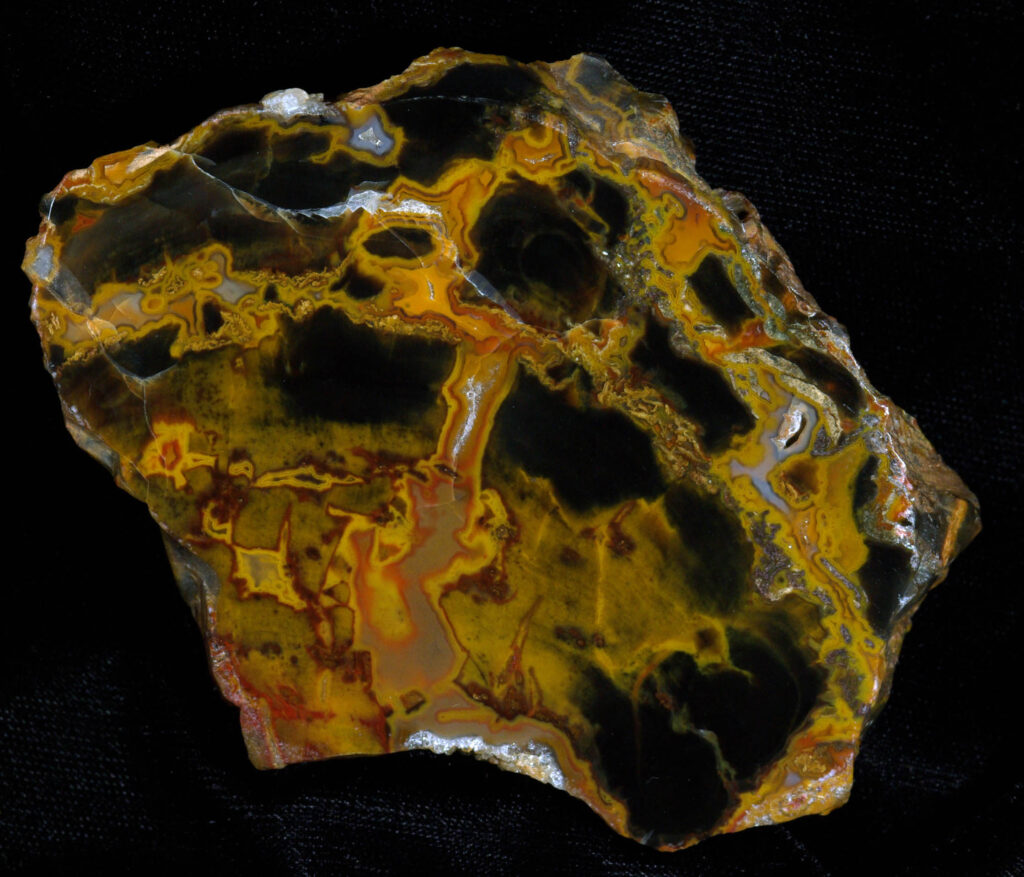
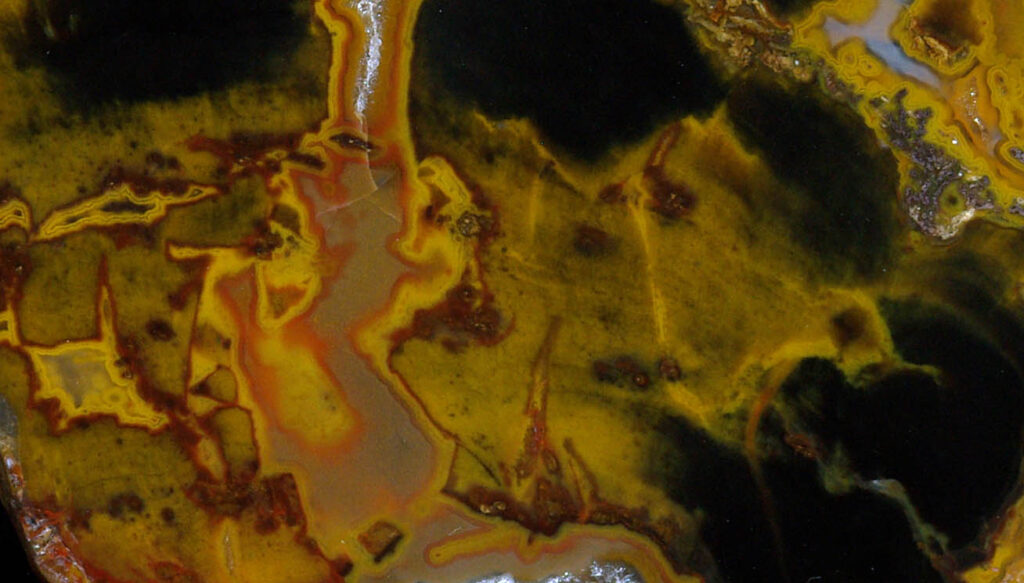
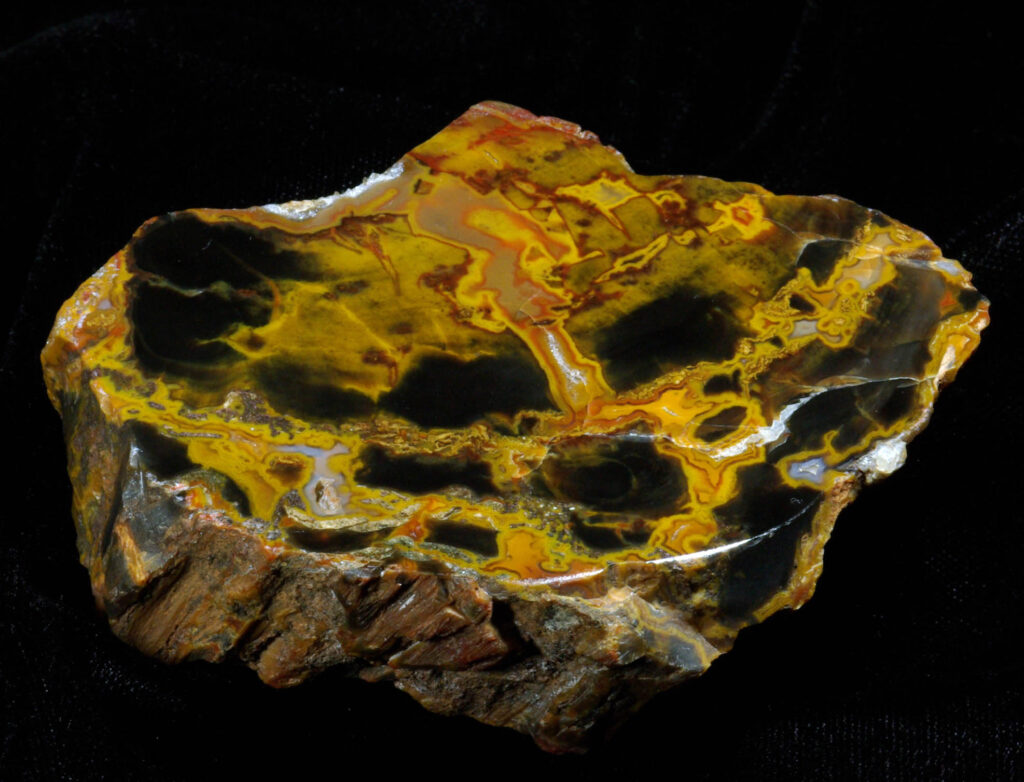
14. Henry Mountains, southern drainage, likely Hansen Creek. Jurassic, Morrison formation. Specimen round cut and polished on one end. No glue or filler. 8.5 by 6.5 cm polished face; 26 mm thick; seven ounces.
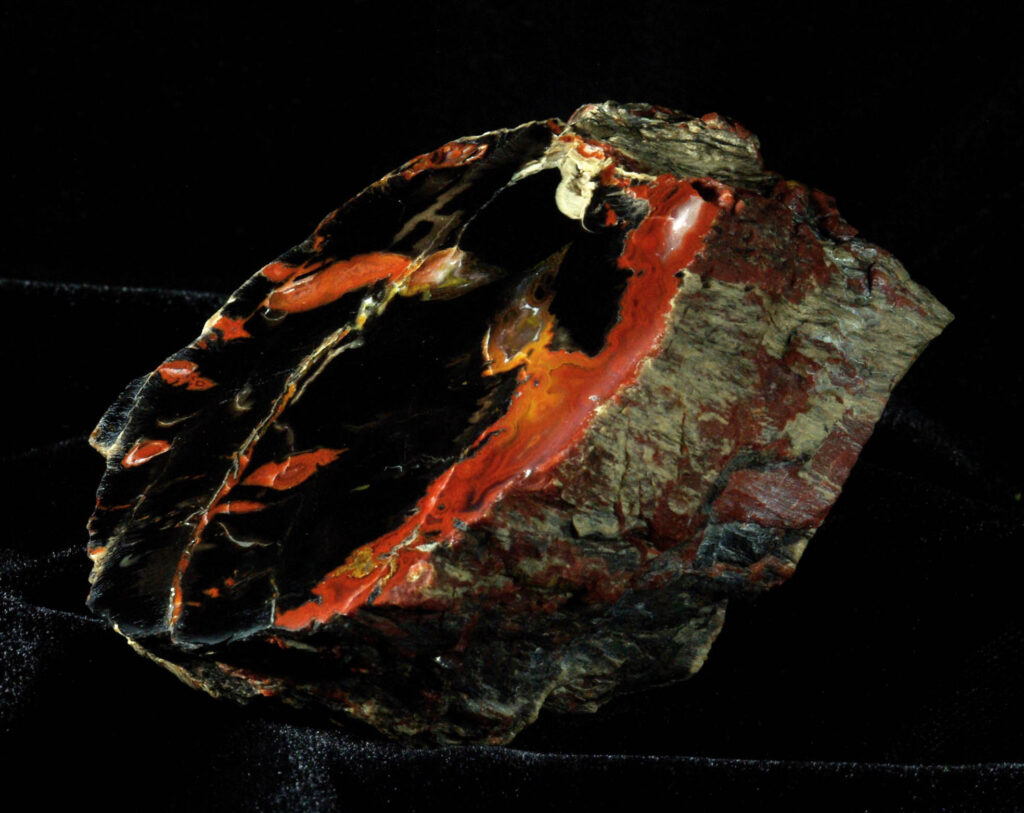
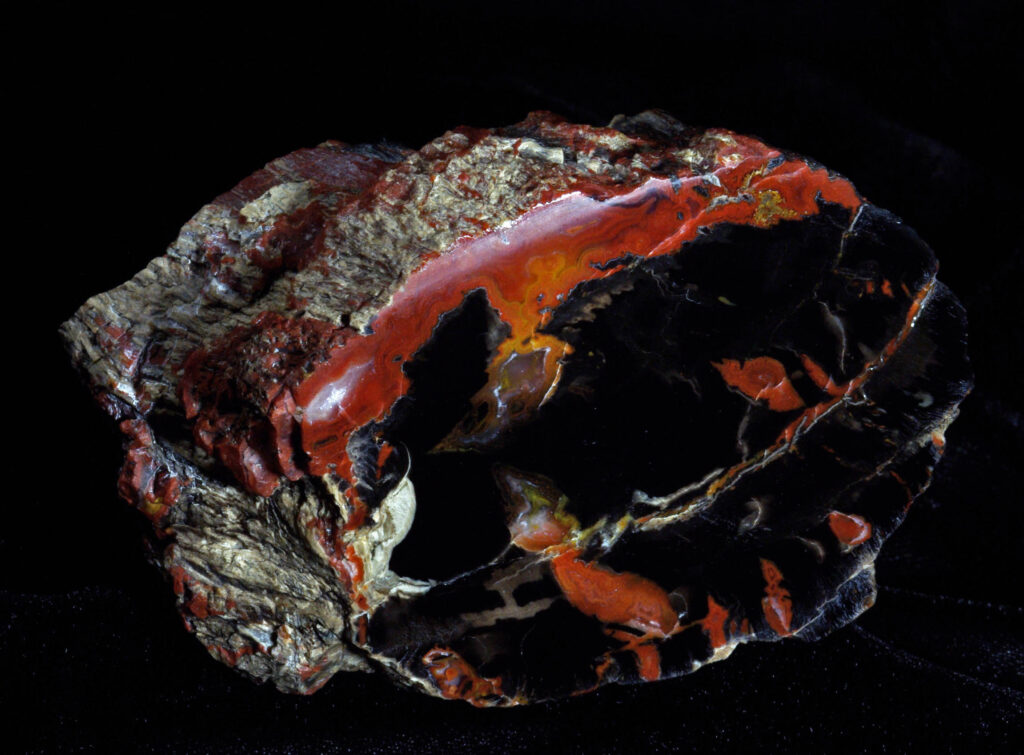
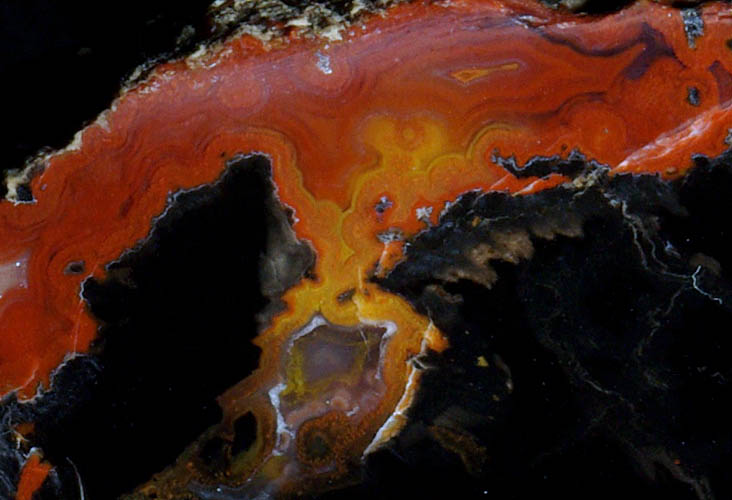
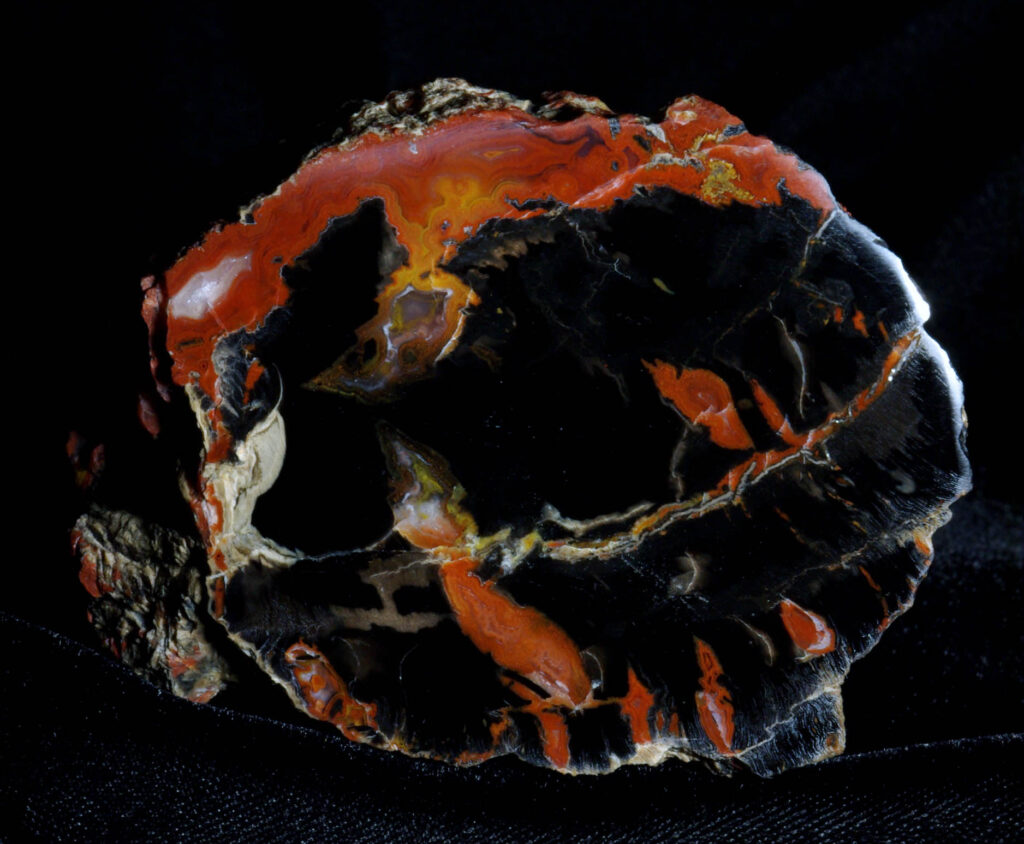
15. Henry Mountains, southern or western drainage. Jurassic, Morrison formation. The Red and the Black. Rugged beauty – an overall fabulous example inside and out. Full round cut and polished on one end. No glue or filler. 6 by 5.5 cm polished face; 4.5 cm long; twelve ounces.
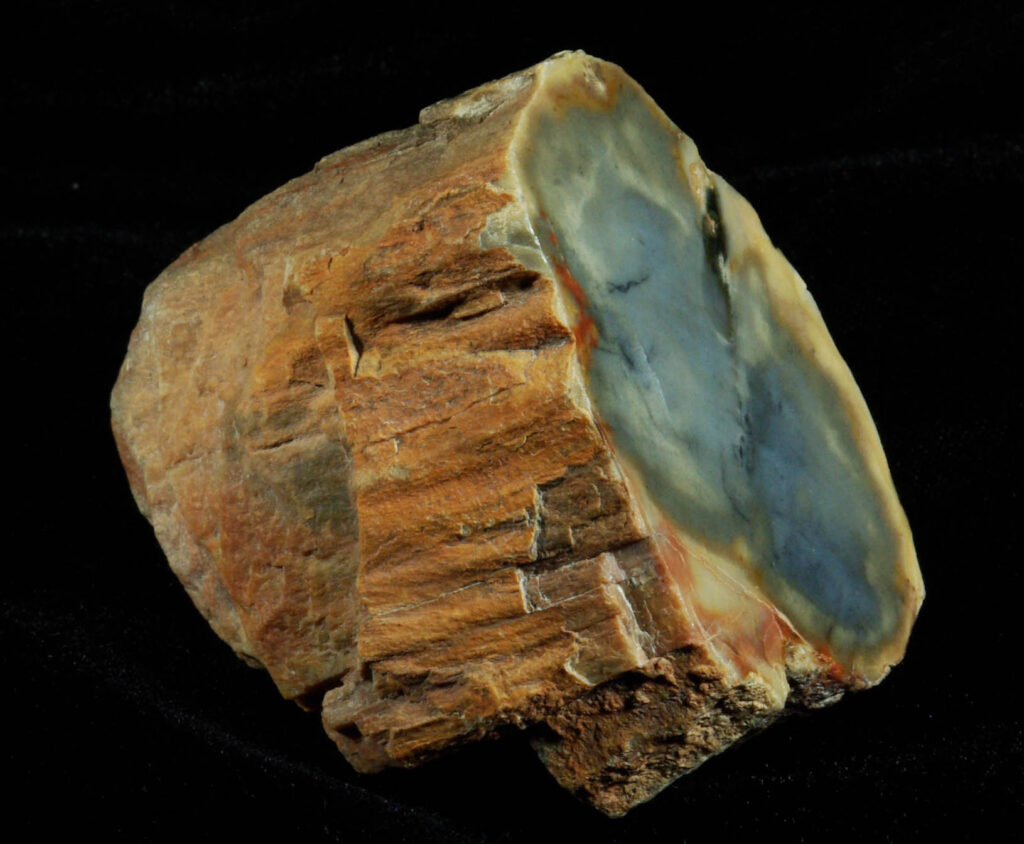
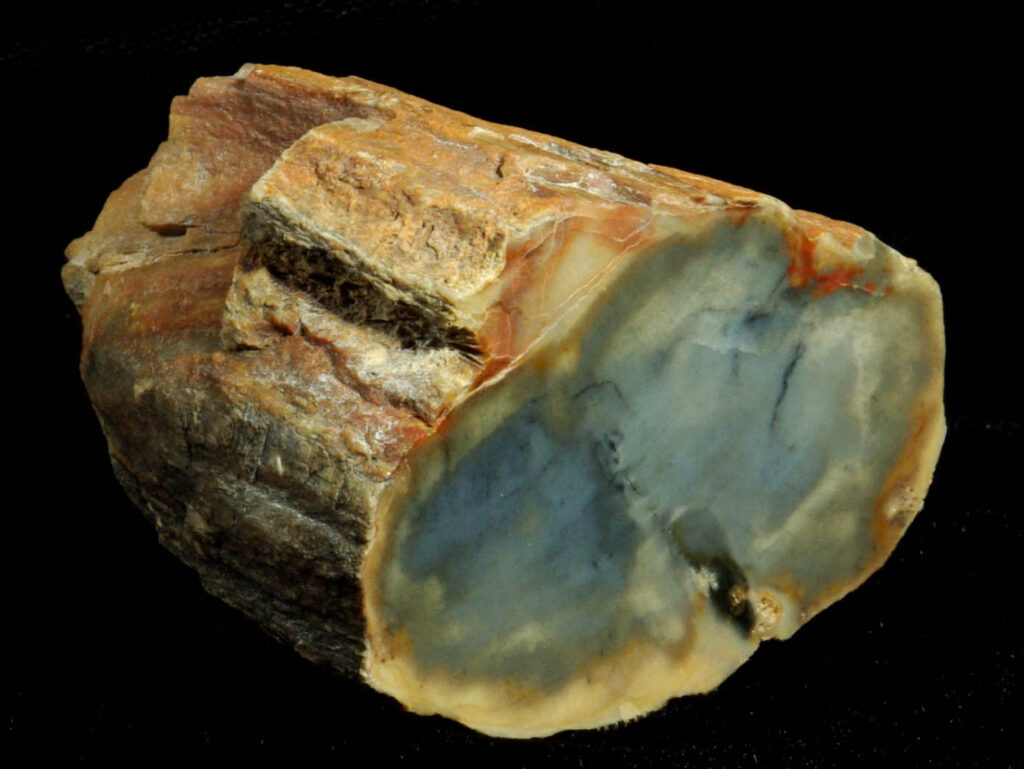
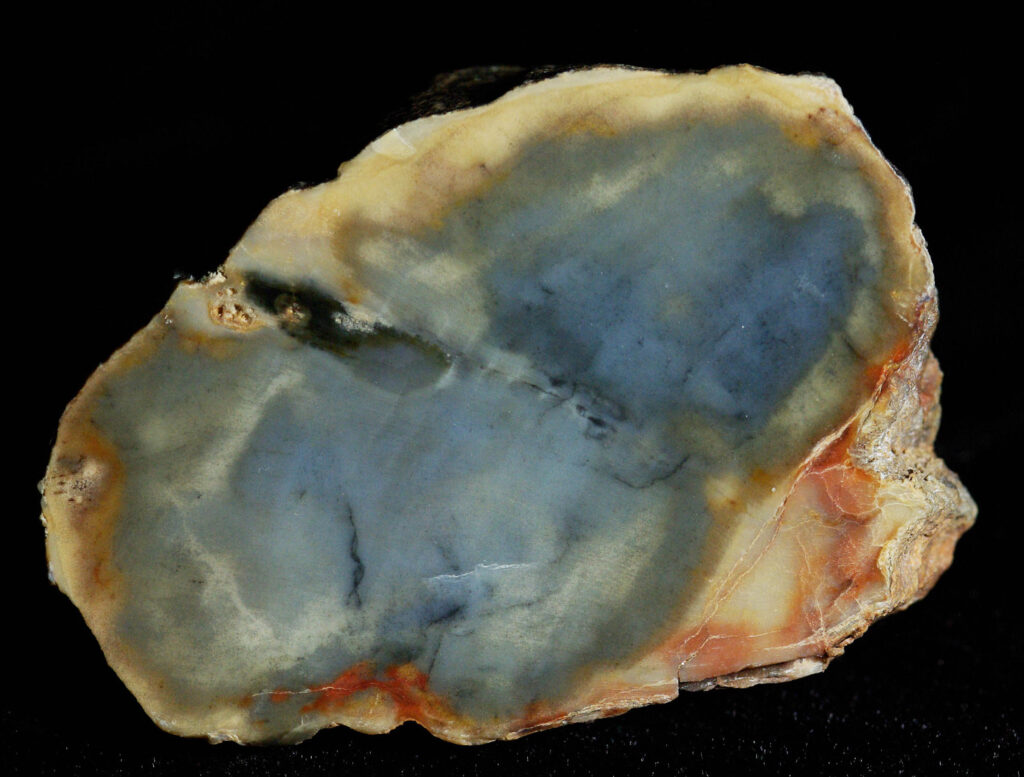
16. Henry Mountains, southern drainage. Jurassic, Morrison formation. Full round blue beauty cut and polished on one end. No glue or filler. 6 by 4 cm polished face; 6 cm long; eight ounces.
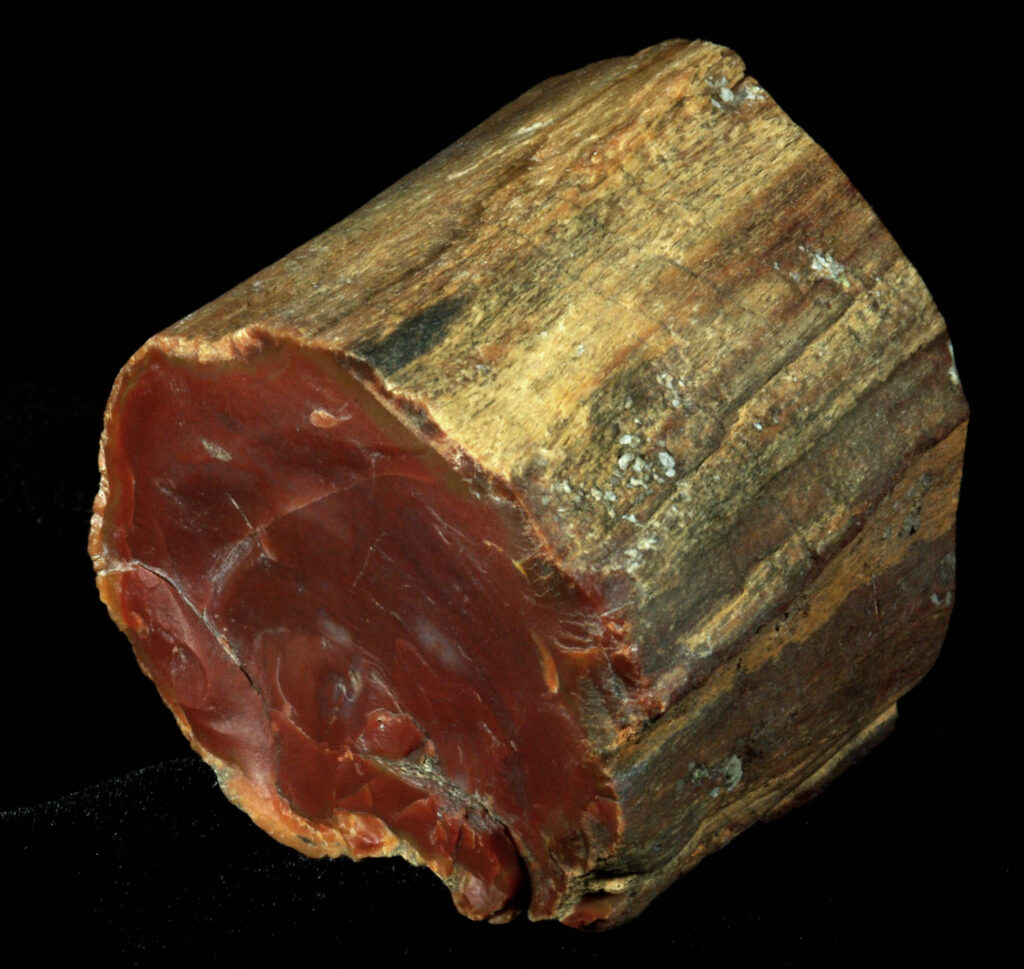
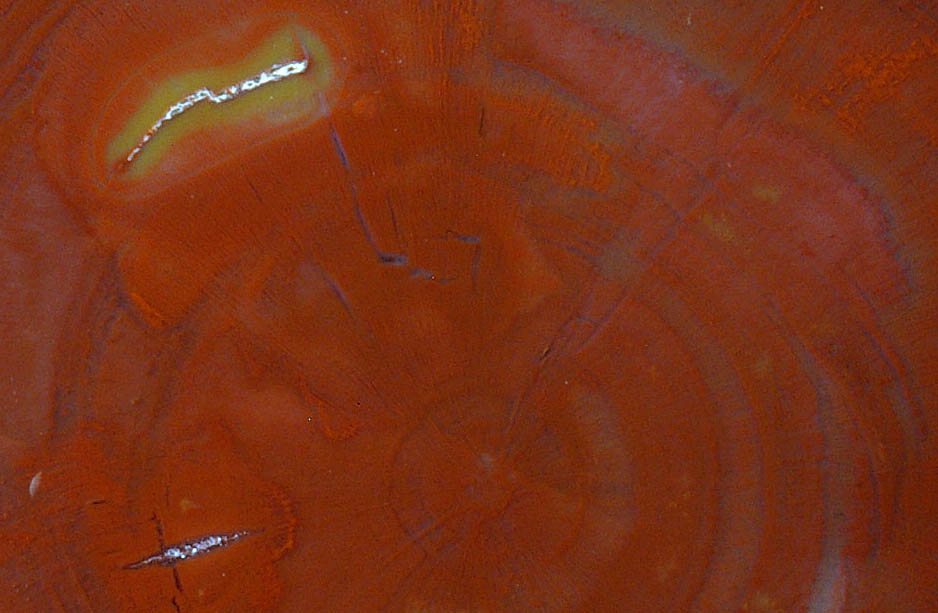
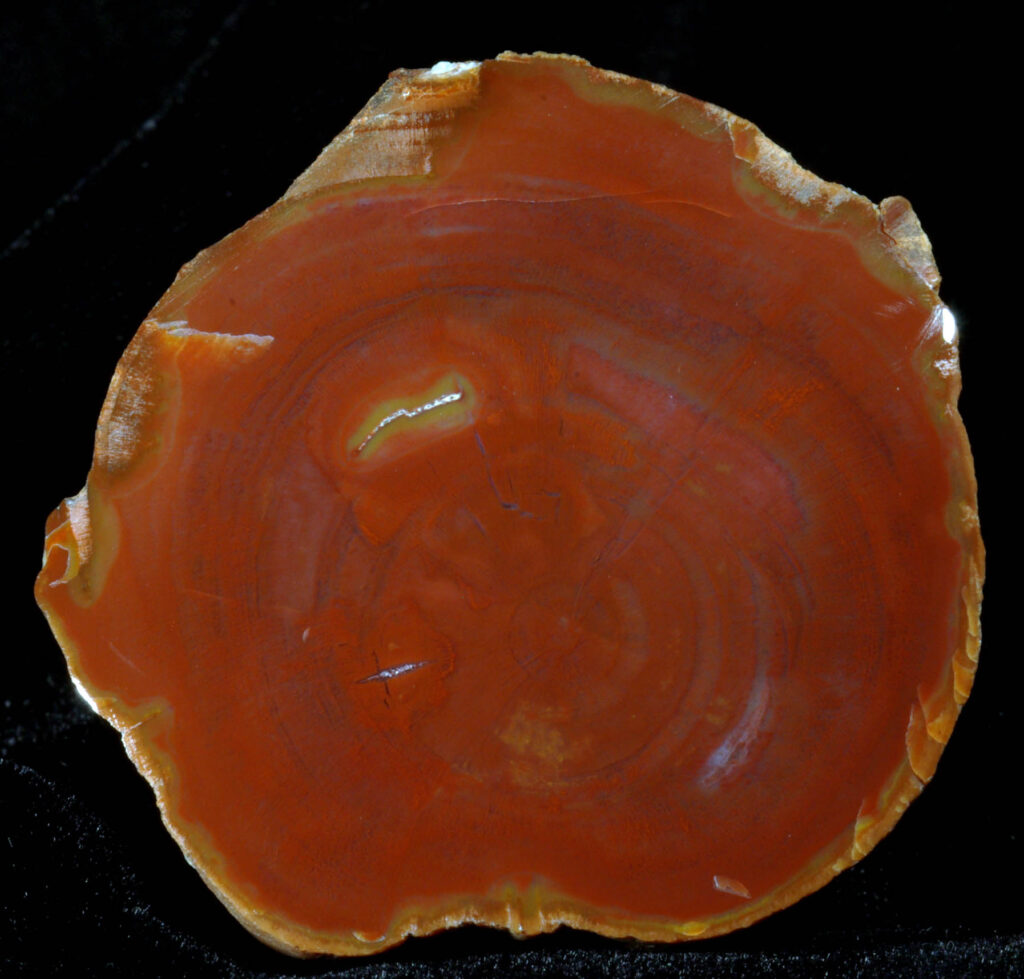
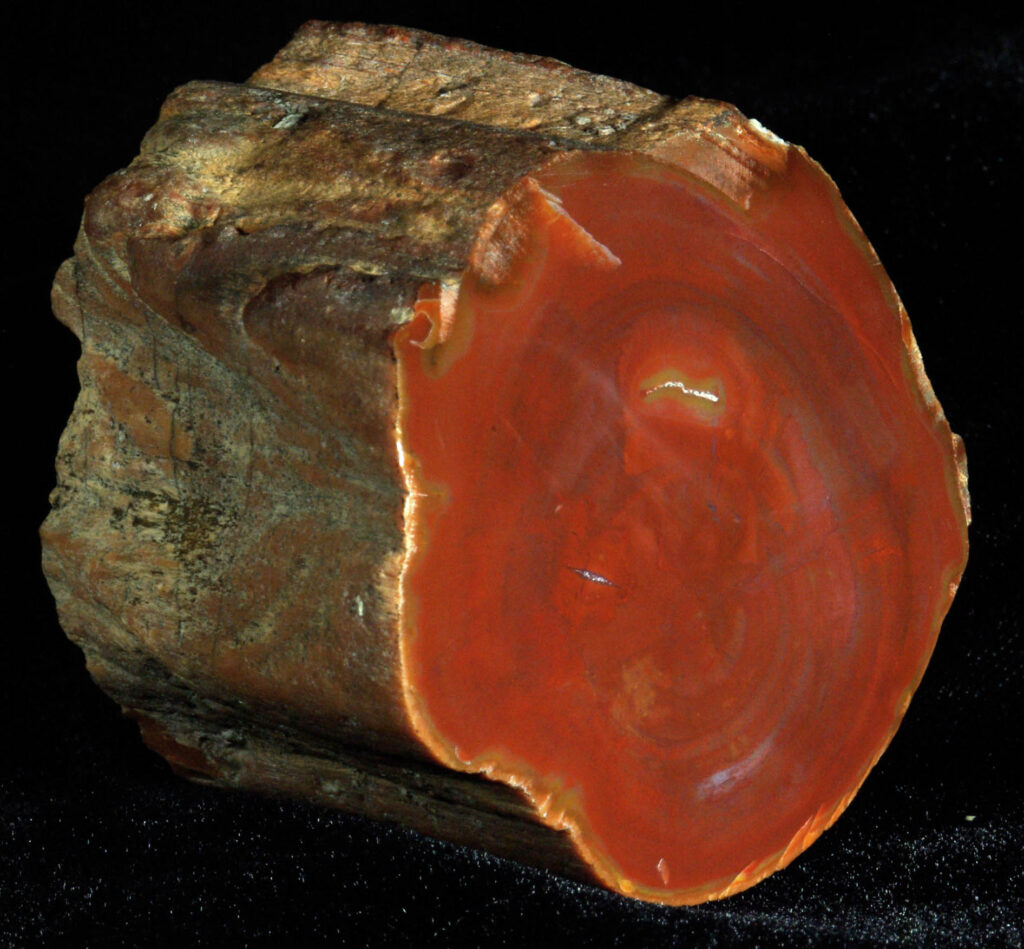
17. Henry Mountains, southern or western drainage. Triassic, Chinle formation. Full round cut and polished on one end. No glue or filler. 5 by 5 cm polished face; 4.5 cm tall; eight ounces.
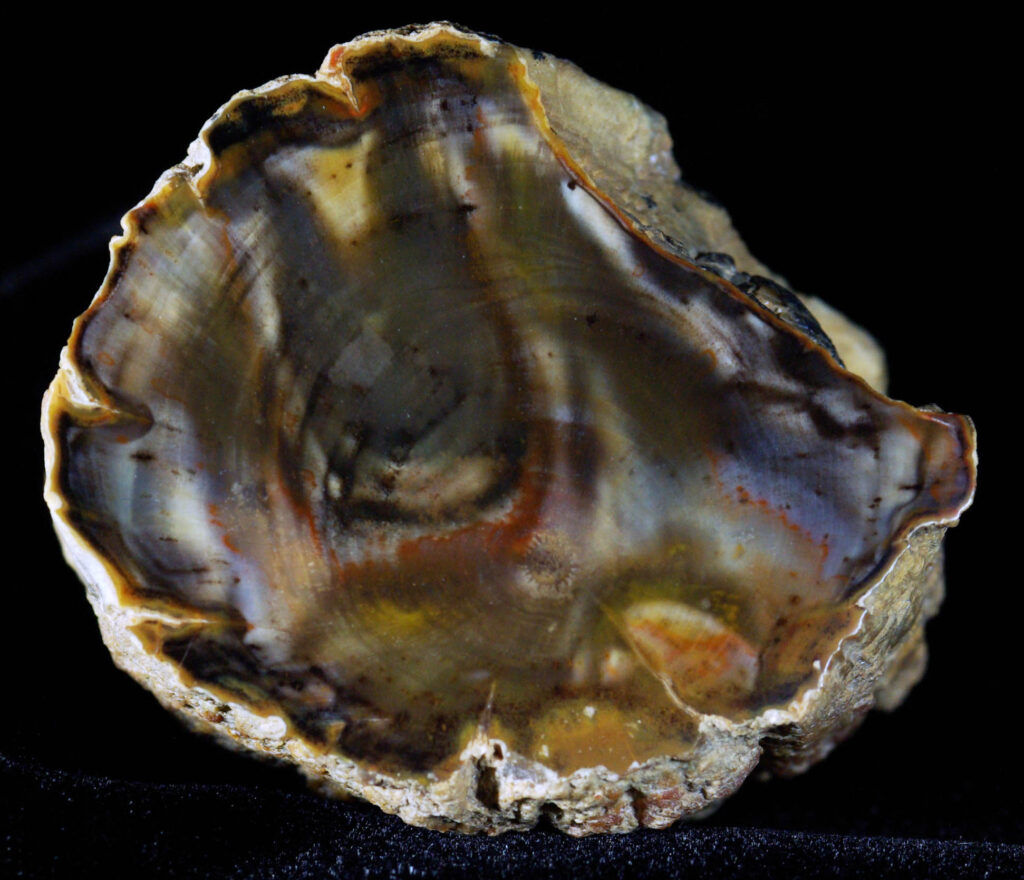
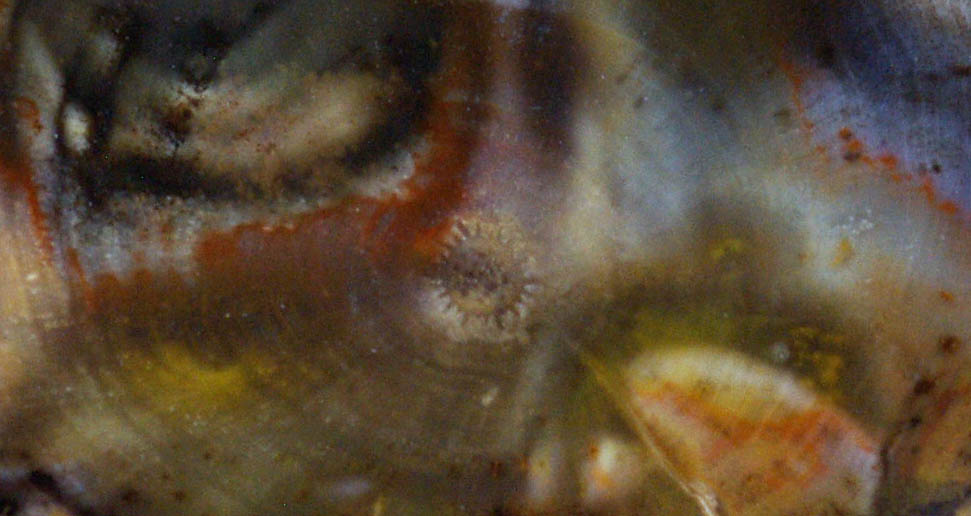
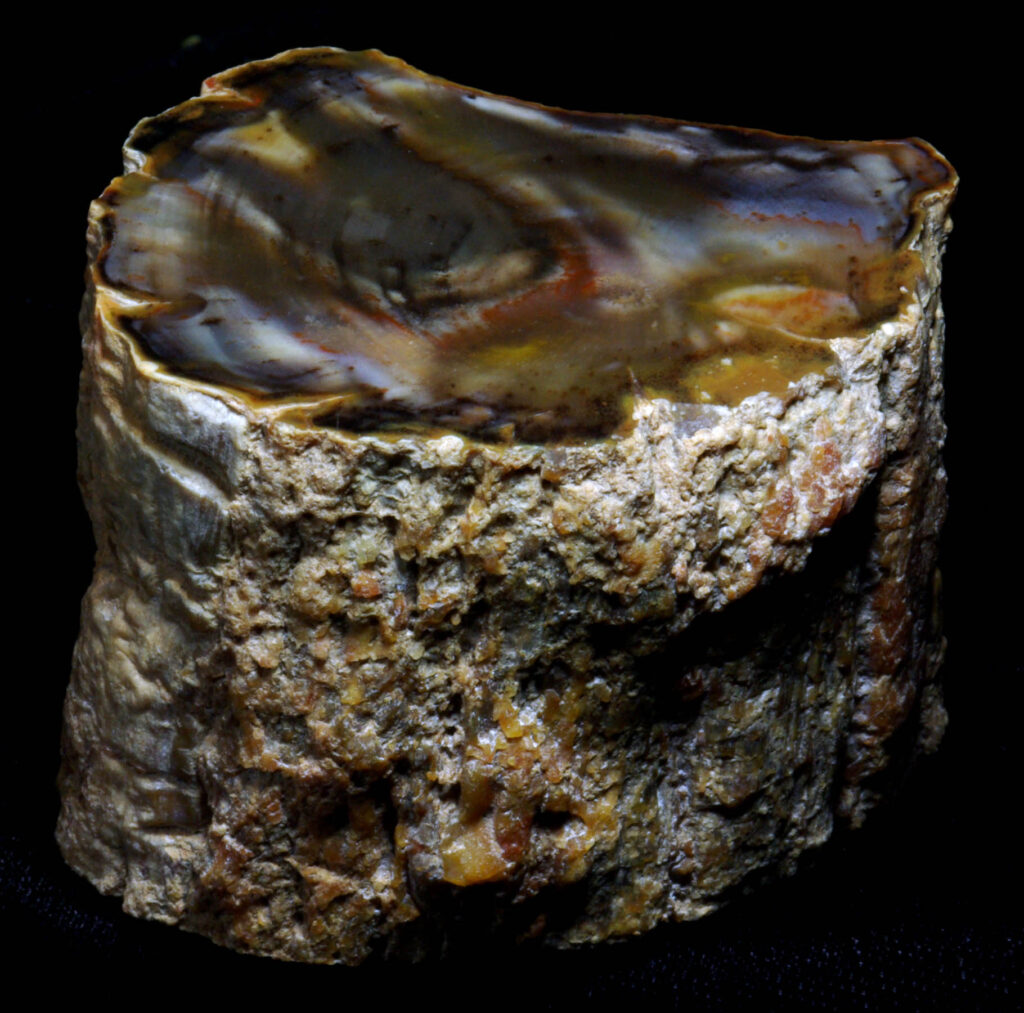
18. Escalante. Jurassic, Morrison formation. Full round cut on both ends and polished on one. [From Ernie Shirley with CASE top shelf 8.] Pictured in Petrified Wood on page 110. No glue or filler. 4 by 5.5 cm polished face; 4 cm tall; seven ounces..
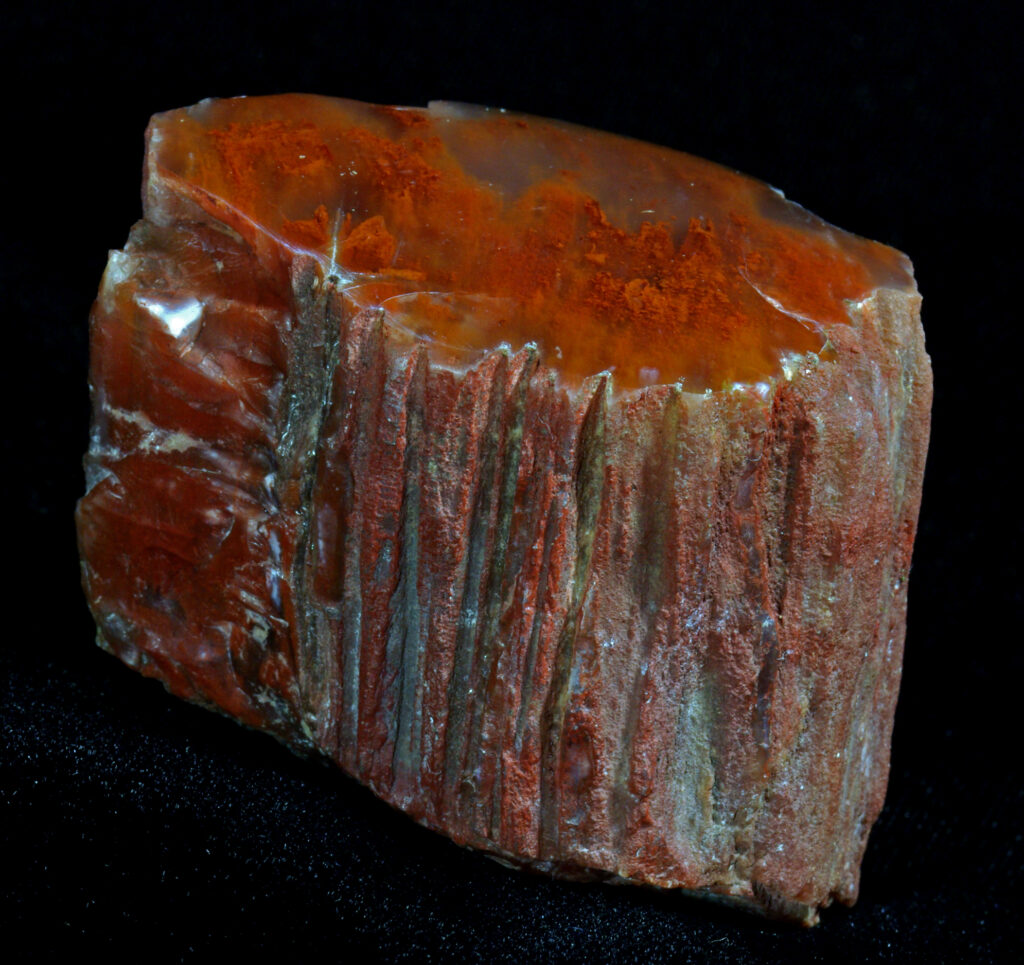
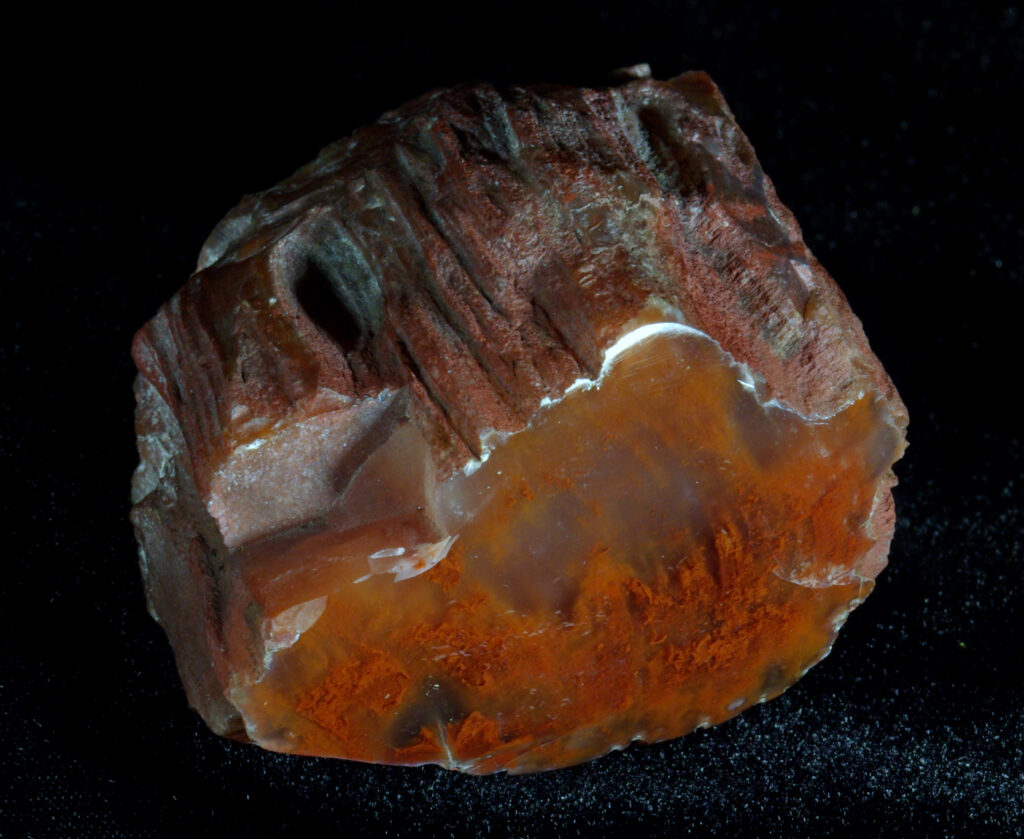
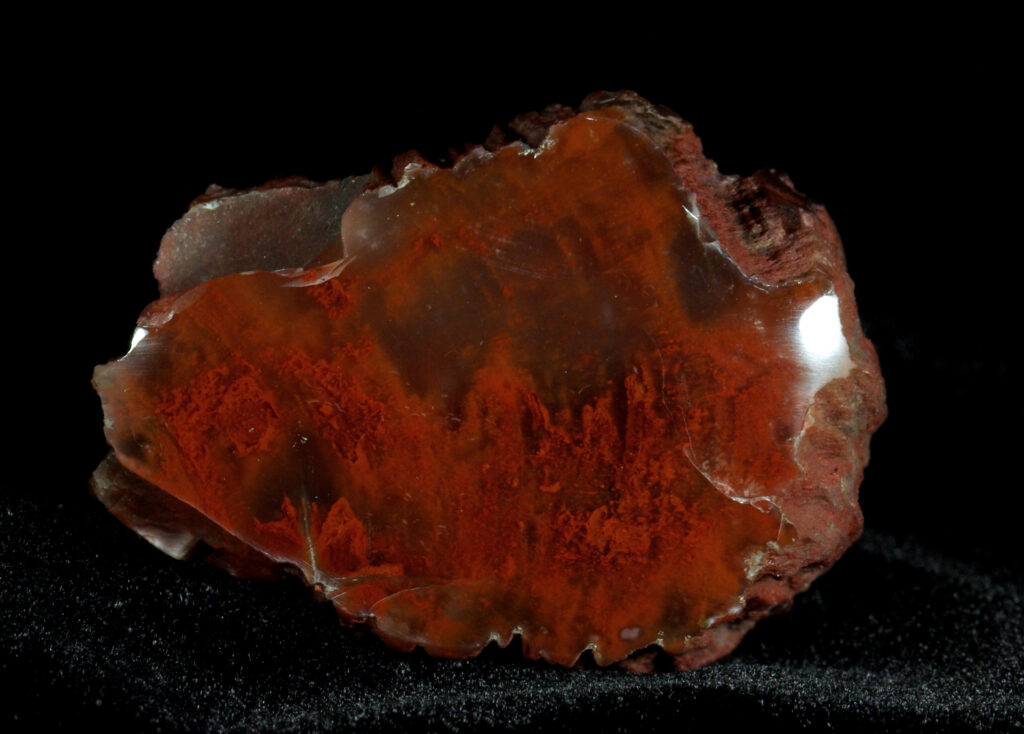
19. Henry Mountains, southern drainage. Jurassic, Morrison formation. Glassy red. There are a few very small areas in the Henries with red wood like this. Full round cut and polished on one end. Pictured in Petrified Wood on page 110. No glue or filler. 33 by 50 mm polished face; 48 mm long; five ounces.
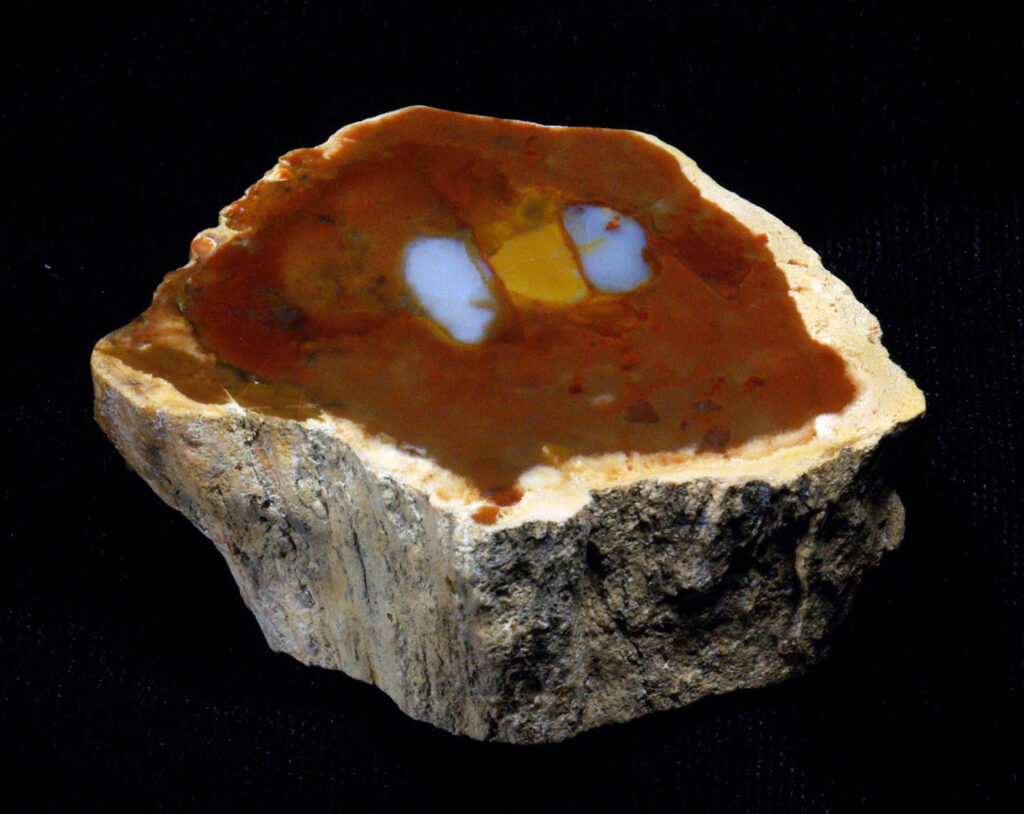
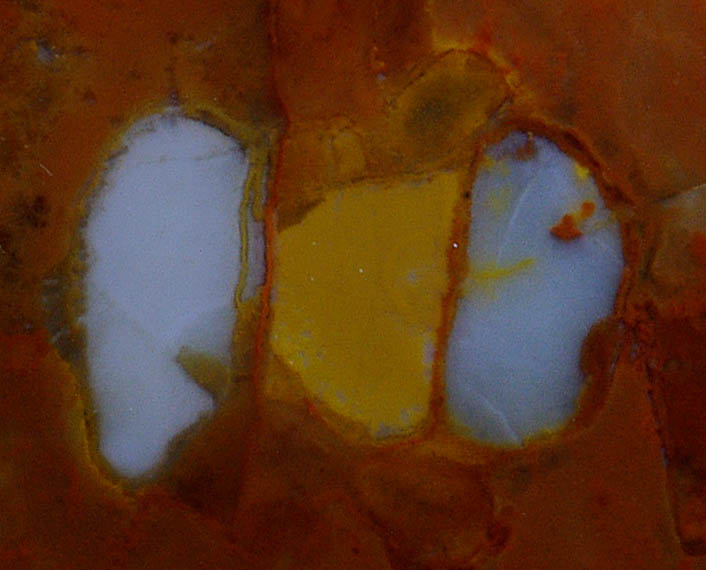
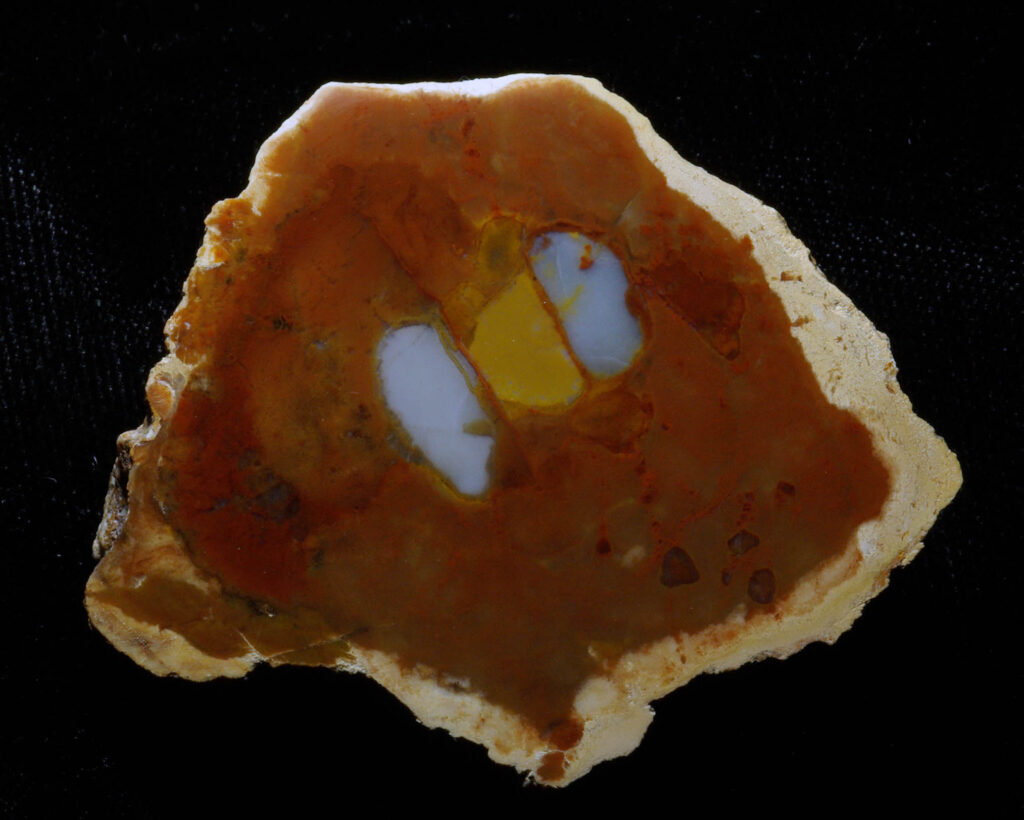
20. Escalante. Jurassic, Morrison formation. Full round cut on both ends and polished on one. [From Ernie Shirley with CASE top shelf 8.] No glue or filler. Pictured in Petrified Wood on page 106. 40 by 48 mm polished face; 17 mm tall; two ounces.
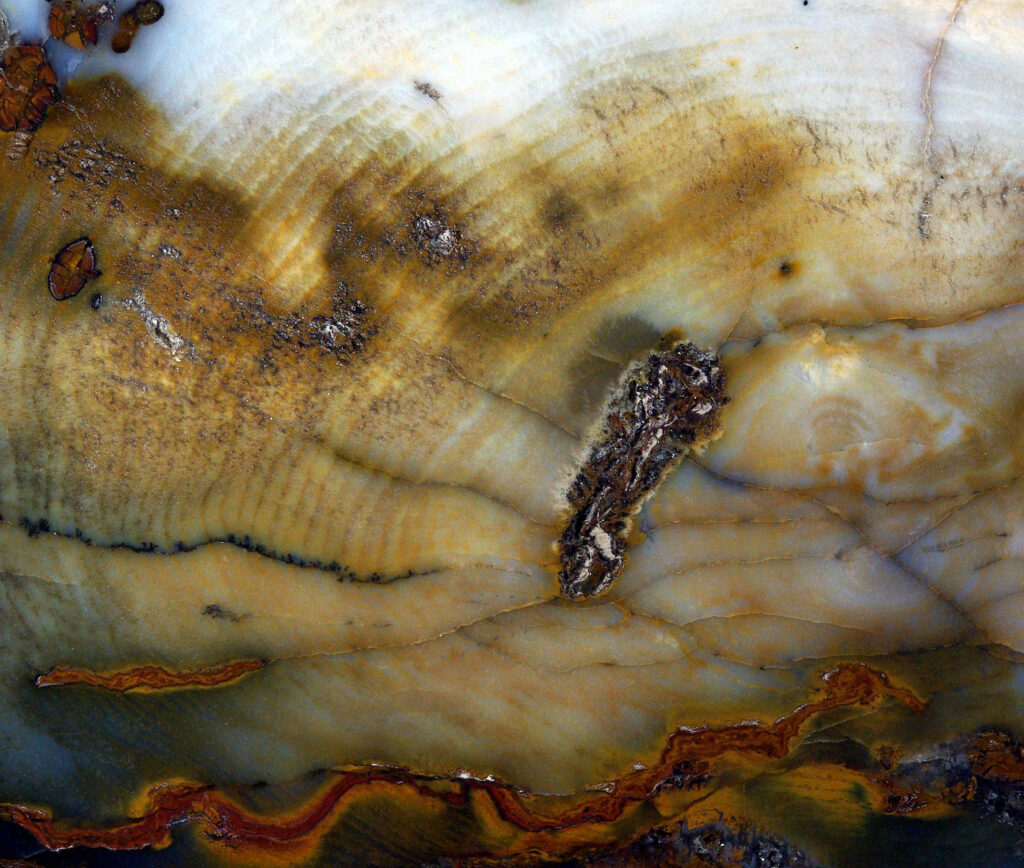
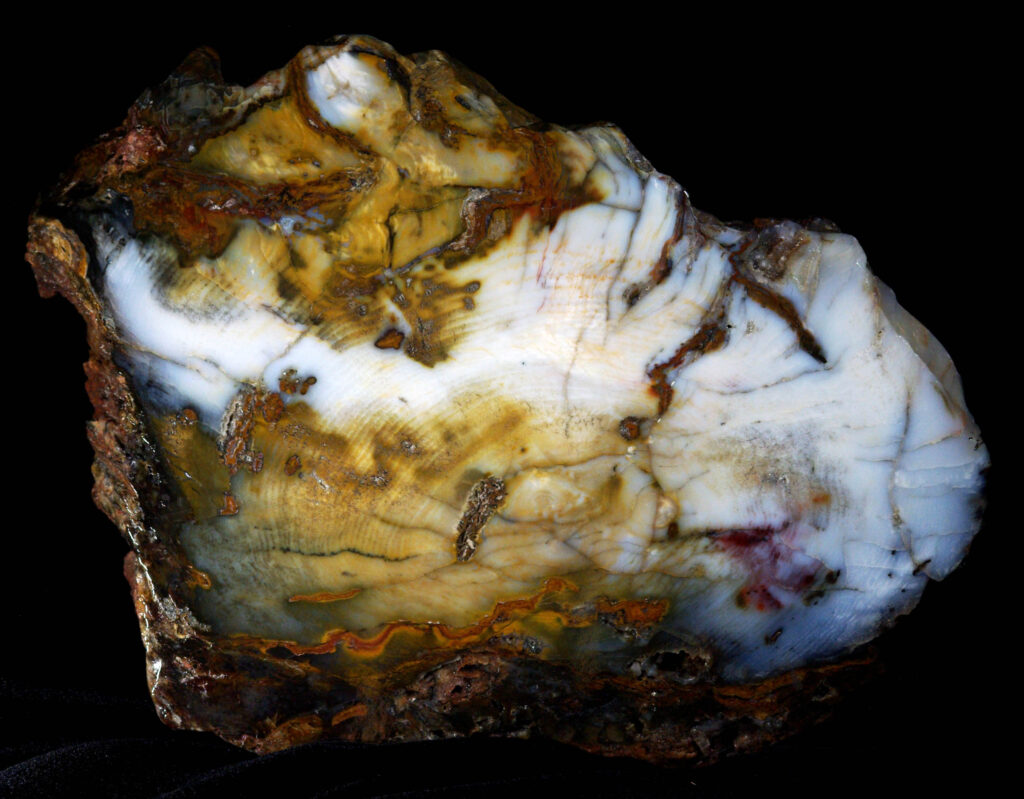
21. Spring Creek (near Park City). Tertiary. Full round thick slice conifer. Very little fossil wood from Utah that is not either Morrison or Chinle formation wood has much color or beauty. This is an exception. Nice character and eye appeal. Petrified wood, including some very large logs, was found in various locations when the ground was excavated for building. Glassy and colorful. No glue or filler. 18 by 25 cm polished face; 27 cm thick; four pounds and fourteen ounces.
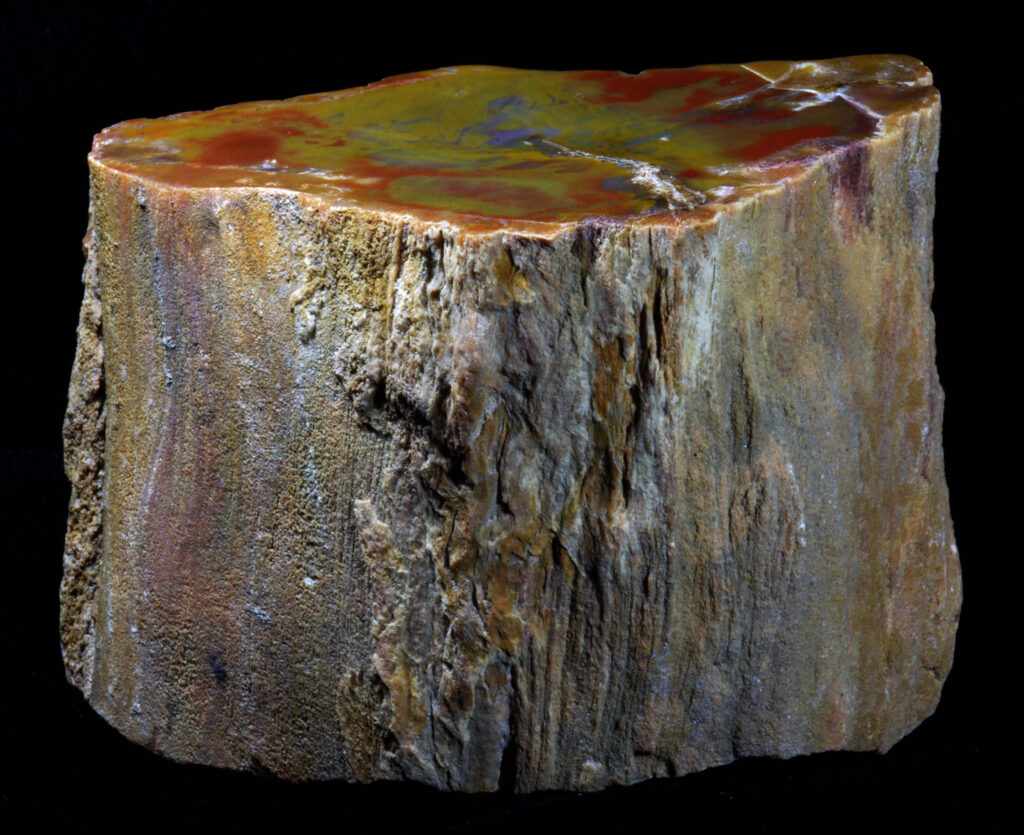
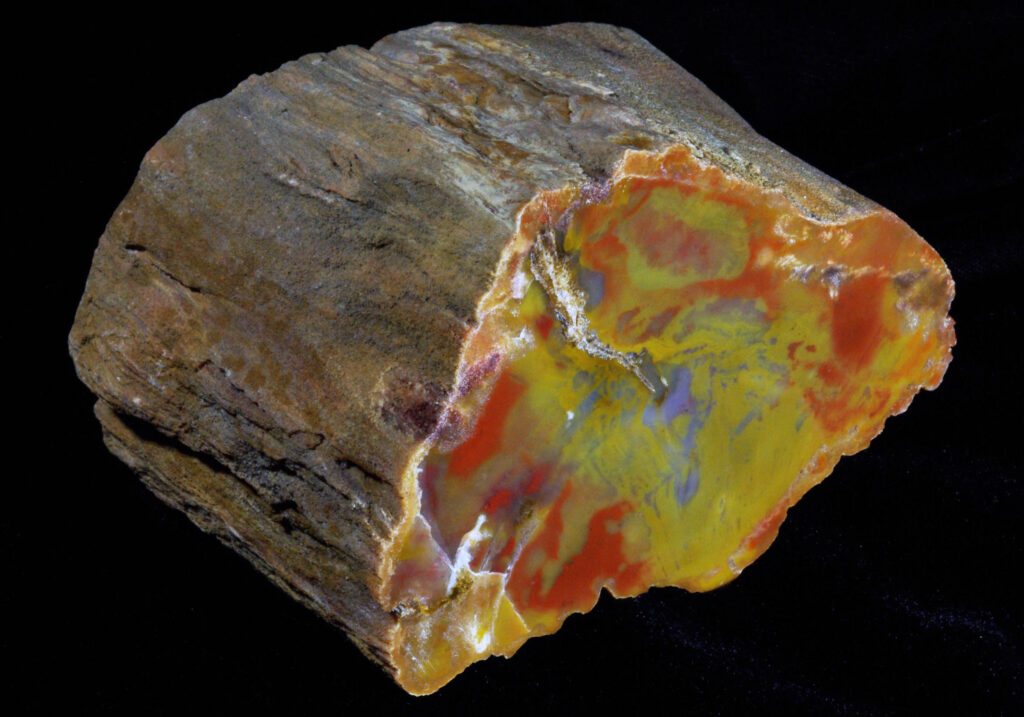
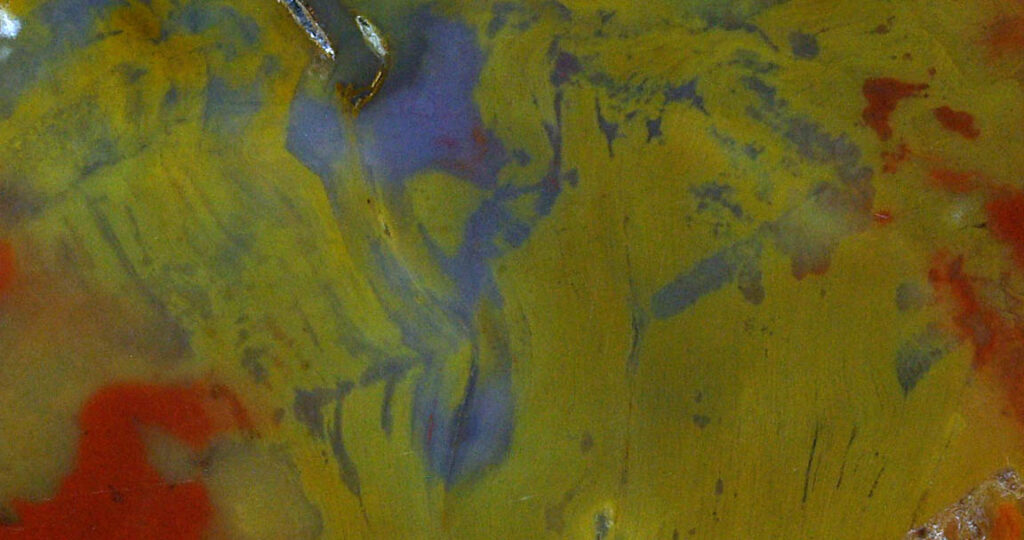
22. Henry Mountains, southern drainage. Jurassic, Morrison formation. Full round cut and polished on one end. Fabulous specimen. Astoundingly perfect for the area. No glue or filler. 9 by 12 cm polished face; 9 cm tall; three pounds and eight ounces.
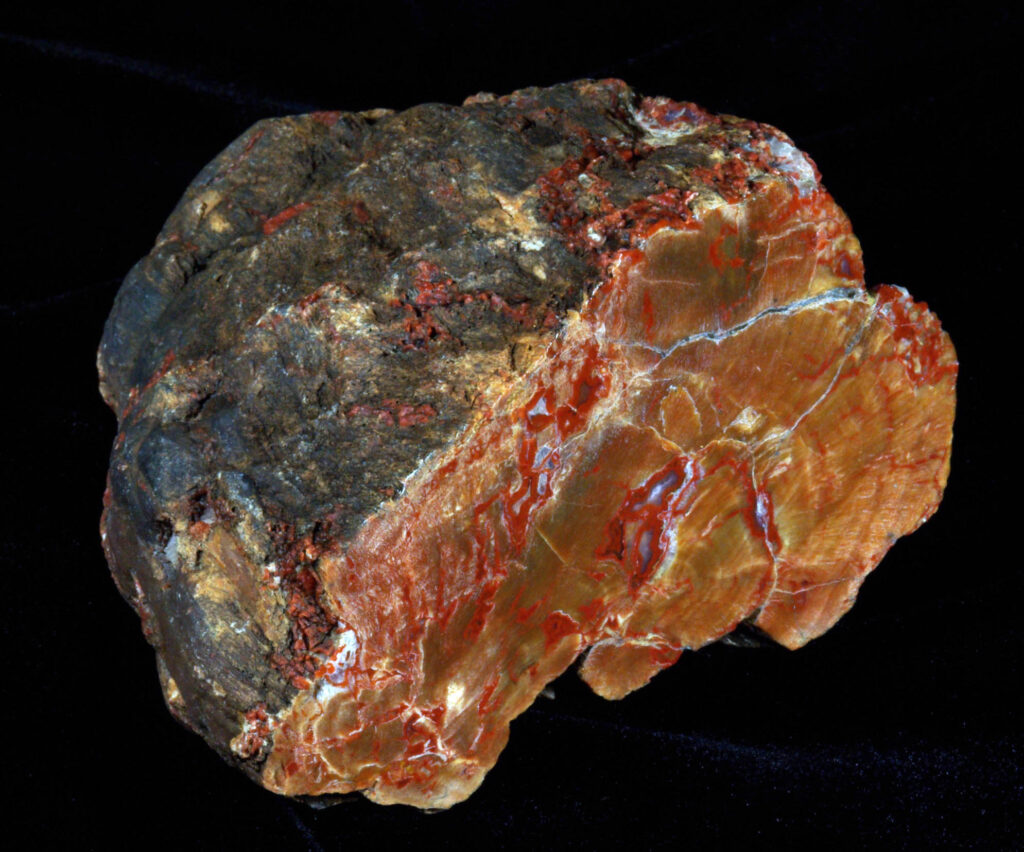
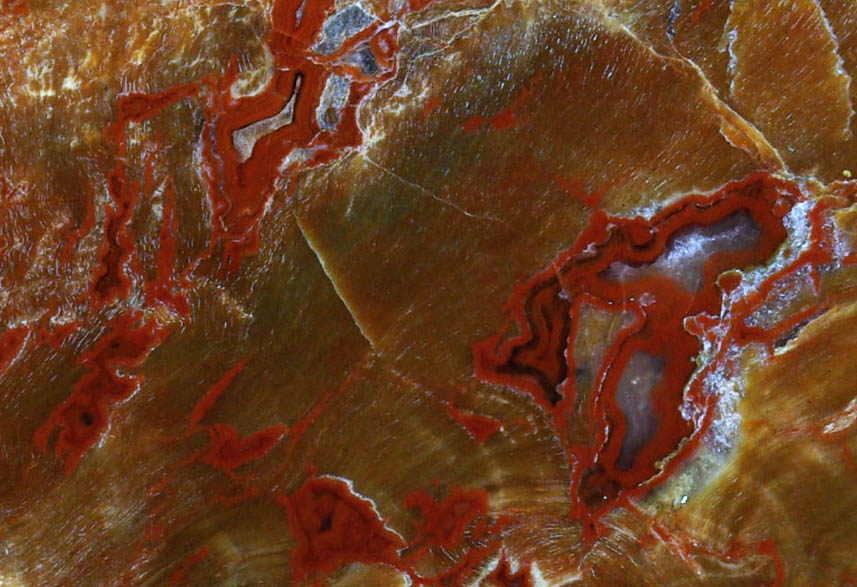
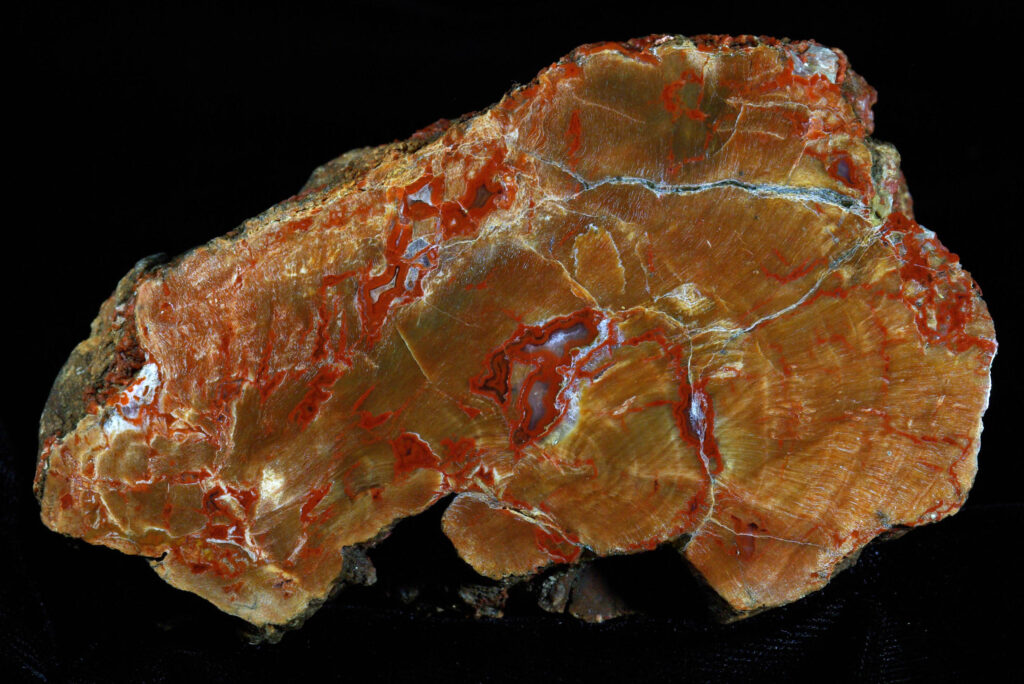
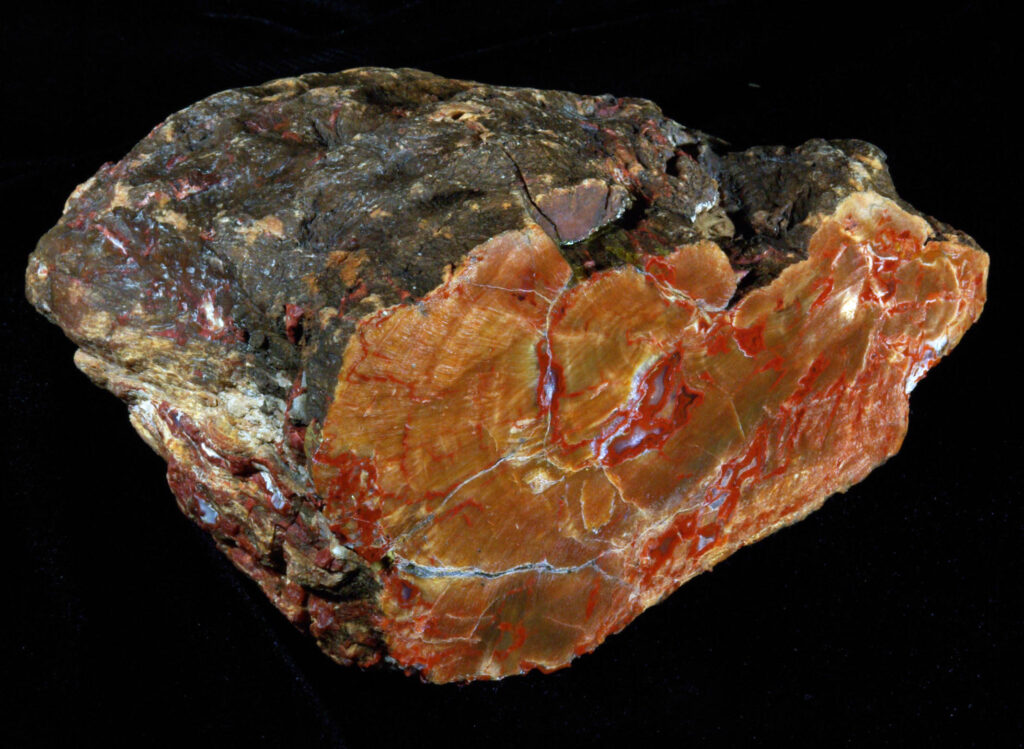
23. Henry Mountains, North Wash Knob. Jurassic, Morrison formation. Full round log section cut and polished on one end. The wood from this location is unlike wood from elsewhere. Mystifying and alluring. A unique type from an area no larger than a few acres. 10.5 by 6.5 cm polished face; 10 cm long; two pounds and one ounce.
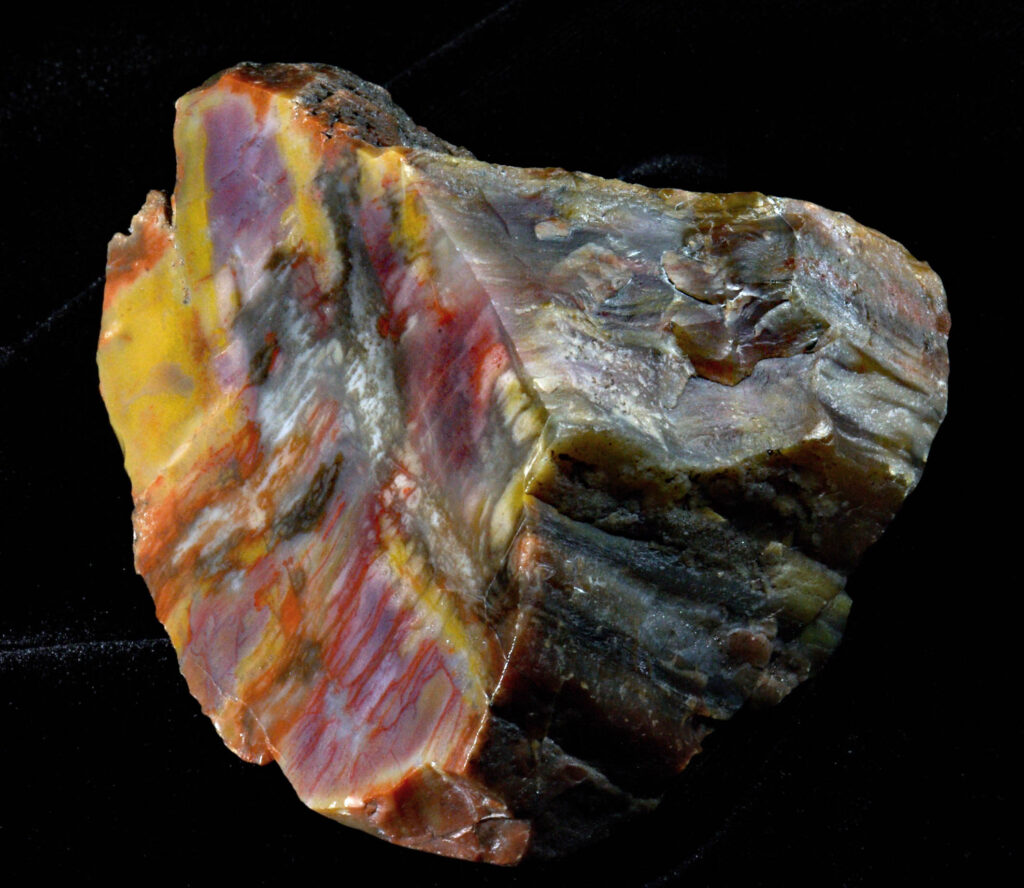
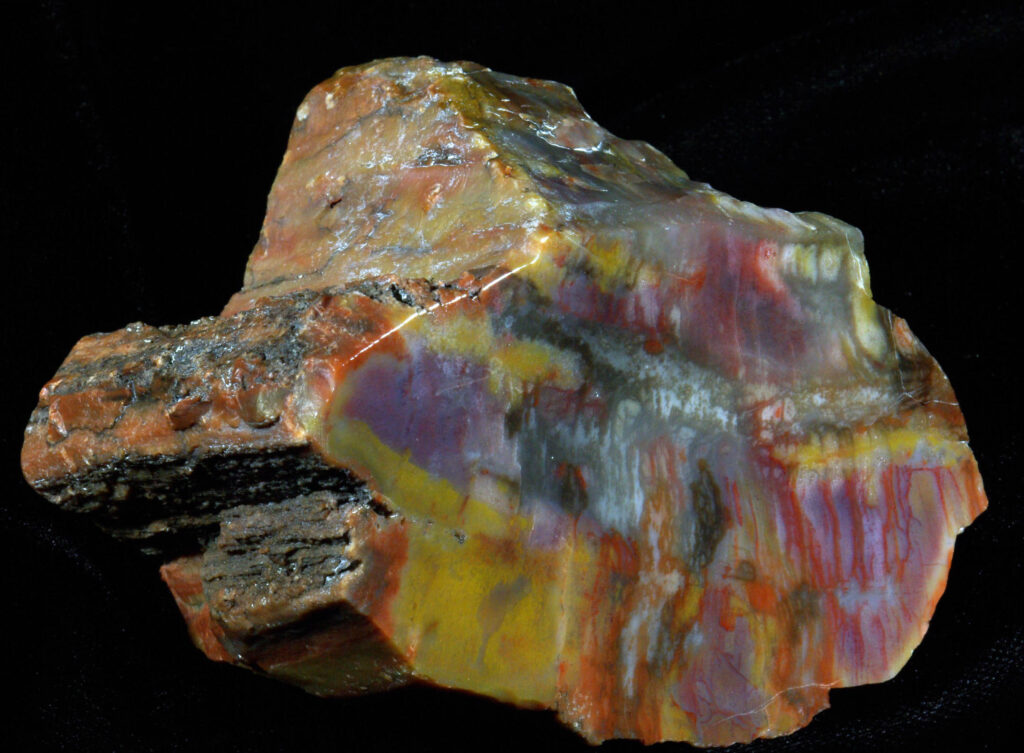
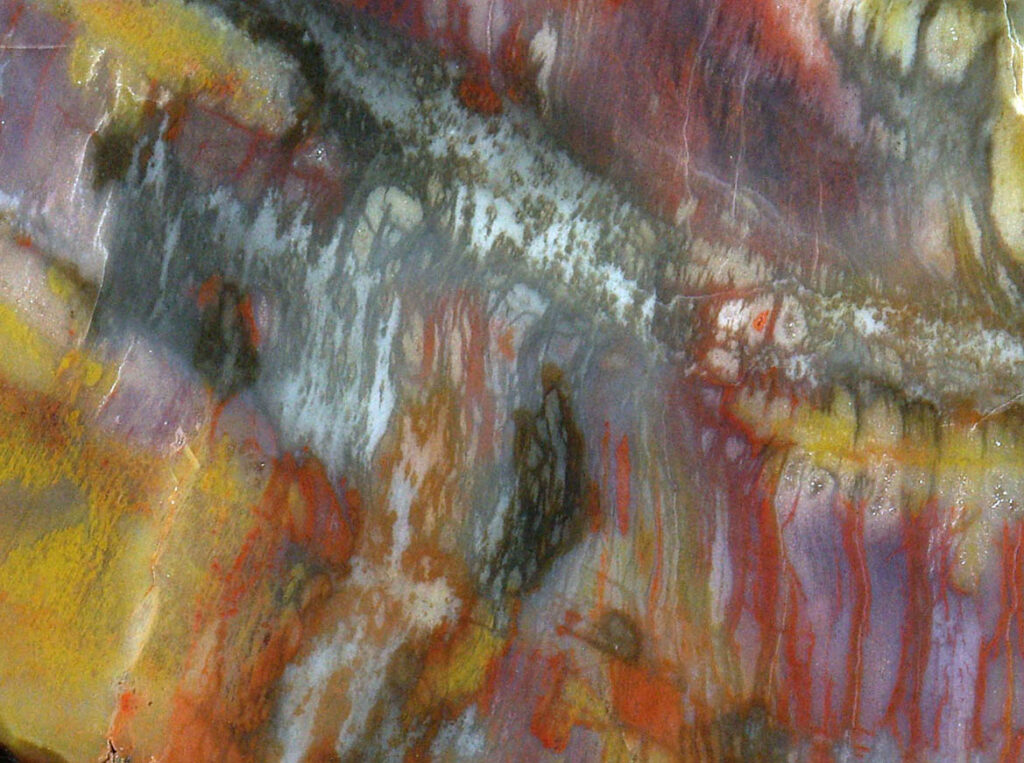
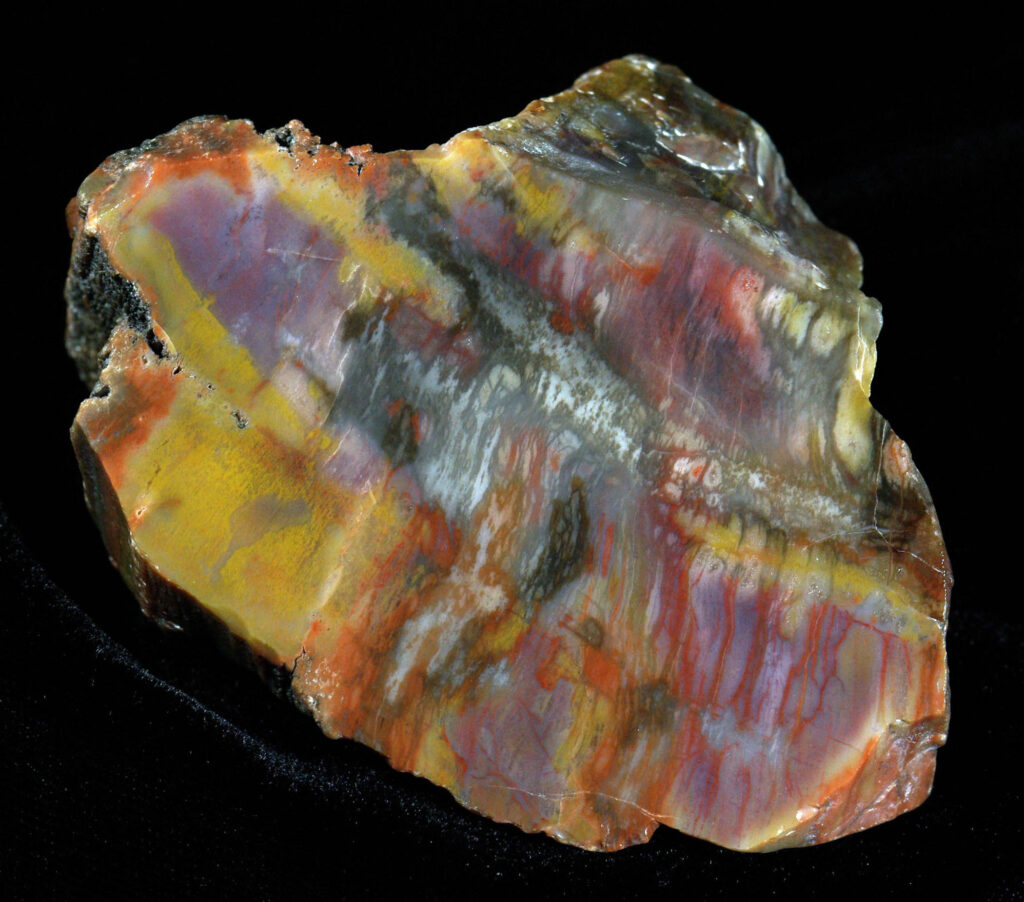
24. Henry Mountains, southern drainage. Jurassic, Morrison formation. Specimen round, cut and polished on one end. Great colors and patterns in a perfect specimen. No glue or filler. 8.5 by 5.5 cm polished face; 6 cm tall; fifteen ounces.
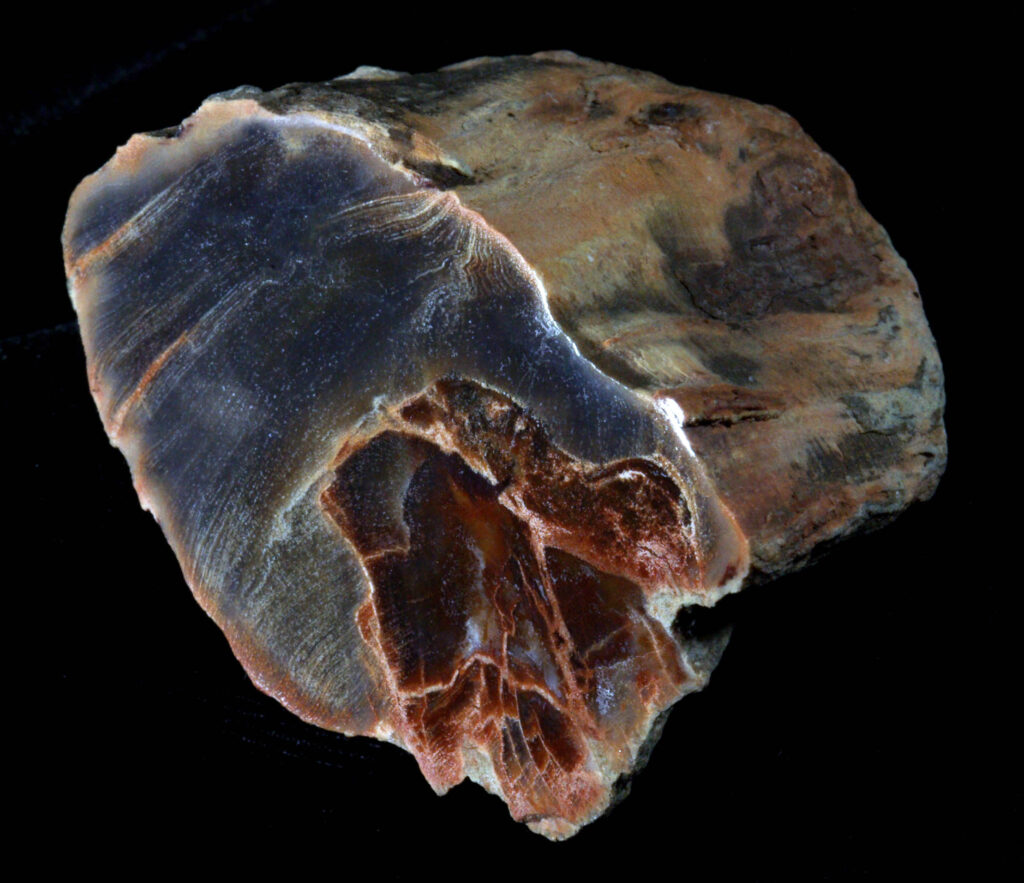
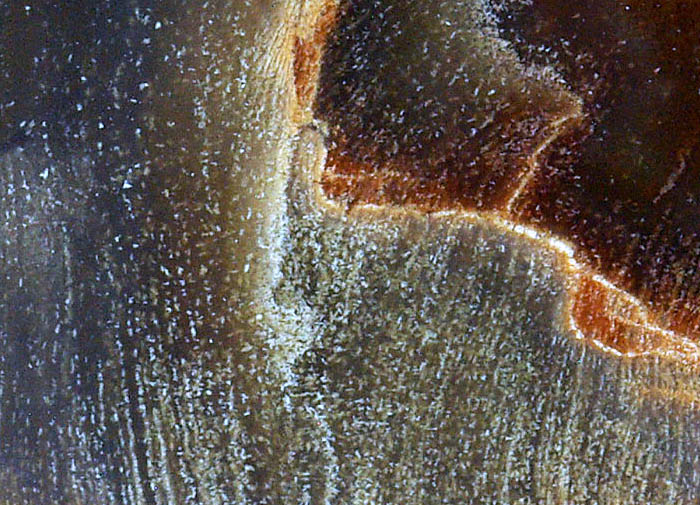
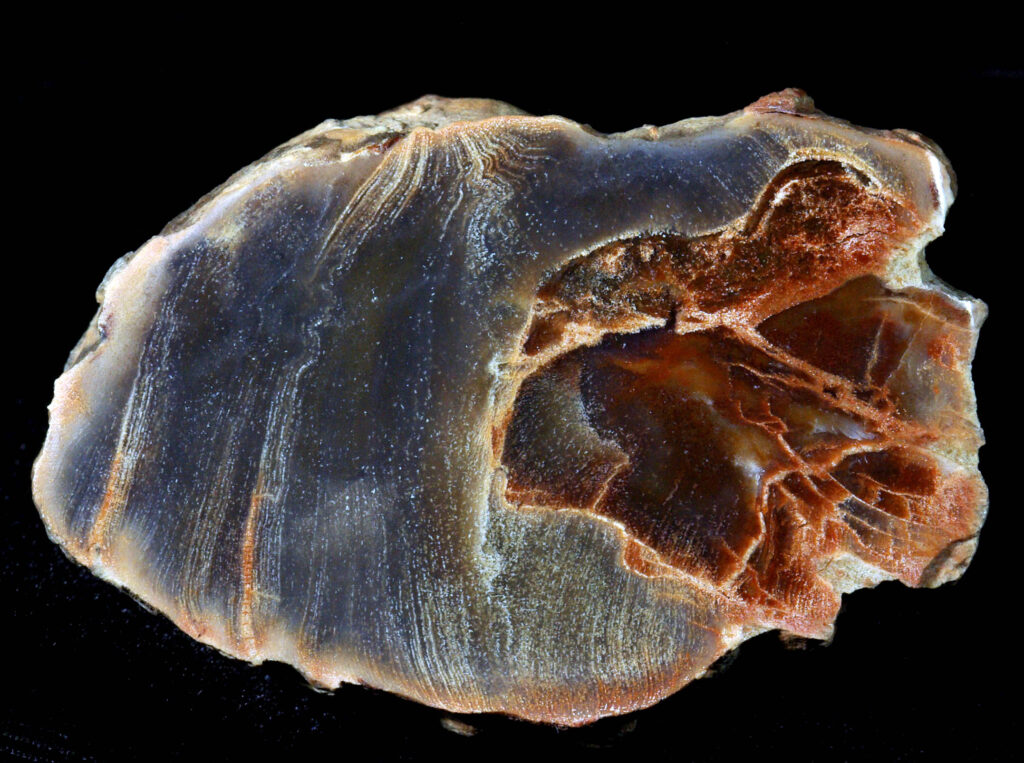
25. Champagne bubbles. Henry Mountains, southwestern drainage. Jurassic, Morrison formation. Specimen round, cut and polished on one end. As I undoubtedly have mentioned, one of the remarkable aspects of collecting fossils woods is that many types are so unique to the locality that they are found only there and nowhere else in the Universe. This is one of those types; I call it champagne bubbles. Stunning material. No glue or filler. 3.5 by 5.5 cm polished face; 4 cm long; four ounces.
